20 May 2020 Lowy Institute

Covid-19: The need to
aid Asia to open up
HAIDER A. KHAN PETER MCCAWLEY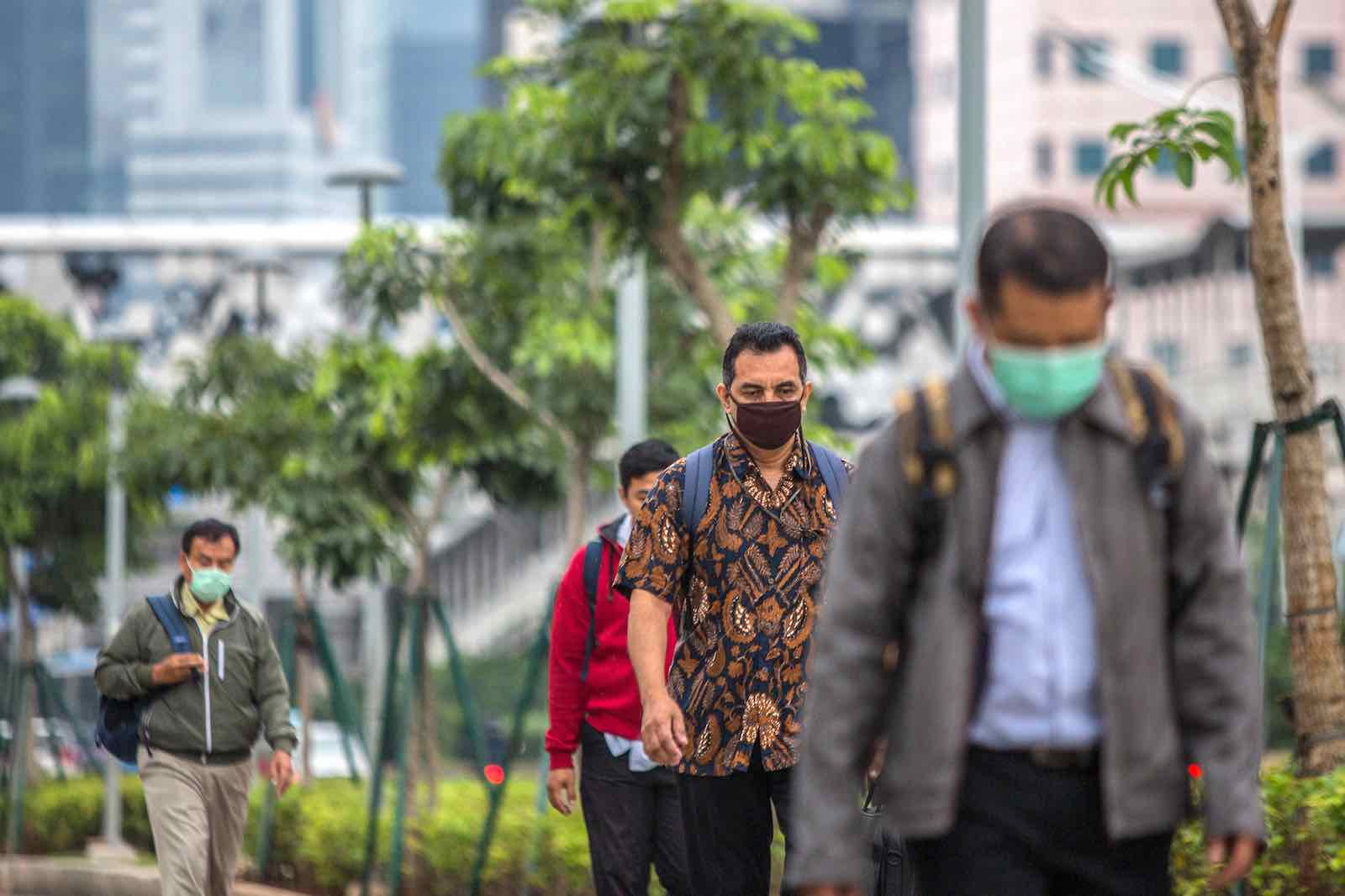 Jakarta, Indonesia (Asian Development Bank/Flickr)Published 20 May 2020
Jakarta, Indonesia (Asian Development Bank/Flickr)Published 20 May 2020
Two things about the public health and economic impacts of Covid-19 are now clear.
First, with just a few exceptions, most affected countries have suffered egregiously, and in many cases unnecessarily. This is a tragic situation.
Second, the response has been mainly left to the national governments and citizens of individual countries.
Sadly, at the international level, the response has been weak – much weaker than what is required. The urgent need now is for multilateral organisations and wealthy nations to respond with coordinated aid programs. The aid should go towards improving both public health and economic conditions in the affected countries. This applies to Asia in particular.
One example from Asia will suffice for now.
Bangladesh has had a good development record over a few decades. Nobel laureate Amartya Sen has compared the socio-economic development of Bangladesh favourably with other South Asian countries, including India. Yet the international aid package for Bangladesh to fight the current crisis has been small and has moved slowly.
Bangladesh is severely resource constrained and can only afford to spend US$12 per capita for health. Only $4 per capita can go towards public health programs. Rapid mobilisation of international aid is now vital.
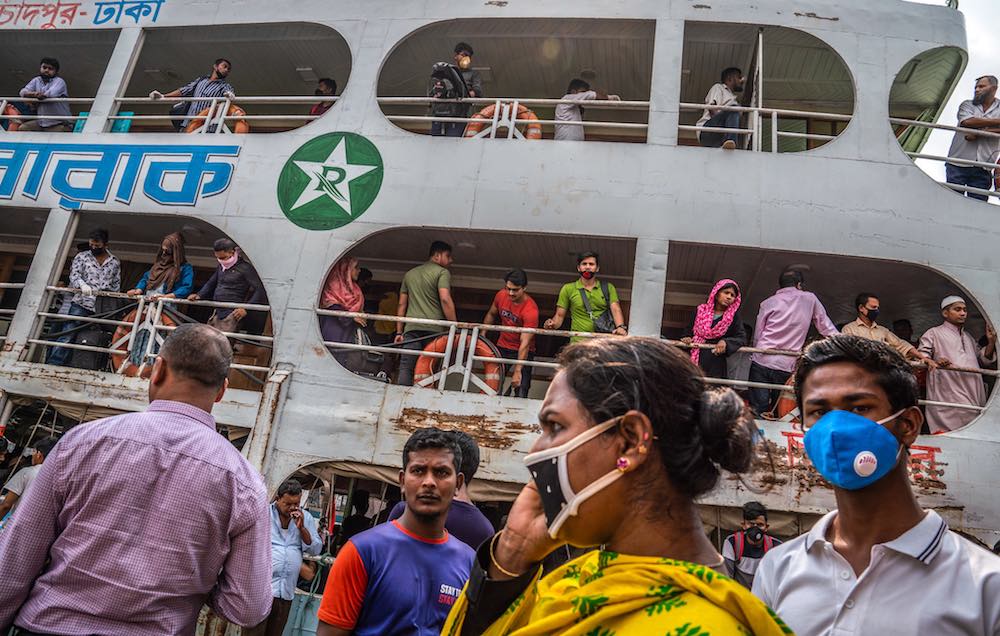
The country has a national emergency response plan, but mobilising resources for the plan and proper targeting will require both bilateral and multilateral assistance to reach the government and non-governmental organisations quickly. One of us has calculated – using the best available data – that a further package of at least $4 billion will be needed in order to stem the downward slide and restore a reasonable rate of economic growth.
The example of Bangladesh shows that large economic responses are needed from the international community. Urgent funding for humanitarian priorities is required as well. The detection, over the past few days, of Covid-19 in the huge Kutupalong refugee camp near Cox’s Bazar is an alarming development. The likelihood that the virus will now quickly spread poses grave risks both for the one million Rohingya refugees in the camp as well as for the wider Bangladesh community nearby. Developing countries in Asia are struggling to cope with widespread impacts of the crisis such as this as well as instability across international financial markets.
Networks related to rapid globalisation make it impossible to isolate one country from the rest of the world.
Strikingly, almost no Western donor country has shown interest in providing significant support to developing countries in Asia. Rich countries are unleashing staggering levels of resources to deal with problems inside their borders while most developing countries are hopelessly ill-equipped to cope.
For Western donor countries, this is not their finest hour. This collective response of Western nations sends a powerful message to developing countries – this time, you are on your own. The corollary is that Asian countries should look to expand their own forms of regional cooperation.
We can see from the rapid transmission of the virus across international borders that numerous key linkages now exist across the world. For example, trade and transportation networks, financial networks, and other networks related to rapid globalisation make it impossible to isolate one country from the rest of the world. We can pull up the drawbridges for a time but at some stage we will need to start lowering them again. It will be hard to know when to start doing this and which drawbridges to lower first.
Nevertheless, it is urgent to reopen economies as soon as possible. One of the most important global lessons of post-Second World War economic history is that openness is a key factor spurring growth.
In 2008, in a major report on international economic issues, the World Bank’s Commission on Growth and Development pointed to the importance of openness. Surveying the experiences of 13 high-growth economies since 1950, the Commission concluded that the essential shared characteristic and “the central lesson of this report” was that “during their periods of fast growth, these 13 economies all made the most of the global economy”.
Sustained growth, the Commission said:
was not possible before 1950. It became feasible only because the world economy became more open and more tightly integrated.
The past two months has seen an unprecedented array of barriers erected across the world, especially in wealthy countries. It is to be expected, of course, that governments will move to protect their citizens – but it is inevitable that much of the protection is also highly protectionist.
The danger now is that wealthy countries will become inward-looking. Countries such as Bangladesh will find that vital opportunities to grow their way out of the Covid-19 crisis are denied to them. Yet they will need continued access to international markets to pursue the export-oriented growth strategies that have been so successful in the past.
Thinking optimistically, we can hope that when the worst of the current crisis has passed, there will be much needed discussion about reforms needed in global and regional relationships.
But the global and regional international organisations and wealthy countries have a largely unmet responsibility to act quickly. They must move now so that channels of cooperation can be preserved even in the face of crisis today.
PNG and Covid-19: The
costs of economic stress
CATHERINE WILSON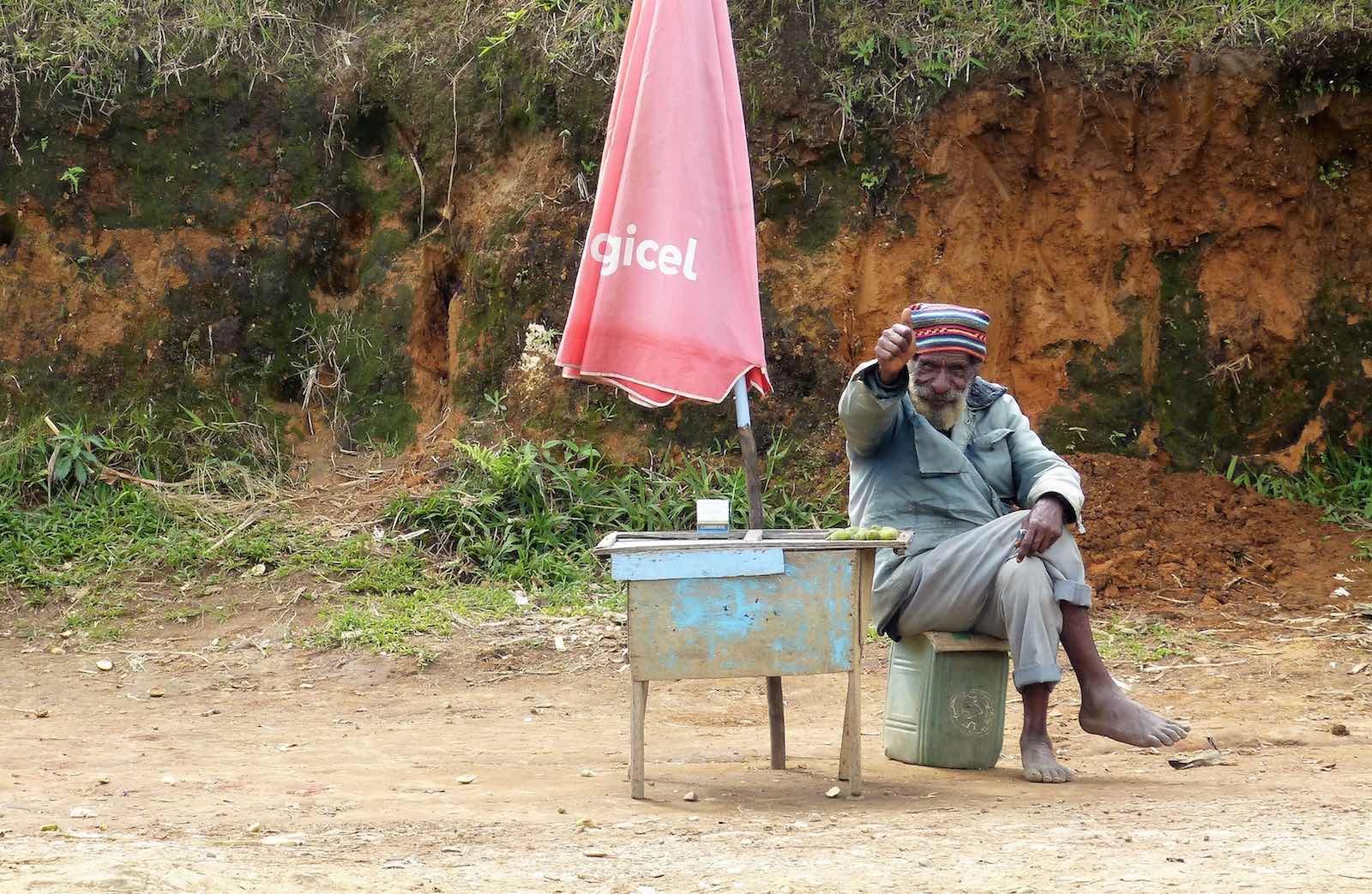 Enga Province, Western Highlands, PNG (gailhampshire/Flickr)Published 19 May 2020
Enga Province, Western Highlands, PNG (gailhampshire/Flickr)Published 19 May 2020
Papua New Guinea has grappled with economic instability for years, exacerbated by generally declining global commodity prices, increasing national debt and allegations of fiscal mismanagement. None of this is helped by high rates of population growth and unemployment. Now the coronavirus pandemic will deliver a further blow to the nation’s extractive economy as the world enters a recession and demand for resources drops.
Health-wise, the Pacific Island state is one of the more fortunate countries, so far, with only a handful of confirmed Covid-19 cases and no fatalities.
But the resource dependence which PNG has promoted since independence won’t be a strength. The returns of the sector, already associated with poor job creation and failure to drive inclusive development, will further diminish. Before the virus outbreak, resources contributed 29% to the country’s GDP, and more than and 10% of government revenues. But in recent years volatile world markets and too much spending in advance of revenue delivery, leading to mounting debt, have significantly wiped out the anticipated benefits for development. A sovereign wealth fund intended to secure long-term revenue savings is not yet operational.
The government was planning record expenditure this year. Yet the Covid-19 outbreak has now left a glaring 2 billion kina (A$890 million) budget shortfall and national debt could surpass 40% of GDP by the end of the year. Meanwhile the country’s growth is forecast to decline to -0.2% this year.
This, as well as the state of emergency provisions, will affect the nation’s 8.6 million people, of whom about 40% already live below the poverty line.
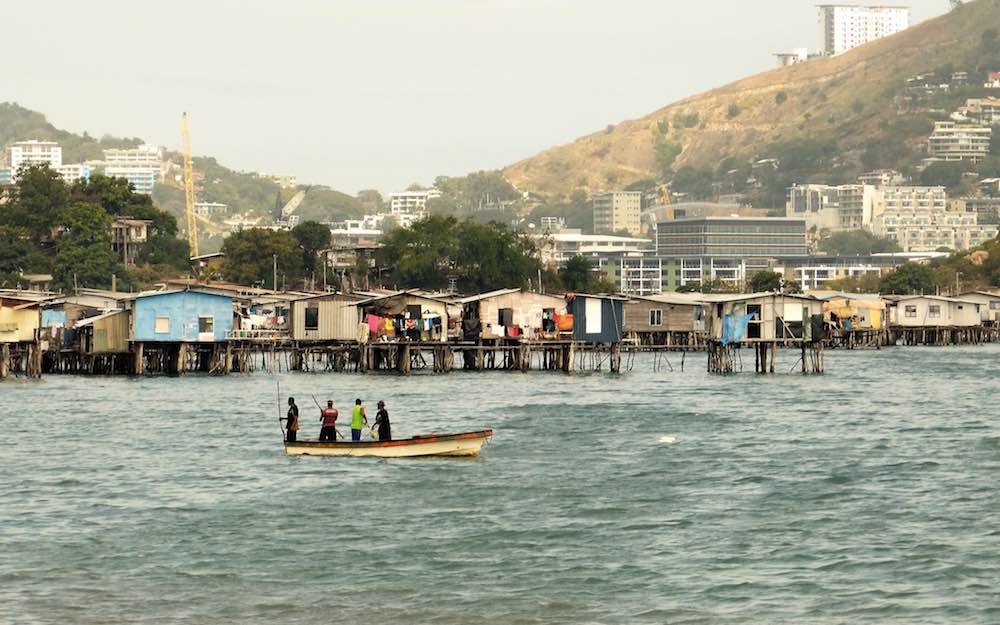
Local PNG economist, Busa Jeremiah Wenogo, has long advocated the development of small and medium enterprises and the informal economy in PNG to boost sustainable livelihoods. But he has warned that social distancing and banning of gatherings places “almost 80 percent of our nation’s workforce in the informal economy in a dire situation”.
Likewise, in a recent interview Paul Barker from PNG’s Institute of National Affairs identified the vulnerability of those with greater dependence upon cash crops for their livelihoods. “[People] living in areas of higher population density, including on oil palm settlement schemes [have] little, if any, land set aside for food production,” Barker told me.
In rural communities, where more than 80% of people reside, subsistence agriculture on customary-owned land remains the bedrock of household self-sufficiency and this will go a long way to maintaining rural food security. The country’s customary or traditional governance also plays an important role in local-level resilience. In times of great need, many families and communities instinctively turn to their head of clan or village chief for direction and support, rather than politicians. It’s likely such coping strategies will come to the fore during the weeks and months ahead.
However, in more crowded urban centres, where people don’t have the same access to land or social support structures, loss of incomes and poor food security could lead to a rise in crime.
Nothing incenses Papua New Guineans more than the suspicion or knowledge that their lives are stricken by hardship because of high-level corruption.
Large-scale violence or conflict is a different scenario. In PNG’s post-Independence history, apart from tribal warfare, this has been mostly connected with local grievances about the nature of foreign involvement in the economy. The most obvious and deadly example was the Bougainville civil war (1989-1998), triggered by anger over environmental damage and inequity associated with the then foreign-owned Panguna copper mine. More recently, landowner grievances about the Exxon Mobil co-venture, PNG LNG, and the Barrick Gold majority-owned Porgera gold mine in the highlands have resulted in violent skirmishes.
Having witnessed decades of under-development alongside massive resource projects, there is nothing that incenses Papua New Guineans more than the suspicion or knowledge that their lives are stricken by hardship because of high-level corruption. A special grevience is the idea of foreign companies taking the land’s wealth and at the same time leaving them poorer. For most citizens, there is a difference between suffering and hardship which has a comprehensible cause and that which is the result of social injustice.
Despite Covid-19 placing an enormous strain on our Pacific neighbour, Barker’s assessment appears sound, that “there should be no reason for chaos or PNG turning into a failed state, although many of its institutions can long be deemed as failing, or severely deficient.”
And though it is too early to judge, further political strength may come from Prime Minister James Marape, who came to power last year. Maraphe has adopted a more assertive stance with foreign investors in resource projects, claiming to better represent his nation’s interests. The emergence of Covid-19 coincided with Marape’s attempt to end Barrick Gold’s involvement in the Porgera mine and amend the terms of the proposed P’nyang gas extension project agreement with Exxon Mobil. Despite the courts ordering the government back to negotiations with Barrick Gold, Marape’s approach is what locals have demanded for a long time. The security and “trust” environment for foreign investors won’t improve unless Papua New Guineans see better returns.
PNG is still ranked a nation of “low human development”: life expectancy is 64 years, barely a quarter of the population have access to reliably mains electricity, and just over half of people in urban areas have improved sanitation (in rural areas, this the rate is less than 15%).
So the pandemic, if anything, highlights the urgency of maintaining a focus on diversifying the nation’s economy to better ride global events and uncertain world markets. Diversification became a core part of the government’s budget policy two years ago. Before the coronavirus outbreak, public expenditure was tuned to stimulating agriculture and the private sector, alongside investment in infrastructure and services, such as roads, power, and digital connectivity.
The government is making cautious moves to lift some of the internal lockdown restrictions. This will lead to improved conditions for the local economy. But it will be important, in carrying the country through this crisis and preserving stability, to not lose sight at the national level of the long-term needs, such as rigorous fiscal management, and more diversified and resilient employment for millions of Papua New Guineans.
Constitutional questions
over Solomon Islands’
coronavirus crackdown
JOSEPH D. FOUKONA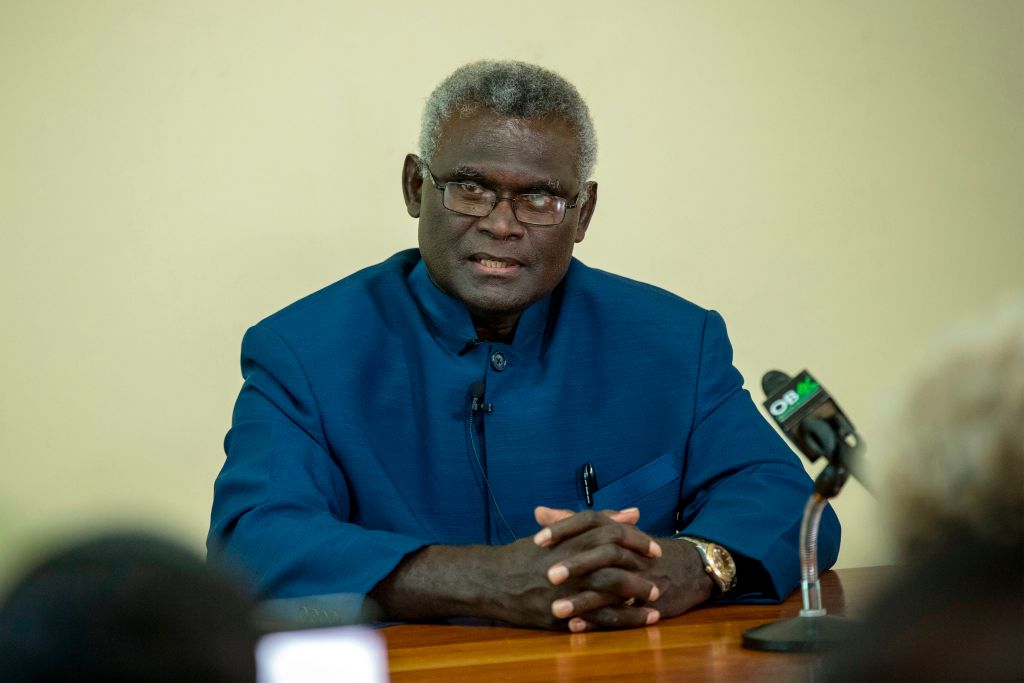 Solomon Islands Prime Minister Manasseh Sogavare (Robert Taupongi/AFP via Getty Images)Published 18 May 2020 10:00
Solomon Islands Prime Minister Manasseh Sogavare (Robert Taupongi/AFP via Getty Images)Published 18 May 2020 10:00
On 25 March, following a government decision, the Solomon Islands Governor General Sir David Vunagi, declared a state of public emergency in response to the Covid-19 pandemic. Solomon Islands remains one of a few countries worldwide that is still without a reported case of the novel coronavirus. The Emergency Powers (Covid-19) Regulations 2020 authorised Prime Minster Manasseh Sogavare to make orders to protect the country from the pandemic and to prevent the spread of virus if there were cases. A travel ban was imposed, stopping international flights (except cargo flights), and schools closed. The maritime border with Papua New Guinea between Shortland and Bougainville was also shutdown.
The government’s decision to invoke a state of emergency was widely accepted as necessary in order to protect the country from Covid-19. On the face of it, the decision was also in line with the constitution.
But there is now an urgent need to examine whether the government has politicised the state of emergency, and whether its behaviour really is constitutional after all.
The regulations give the PM the power to make orders to restrict the movement of people, vessels and aircrafts, restrict assembly, suspend the media and declare a public place as emergency zone. These restrictions could infringe people’s fundamental rights, such as the right to movement, free association and freedom of expression as provided for by the constitution.
The current government’s position is that the Covid-19 Regulations restrict the fundamental rights enshrined in the Constitution. However, such restriction is not absolute. As stated under section 16(7) of the constitution:
Nothing contained in or done under the authority of any law shall be held to be inconsistent with or in contravention of the [fundamental rights provisions under the constitution] to the extent that the law in question makes in relation to any period of public emergency provision, or authorises the doing during any such period of any thing, that is reasonably justifiable in circumstances of any situation arising or existing during the period for the purpose of dealing with that situation.
The High Court of Solomon Islands in Douglas v Attorney General [1999] SBHC 147 explained section 16(7) as follows: “If anything contained in or done under the authority of any law, enacted pursuant to the state of public emergency, is shown not to be reasonably justifiable in the circumstances etc., it may be deemed unconstitutional and invalid.”
The key point is the idea that restrictions on fundamental rights must be “reasonably justifiable … for the purpose of dealing with that situation”.
Recent events raise serious questions about what is reasonable, and whether the government’s actions are focused foremost on dealing with the pandemic.
The question therefore must be “what is reasonably justifiable” for the purpose of dealing with the Covid-19 pandemic – which is the situation for which the state of public emergency was invoked. Recent events raise serious questions about what is reasonable, and whether the government’s actions are focused foremost on dealing with the pandemic.
An example is questions about logging production around the country and phosphate mining in Rennell, which has continued, including with overseas shipments, despite the declaration to keep borders closed. The Bulk Carrier Vessel MV Worship Light was cleared by customs to offload cargo near Honiara despite earlier allegedly violating “international and domestic maritime regulations”. The Western Province Premier, David Lani Gina also questioned why another container ship was allowed to dock at Noro without undergoing a 14-day quarantine as required by the Covid-19 regulations. These are instances of not applying the regulations with potential to undermine the purpose of preventing the spread of the Covid-19 virus.
Other cases have also raised questions about what could be “reasonably justified” as related to preventing the spread of the coronavirus. Claude Posala, a senior medical officer who was outspoken on health issues, lost his job on 6 April for having allegedly breached regulation 26 because his social media posts were purportedly “inflammatory against the government”.
More recently, the national government threatened to suspend the Malaita Provincial Government (MPG) because the province’s Premier, Daniel Suidani was allegedly making statements against the government’s efforts to fight against Covid-19. This included cautioning the government about obtaining Covid-19 equipment from China. Suidani had earlier drawn the ire of the national government for opposing the diplomatic switch to China last year, yet he has described the latest threats as unsubstantiated and based on misinterpretations of the law.
After the opposition leader Matthew Wale cautioned the government not to suspend the MPG “at a time when unity is needed”, the government responded claiming that Wale’s statement was intended to “create disharmony” and “provoke animosity against the government during [the] state of emergency period.” The government said Wale “would be referred to the police for breaching Covid-19 emergency measures”.
Such instances suggest the government has politicised the state of emergency, using the powers to marginalise anyone questioning its decisions, while also being selective in its application and enforcement of the regulations. The Covid-19 regulations, on their face, are constitutionally sound, and may allow for orders that may restrict fundamental rights. Yet the application and enforcement still has to be constitutional, which in this case means applying the law in a manner reasonably justifiable for the purpose of dealing with the Covid-19 pandemic.
COVIDcast Episode 11: Dave Sharma
MP on COVID-19 and Pacific relations

Published 15 May 2020
In Episode 11 of COVIDcast, Jonathan Pryke, Director of the Pacific Islands Program, sat down with Dave Sharma, Liberal member for the federal seat of Wentworth, to discuss strengthening ties between Australia and the Pacific, and a potential Australia‒Pacific travel “bubble”. Sharma has a particular interest in the Pacific region, having served as a diplomat in Papua New Guinea, and is co-convener of the recently formed Parliamentary Friends of the Pacific.
Sharma began by outlining his proposal that the “trans-Tasman bubble” – opening trade, commerce and tourism links between Australia and New Zealand – be extended to Pacific nations. Sharma said Covid-19 had been well controlled in the region with a low number of cases, and he focused on the fact that tourism and trade with Australia and New Zealand was an “economic lifeline” for Pacific neighbours. He noted the heavy toll the virus had taken on the economies of the region, citing Fiji as an example:
About 40% of its GDP comes from tourism and that’s basically gone to zero through this crisis. In Australia we’re looking at an economic contraction of somewhere in the high single figures, but Fiji is looking at the 20‒30% range.
On the question of the global impact of the virus, Sharma said, “It’s much more feasible to see these sorts of normal commerce, trade and tourism links re-establishing themselves between Australia and New Zealand and the Pacific than it is with other parts of the world”, although he cautioned that a Pacific travel bubble would not be in place before the end of 2020. He also noted that relaxing travel restrictions would happen sequentially: “Domestic travel first, Australia and New Zealand travel next, and then more broadly into the Pacific.”
Pryke raised debate about Australia’s migration program and how proposed changes might affect Pacific nations. Sharma highlighted the importance of the Pacific Labour Mobility Schemes, describing it as a “win‒win” for the countries involved, in sharing skills, facilitating remittances, and addressing a shortage of workers in certain sectors.
Pryke and Sharma also discussed what might be next for the Autonomous Region of Bougainville in Papua New Guinea, what else Australia is and should be doing to respond to Covid-19 in the Pacific, and how Australia’s ties with the region can be further strengthened.
COVIDcast is a weekly pop-up podcast hosted by Lowy Institute experts to discuss the implications of Covid-19 for Australia, the Asia-Pacific region, and the world. Previous episodes are available on the Lowy Institute website. You can also subscribe to COVIDcast on Apple Podcasts, listen on SoundCloud, Spotify, Google podcasts, or wherever you get your podcasts.
To act, or not? Al-
Shabaab’s response to a
Covid-19 crisis in Somalia
STEPHANIE CARVER SAMANTHA KRUBER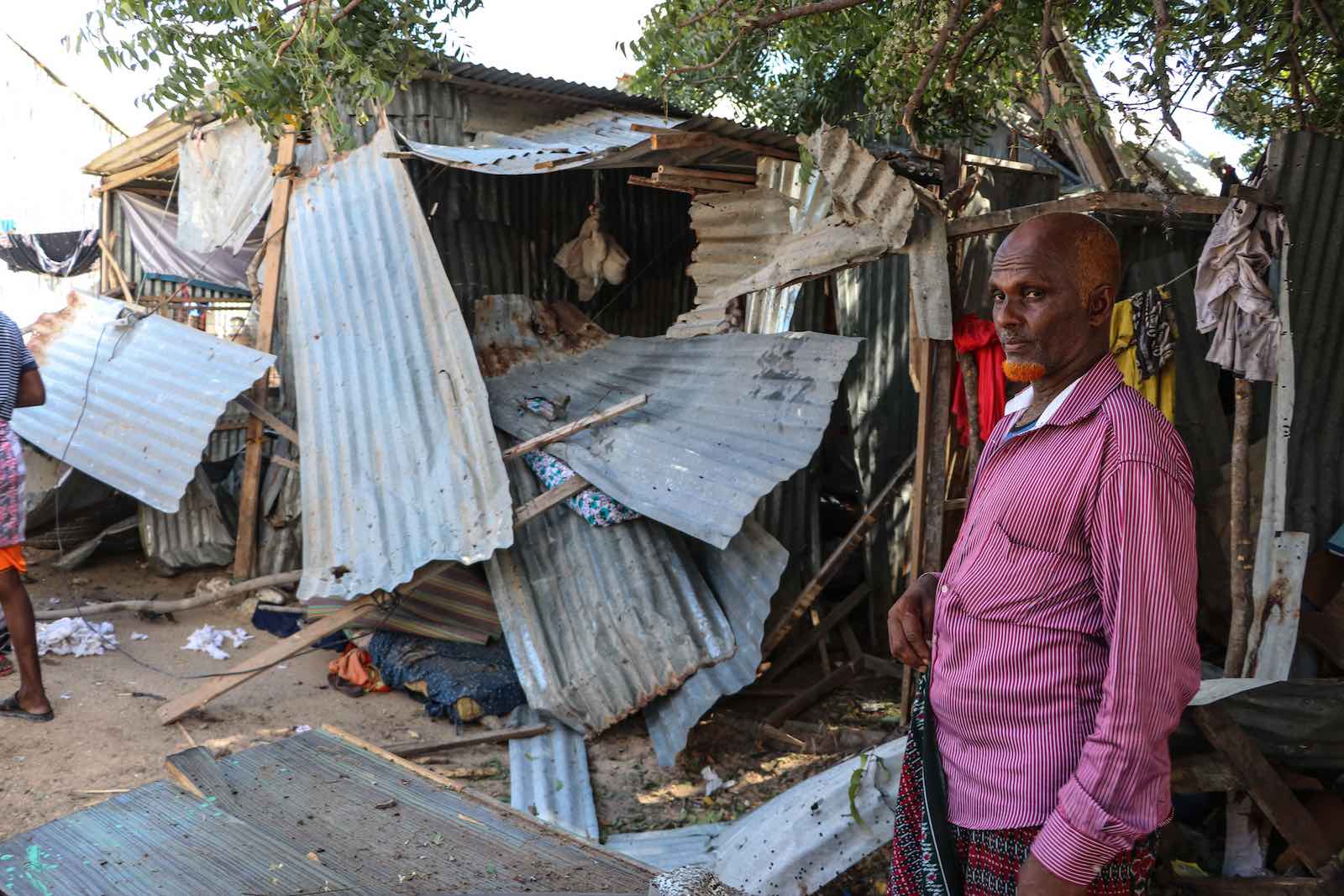 A destroyed house following a suicide bombing attack at a nearby tea shop in Mogadishu, Somalia, on 25 March Abdirazak Hussein Farah/AFP via Getty Images)Published 15 May 2020
A destroyed house following a suicide bombing attack at a nearby tea shop in Mogadishu, Somalia, on 25 March Abdirazak Hussein Farah/AFP via Getty Images)Published 15 May 2020
In the wake of the Covid-19 pandemic, regional security agencies have flagged the potential for a new wave of violent extremism to emerge within Somalia. World Health Organisation figures show that Somalia has had more than 1200 confirmed cases of Covid-19 and more than 50 deaths. However, the actual number of cases is likely far higher due to limited testing capacity and lack of skilled health workers.
The pandemic has presented the opportunity for groups to ramp up both rhetorical and physical attacks while governments are feeling particularly weak and distracted by the virus, with the dual objectives of furthering their own respective ambitions and expanding their support base. How, and with what effect, al-Shabaab, Somalia’s most well-known violent extremist group, will operate under these new conditions is yet to be fully realised. However, there are a number of potential trajectories that may emerge.
Exploiting conditions and strengthening networks
Within Somalia itself, the current conditions would be easy for insurgent groups to exploit. Tensions have been running high in the capital after the recent police killings of two citizens while enforcing Covid-19 restrictions on 24 April, culminated in widespread protests over the apparent impunity of the government security forces. And the timing could not be worse, as the frustration over price hikes in food prices in the lead up to Ramadan fans civil unrest. While escalating food costs around the Holy month of Ramadan is not unique, the pressures of the Covid-19 lockdowns mean that the price spikes are higher at a time when the income for many is drastically reduced.
What benefit does this civic unrest have for al-Shabaab? The political turmoil could be harnessed to radicalise and recruit new members, to promote a view that the government of Somalia’s President Mohamed Abdullahi Farmajo has mishandled the Covid-19 crisis, and to present themselves as an alternative.
The Covid-19 crisis might present a new opportunity for al-Shabaab to tighten it grip and expand its control over regions.
So far, the group appears to have taken the pandemic as an opportunity to escalate operations, with a number of attacks reported throughout the month of April. They likely will also capitalise upon existing resentment toward the government’s handling of the pandemic.
The continuing lockdown and price escalations coupled with the reduced earning capacity may push more people to turn to informal networks. In times of crisis, research has indicated that networks have proven invaluable lifelines for everything from ensuring survival, and a means of income to a sense of normalcy. Covid-19 could also see al-Shabaab grow its support network through the provision of much needed services. Extensive informal networks already exist within Somalia, and the prolonged lockdown risk growing these networks further. These networks operate without state regulation or state control and could be readily exploited by al-Shabaab. Indeed, the Covid-19 crisis might present a new opportunity for the group to tighten its grip and expand its control over regions.
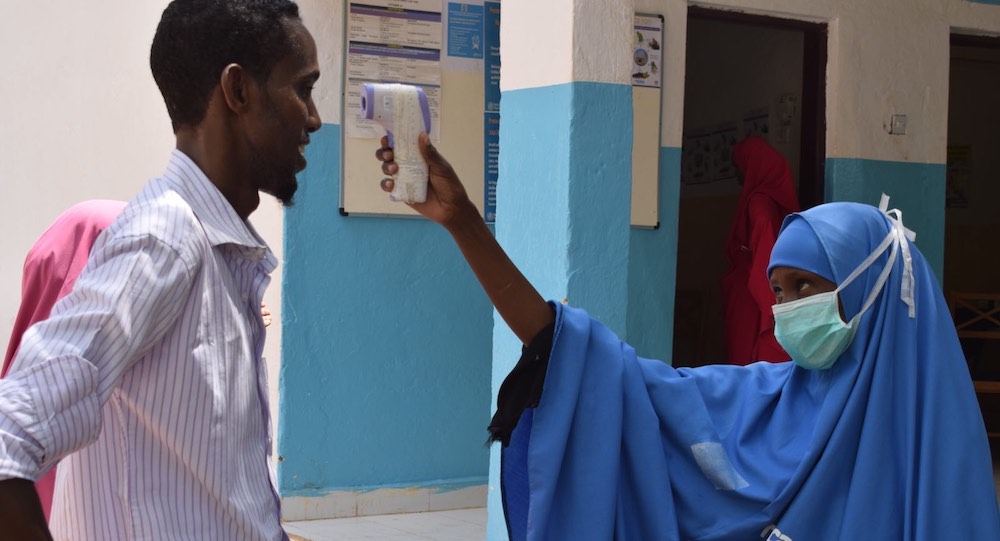
Targeted messaging
UN Secretary General António Guterres has called for a “global ceasefire” as the world faces the Covid-19 pandemic. While this has seen some modest success (for example, the Saudi coalition’s unilateral ceasefire in Yemen), it seems unlikely this will resonate with non-state jihadist groups, including al-Shabaab. The Islamic State has already encouraged its supporters to attack Western targets while they are weakened and distracted by the pandemic.
Al-Shabaab has also taken the opportunity to bring Covid-19 into their broader anti-Western narrative, blaming the spread of the virus on “the crusader forces who have invaded the country and the disbelieving countries that support them”. As the pandemic continues, it is yet to be seen whether al-Shabaab will follow the example set by al-Qaeda, with whom they have been affiliated since 2009, which has focused on providing health guidance and condemning the immorality they argue caused the pandemic, rather than actually encouraging violence as Islamic State has done.
The cost of doing nothing?
However, there may be other reasons for al-Shabaab to remain away from the spotlight during the crisis. Violent overtures during this time might be poorly received, and rather than encouraging recruitment, may in fact result alienate the public. Indeed, this very scenario occurred in previous crises in the Horn of Africa. The group has previously caused more harm than good to its reputation during crises, such as during the 2011 famine when it denied there was a famine and banned aid workers from entering Shabaab-controlled territory, turning many of their former supporters against them, and it is yet to be seen if the group has learned from past mistakes.
Alternatively, the group might not have the resources to continue a widespread campaign in light of the Covid-19 pandemic. The group’s extensive networks of taxation – a network that allegedly extends into the diaspora – may be feeling the pinch under market contractions both within Somalia and abroad. This may lead the group to press pause on their campaign of terror for the foreseeable future.
Al-Shabaab has a number strategic choices that could all likely serve the group well, be it using the pandemic to reiterate the failings of the current government, or extend and strengthen existing informal networks, or promote their messaging. Even if the group choose not to act, there is still the possibility of benefit. Unfortunately, al-Shabaab have proven themselves past masters of exploiting political turmoil, and the current crisis provides the group with another opportunity.
The health challenge in PNG is
far greater than Covid-19 alone
ISHANI KALUTHOTAGE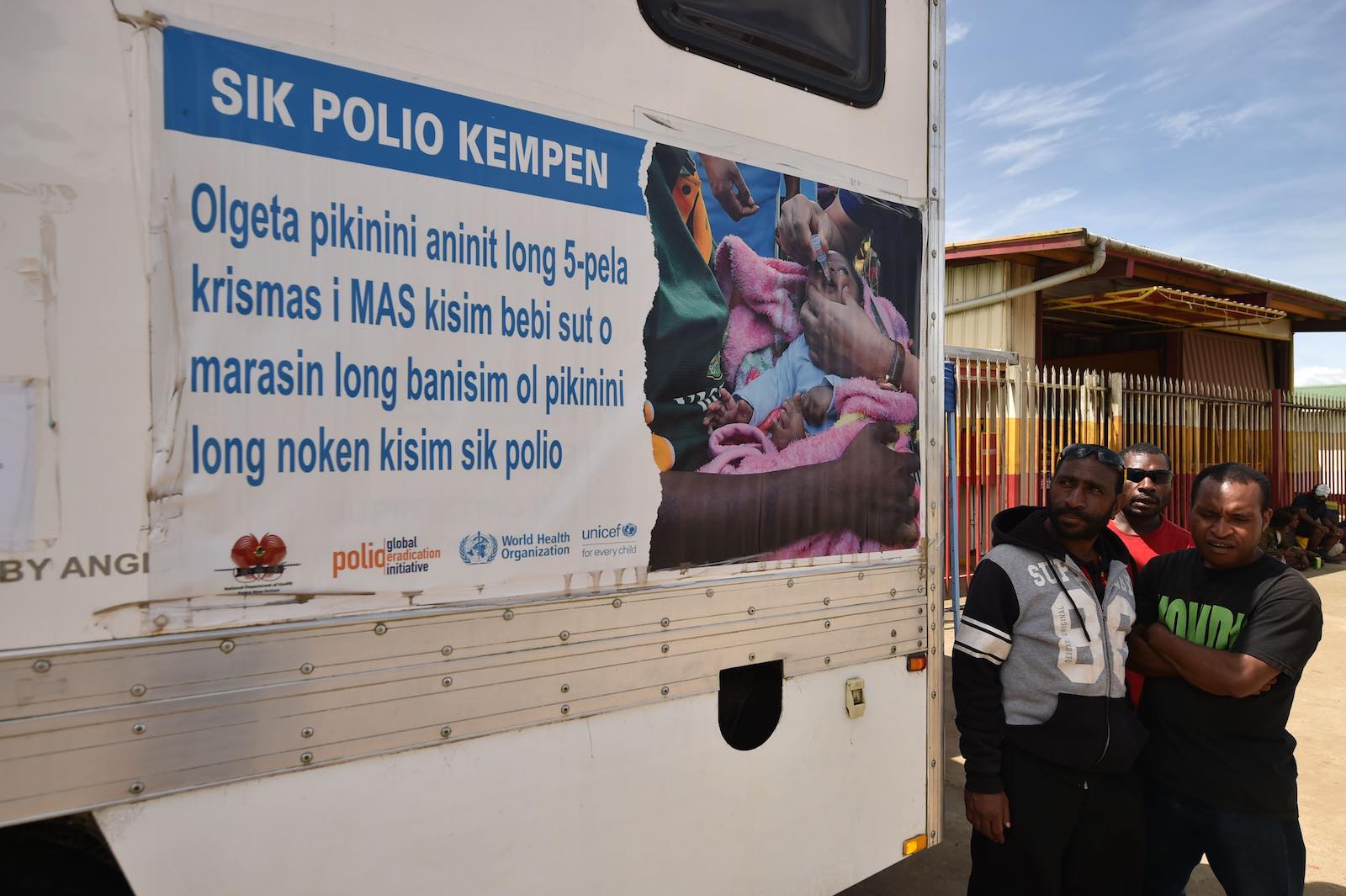 A mobile polio vaccination clinic on a street in Mount Hagen in the Western Highlands, PNG (Peter Parks/AFP via Getty Images)Published 13 May 2020
A mobile polio vaccination clinic on a street in Mount Hagen in the Western Highlands, PNG (Peter Parks/AFP via Getty Images)Published 13 May 2020
Papua New Guinea remains one of the most dangerous places in the world to give birth.
Many women and girls walk kilometres for days when heavily pregnant in order to access health facilities. Just ten years ago, women and girls in rural districts would only visit a clinic as a place “to go die”, not to deliver a baby. Stigma and poor health literacy added to the fear – with the country still the hotspot for the world’s most drug-resistant tuberculosis, alarming malaria rates, and recent polio outbreaks. Even today, for every 100,000 live births in the country, 215 women die in complications resulting from labour.
Now add to this the danger of Covid-19.
The PNG health system should fear a larger indirect death toll than from the coronavirus pandemic itself. The myths and misinformation associated with Covid-19 are only going to add to the barriers of receiving a supervised and safe birth. PNG has a population of more than 8 million, with health challenges unfortunately as diverse as its 800 different languages. Vaccination rates are poor, and with people fearful of Covid-19, women and girls will deliver babies in the bush, often alone.
The challenge is to find a balance to prevent the spread of Covid-19 while avoiding the cost to other essential health services.
Studies of the Ebola epidemic in Sierra Leone revealed a 34% increase in maternal mortality rates in health clinics alone during the outbreak. This followed stress on the medical supply chain and transport of drugs and equipment within the country. PNG faces the same risks should Covid-19 overburden the health system. Relatively simple treatments such a medications, gauze, or IV drips can stop a mother from bleeding to death, but it all depends on these potentially life-saving materials being available in rural health clinics.
In pre-Covid times, tuberculosis had been feared as the world’s biggest killer disease, claiming more than 4000 lives a day globally. Amid the coronavirus pandemic, we must not forget that tuberculosis remains the biggest killer, and the most drug-resistant strain, XDR-TB, is silently spreading in PNG. Millions of dollars and years of research have been dedicated towards tuberculosis programs in PNG, and this cannot go to waste as a consequence of the Covid-19 pandemic. Strict tuberculosis treatment regimes are still required, with complete patient compliance. Otherwise, tuberculosis prevalence will spike, and with it worsening drug resistance and ultimately more deaths.
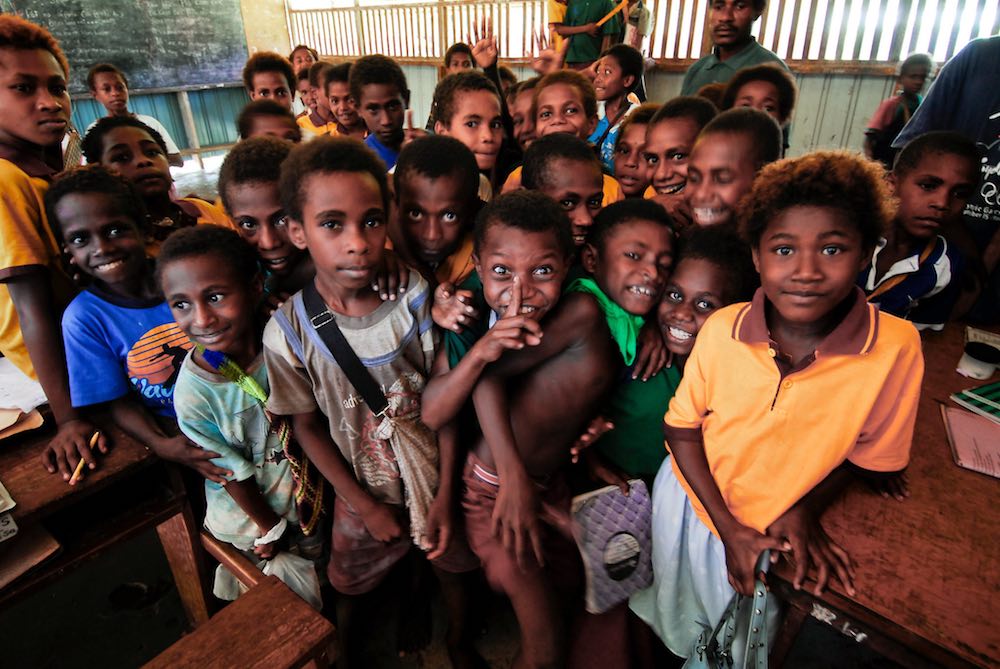
Chronic disease is a major challenge across the Pacific. Malaria is a constant threat, especially in PNG and Solomon Islands, which accounts for more than 90% of cases in the Western Pacific Region, according to the World Health Organisation. That figure could climb if Covid-19 disrupts mitigation efforts, such as the spraying of insecticides, use of treated nets, or access to malaria testing.
Immunisation rates also remain stubbornly low. Headline outbreaks demonstrate the dangers, such as in 2018 in PNG with polio – a disease once thought all but eradicated – or in Samoa with a devastating measles episode. Covid-19 has the potential to severely disrupt what should be routine immunisation programs by gobbling up resources and putting a stop to vaccination patrols due to travel restrictions. The damage from this disruption may not become evident for five or more years.
So for PNG, even as the government seeks to contain the spread of coronavirus, now is the time to emphasize that immunizations are an essential health service. This effort will ultimately reduce the burden on the PNG health system.
All this illustrates that the challenge is to find a balance to prevent the spread of Covid-19 while avoiding the cost to other essential health services. The virus not only attacks people, but the systems people have built in an effort to support the most vulnerable. The burden on an already weak health system will be immense and long-lasting.
PNG is unlikely to reach the Sustainable Development Goals target of reducing maternal mortality rates by 2030, along with the lowering the cost of other major diseases. If any good is to come from the Covid-19 pandemic, hopefully it will be the chance for PNG to reassess the deep-seated problems in its health system and governance – and work towards improving healthcare access for all.
Creating a Pacific bubble
JOE RAFALOWICZ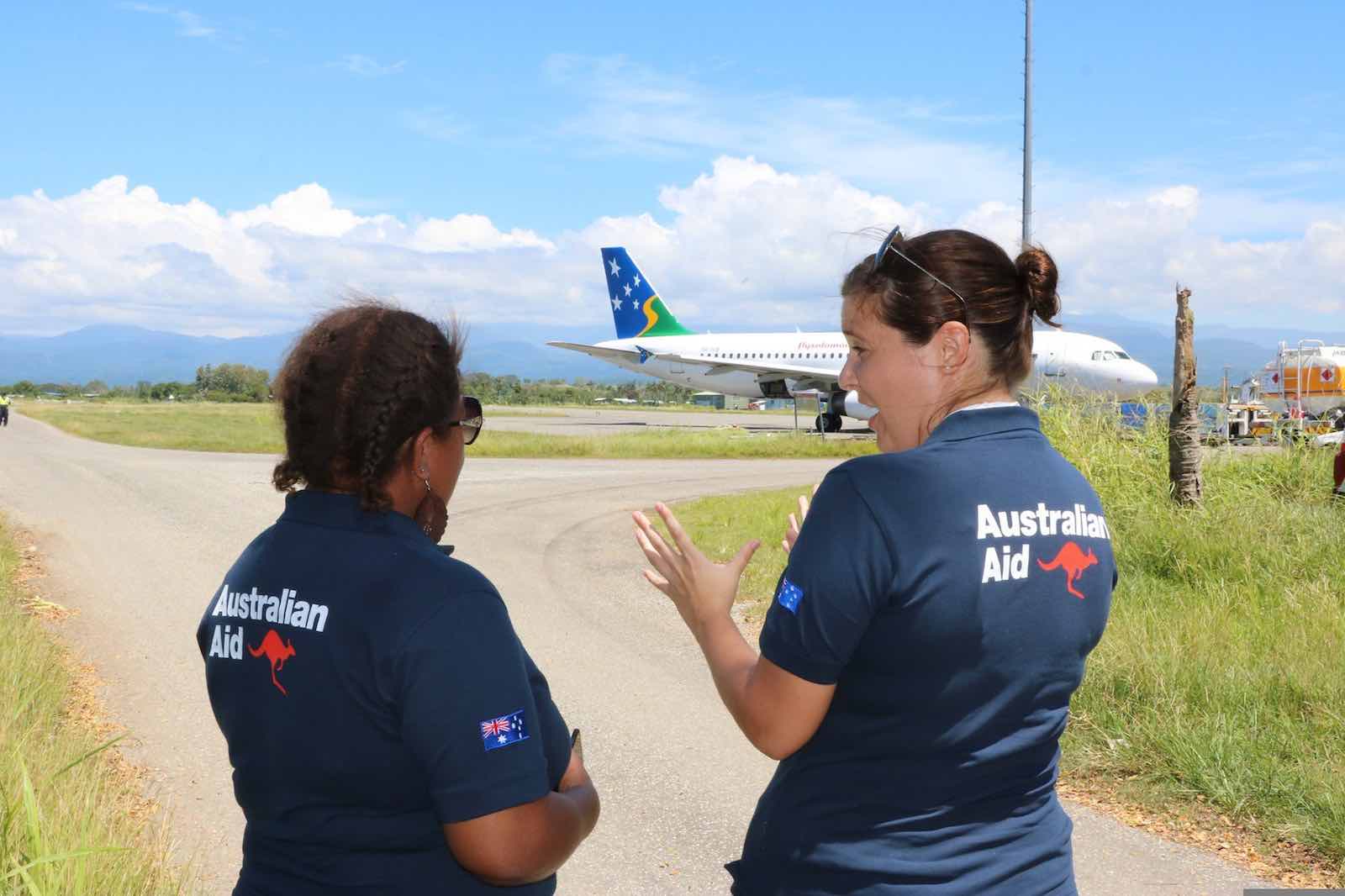 An Australian funded Covid-19 support package arrives in Solomon Islands last month (DFAT/Flickr)Published 7 May 2020
An Australian funded Covid-19 support package arrives in Solomon Islands last month (DFAT/Flickr)Published 7 May 2020
The success in containing the Covid-19 pandemic in both Australia and New Zealand has led to a novel idea – the opening up of trans-Tasman travel as long as each country is able to keep infections under control. It would be a ray of hope and normalcy, and an economic plus for both parties. While so far no Pacific countries are included in the “bubble”, Minister for International Development Alex Hawke has indicated they could well be next – provided they continue to successfully manage the pandemic.
Early signs are positive. Vanuatu and Solomon Islands have had no infections at all, while Fiji had just 18 cases, with no new infections in the last two weeks. New Caledonia has not had a new case in several weeks. Tonga has had no cases, is even looking at re-opening night clubs.
The benefits of a regional bubble extending to the Pacific go beyond increasing the number of sunny holiday spots available to Australian tourists. A relaxation on travel restrictions would have an enormous impact on the lives of children in the region. Australia considers the Pacific “our family” – and its Pacific Step-up strategy has largely been about entering a new chapter in the relationship with these neighbours. Here is an opportunity to do just that.
Countries in the Pacific are seizing this moment to increase regional cooperation. The Pacific Islands Forum, of which Australia is a member, has invoked the Biketawa Declaration to respond to the crisis, the same collective response instrument that was used when Australian and New Zealand peacekeepers were deployed to Solomon Islands. The Forum has compared the response to Covid-19 to the Tuvaluan concept of “te fale-pili” – meaning houses which are close to one another have a moral responsibility to protect each other in times of hardship. The region is ready to step up, and is asking Australia and New Zealand to join them in doing so.
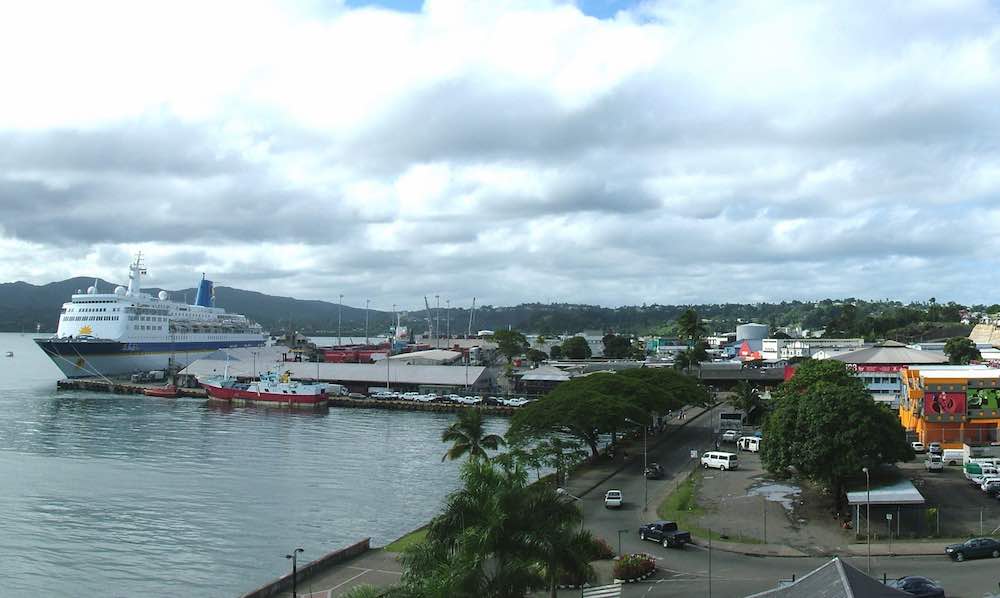
Fiji has one of the lowest rates of extreme poverty in the Pacific yet its prosperity is built almost entirely on tourism – 10% of households have at least one person working in the tourism industry. According to the ANZ bank, Fiji may lose nearly 602,000 visitors by air this year, a 67% drop translating into a GDP contraction of around 12%, putting about 75,000 jobs at risk. Vanuatu, too, is expected to experience a contraction in GDP, in part due to a loss of up to 21,000 tourism jobs, and will likely experience a major recession, compounding the impact of Tropical Cyclone Harold.
The fall-out of this drop in visitor numbers will be experienced by the most vulnerable: children in poor households whose families have the least savings. Or in the case of Vanuatu, families already reeling from the impact of Cyclone Harold. At a time of belt-tightening across the Australian government, allowing tourism to continue to Pacific neighbours is one way of ensuring they do not fall into a poverty and debt trap.
The sunburnt English backpacker is unlikely to return to regional Australia anytime soon. By scaling up regional worker programs, Australia can ensure enough labour in key industries, while giving hard-working Pacific Islanders a chance to send money back to their families.
Another major income source for families in the Pacific is remittances; they are a greater share of Pacific economies than aid, and represent between 5–40% of the GDP of Pacific countries. The World Bank estimates that due to Covid-19, global remittances are projected to decline by approximately 20%, making this economic shock the largest decline in remittances in recorded history.
Australia is the source of 26% of remittances to the Pacific, with Pacific seasonal workers sending home approximately $2,200 over a six-month period in Australia, and bringing an average of $6,650 in savings back at the end of their work. The Australian government has allowed Pacific Islanders on labour mobility schemes to stay in Australia during the pandemic and to keep working, allowing this lifeline to continue.
The creation of a regional bubble which includes the Pacific would allow these programs to continue and even to expand, as agricultural and seasonal labour from other countries dries up – the sunburnt English backpacker is unlikely to return to regional Australia anytime soon. By scaling up these programs, Australia can ensure enough labour in key industries, while giving hard-working Pacific Islanders a chance to send money back to their families.
This pandemic is a cataclysmic upending of business as usual for international tourism and migration. And yet Australia is incredibly fortunate to find itself in a neighbourhood where Covid-19 is being taken seriously, and has so far been contained in several countries. The Pacific Step-up is about Australia forging genuine partnerships with neighbours. That means relationships which are reciprocal and made between equals, which makes them enduring in a way that donor-recipient bonds are not.
Australia and New Zealand have been invited into the Pacific family – with all the privileges and responsibilities that entails. There are almost 1 million children in the Pacific whose livelihoods hang in the balance – their ability to continue their schooling or obtain the healthcare they need is dependent on a functioning local economy. Including the Pacific in the bubble should be Australia’s declaration of faith in the Pacific family and show a commitment to the future of the children who live there.
Philippines: Bangsamoro,
between conflict and Covid-19
GEORGI ENGELBRECHT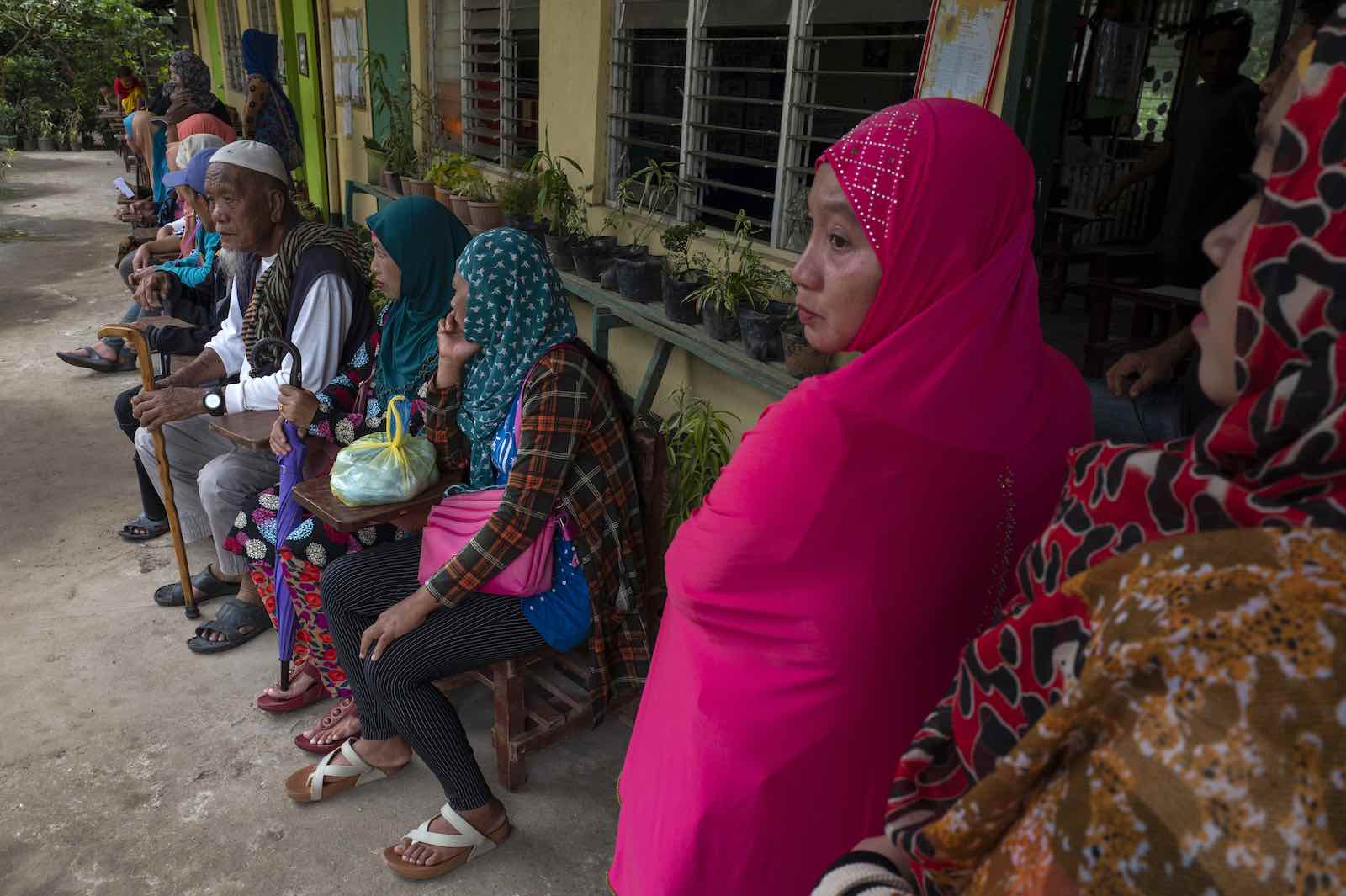 Residents wait to vote on an autonomy referendum, 6 February 2019, Salvador, Lanao del Norte, southern Philippines (Jes Aznar/Getty Images)Published 6 May 2020
Residents wait to vote on an autonomy referendum, 6 February 2019, Salvador, Lanao del Norte, southern Philippines (Jes Aznar/Getty Images)Published 6 May 2020
In the midst of a delicate war-to-peace transition, still punctuated by military operations, attacks from militant groups and vendettas between feuding clans, the newly created autonomous region of Bangsamoro, in the southern Philippines, is now living in fear of Covid-19. While the extent of the pandemic remains unclear due to lack of testing, the virus presents an additional challenge the 13-month-old interim government led by the former rebels of the Moro Islamic Liberation Front (MILF) could have well done without. They might, however, find a silver lining among the pandemic’s dark clouds.
One year after its creation, the MILF-dominated Bangsamoro Transition Authority (BTA) still needs to prove itself. Most of the established ministries are operating, one third of the MILF’s combatants have been decommissioned and the much-awaited block grant mechanism – which provides the region with some financial autonomy – is on track. But internal divisions within the Bangsamoro parliament, adjustment to the realities of governance, and administrative hiccups have also led to skepticism on the ex-rebels’ ability to govern efficiently. They also face a dilemma in their relations with the region’s most powerful families. Bangsamoro’s tradition of dynastic leadership means the former rebels need to accommodate clans that remain the backbone of the Bangsamoro political culture. Yet building a strong and inclusive institution inevitably implies challenging these families’ influence.
Persistent violence is an additional burden to communities plagued by uncertainty and economic hardship. It might further threaten humanitarian operations. It could also jeopardise peace in the long run.
In this context, the Covid-19 crisis is becoming a crucial test. The region’s weak health infrastructure is clearly not prepared for the impact of a wide-reaching pandemic. But, if managed well, the crisis could prove to be an opportunity for the regional authority to assert itself as a capable institution in the eyes of both the region’s clans and the general population.
In the battle against the virus, the BTA needs to work in close collaboration with the five provincial authorities and numerous municipalities across the region, which are all in the hands of various clans. In the early stages of the pandemic, it drafted a contingency plan, set up a regional Covid-19 taskforce and demonstrated leadership in keeping the public informed on developments. Meanwhile, the provinces and municipalities led by local powerbrokers constituted the first line of response, channeling food assistance to communities that have been under various lockdowns since March. In some cases, BTA ministries reached out with direct aid as well, working with local authorities. While the response was not always systematic or well-coordinated, it achieved a degree of complementarity and seems to have avoided the worst – at least for now.
At times, political discord hampered the response, notably in Cotabato City, the seat of the BTA. Cotabato’s outspoken mayor has never hidden her scepticism of the former rebels’ capacity to govern, opposing the formal turnover of the city to the Bangsamoro more than one year after its residents voted, along with other Bangsamoro inhabitants, to join the new autonomous region. Since the outbreak, she openly argued with BTA officials about protocols for the distribution of relief. While this pandemic-related dispute has waned for now, the clash of interests between a strong-minded local leader and the new Bangsamoro administration is likely to resurface.

It is not Covid-19 alone that threatens Bangsamoro’s mostly rural areas. The lockdown’s impact on an already dire economic situation threatens long-term consequences. Following President Duterte’s announcement to lift the lockdown over some parts of the Philippines, the BTA needs to plan ahead. Testing for the virus in the Bangsamoro is not yet possible, and medical equipment is sorely lacking. While the BTA is setting up an isolation center in Cotabato to care for potential patients and plans to increase local testing capacity, it should also improve contact tracing and implement social-distancing measures in the post-quarantine stage, in coordination with local authorities.
Given the track record of past regional governments, even if relief operations continue after the lockdown, communities will likely worry about uneven distribution and be suspicious of any potential misuse of funds. The BTA needs to ensure maximum transparency in the distribution of aid and avoid favouritism. It would also likely gain goodwill by preparing early to help the socio-economic recovery of the most vulnerable areas that were affected by the lockdown. It should not, in particular, ignore the remote and often neglected islands of the Sulu Archipelago.
Covid-19 and its impact should also not eclipse a longer-lasting challenge in the Bangsamoro: communal violence between clans, known as “rido”. Since the outbreak, these feuds have killed at least three people and displaced several hundred. Persistent violence is an additional burden to communities plagued by uncertainty and economic hardship. It might further threaten humanitarian operations. It could also jeopardise peace in the long run. Even in this time of pandemic, the BTA should boost reconciliation efforts to pacify such vendettas.
A holistic response to the pandemic would show the BTA’s constituents it has the commitment and ability to deliver essential services at an unprecedented time of crisis. The interim government needs to work closely with provincial leaders, building trust, maintaining peace, and ensuring transparent management of the pandemic. Covid-19 provides an unexpected opportunity for cooperation, not just in tackling the pandemic but in fostering a peaceful future in the Bangsamoro.
Winds of change:
Rethinking disaster relief
after Cyclone Harold
MEG KEEN DAVID SANDERSON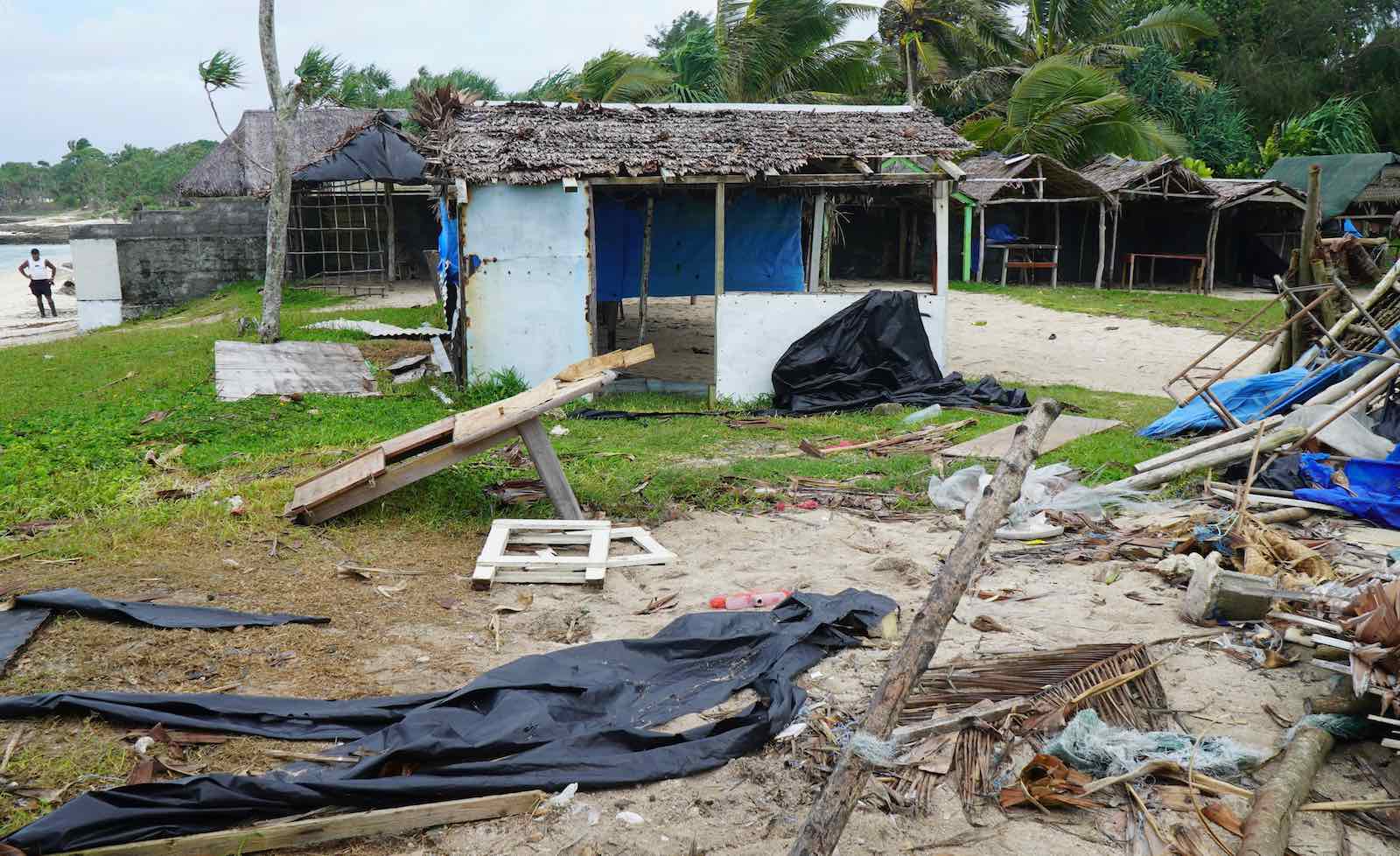 Damaged buildings near Vanuatu’s capital of Port Vila on 7 April (Philippe Carillo/AFP/Getty Images)Published 30 Apr 2020
Damaged buildings near Vanuatu’s capital of Port Vila on 7 April (Philippe Carillo/AFP/Getty Images)Published 30 Apr 2020
Wind speeds over 215 kilometres per hour, more than 180,000 people affected, communities and their infrastructure hit hard, and countries in lockdown – Cyclone Harold is the most recent climate-fuelled calamity to wreak havoc in the Pacific islands. Combined with the Covid-19 pandemic, this recovery will be one of the most challenging for the region.
It is not the first, nor will it be the last, of these devastating Category 5 cyclones. The difference this time is that external humanitarian “saviours” will be scarce on the ground, but perhaps the current situation will create a space for more locally driven and flexible responses.
The Intergovernmental Panel on Climate Change predicts that once-in-a-century hazards may become annual events by 2050.
The Secretary General of the Pacific Islands Forum, Dame Meg Taylor, acknowledged the devastation, but also the possibilities to reshape disaster relief operations, stating that “the pandemic offers an opportunity to consider climate-smart response and recovery measures”. Following every major environmental disaster, performance assessments have highlighted the need for better coordination, stronger local engagement, and “building back better”. Now is a good time to deliver on those ambitions and elevate the role and recognition of local systems.
In the 2019 IPCC Report the Intergovernmental Panel on Climate Change predicted that once-in-a-century hazards may become annual events by 2050. The human, economic, and social costs of future events will be high and pressure on community responses elevated. It has been estimated, for example, that the impact of Fiji’s 2015 Tropical Cyclone Winston will be felt until 2025, with a substantial hit to its economy – one fifth of its 2014 GDP.
The risk to communities will be even greater following Cyclone Harold if local networks and assets are not better leveraged. Post-disaster assessments have highlighted that after immediate humanitarian needs are addressed, efforts must be geared first toward vulnerable people, then focus on shelter, livelihoods, and infrastructure. Priorities are place-dependent – but if no one asks local people, no one knows.
Unfortunately, these questions are not always posed. Humanitarian assistance often ends up being supply-driven rather than demand-driven. During Cyclones Winston and Pam, a notable proportion of aid went to waste because it did not meet local needs and, more concerning, overwhelmed supply chains and deliveries of needed goods. Basic aid did not reach several communities simply because lack of visibility or legal recognition existed in the formal system. Consequently, densely populated peri-urban settlements suffered.
Most Pacific island countries now take a sector-based approach to disaster response, which in many cases leads to siloed interventions. Those in charge of shelter delivery do not always speak productively to those providing water, health care, or protection services. As the UN gender adviser Aleta Miller noted following Cyclone Winston, “a lack of coordination between the wide range of actors involved in responses can cause even more harm … if you want to go fast, go alone, but if you want to go far, go together”.
In response, area-based approaches (ABAs) have been developed and widely adopted by the humanitarian aid community for more effective post-disaster recovery. As the name suggests, the idea is to focus on specific locations, and within them provide coordinated, cross-sectoral responses, such as linking water aid with shelter and food production aid.
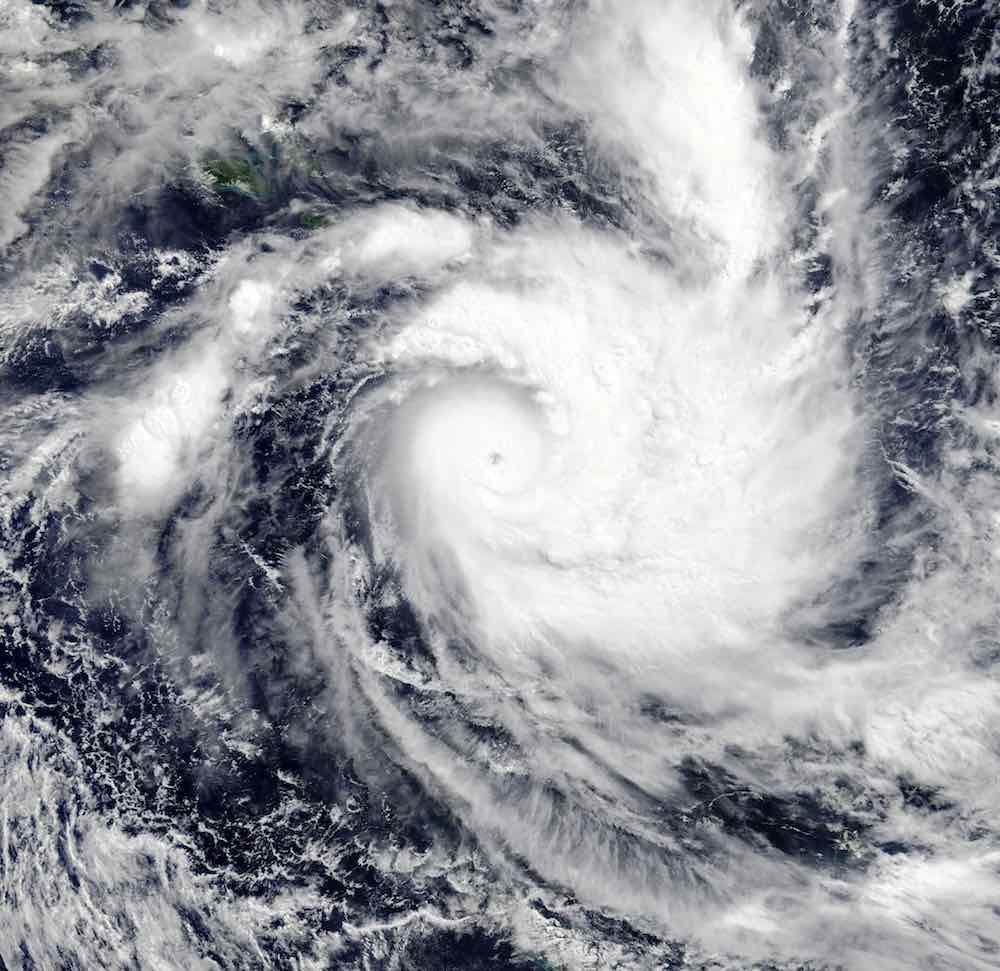
Following Cyclone Pam in Vanuatu in 2015, a summary of lessons learned highlighted the need to ensure connectivity between national and community responses. Of note was the need for key information to be delivered via trusted communication channels, such as radio stations, churches and traditional leaders. In addition, the report called for a tighter fit between National Disaster Management Offices (NDMOs) and local emergency operation centres, along with more thorough consultations with vulnerable and marginalised groups.
Recently, the Pacific Islands Forum announced their commitment to a Pacific Humanitarian Pathway on Covid-19. Details are scant, but presumably such a pathway will be collaborative and inclusive. Working from the top down in the Pacific is difficult given the limited reach of many national and regional agencies. The ABAs, championed in other parts of the world as effective for their post-disaster recovery, might be just what is required with their ground up approach to engage communities and local leadership. Robert Dodds, Pacific Regional Shelter Manager at International Federation of Red Cross (IFRC) explains, “we need to engage with local communities and local government first and foremost. It’s about them being in the driving seat”.
ABAs have strong appeal in the Pacific islands and are becoming the preferred approach for leading actors, including the United Nations High Commissioner for Refugees (UNHCR) and the Global Shelter Cluster (GSC). However, they will only work if implementing organisations take the time to forge local partnerships and prioritise genuine needs.
From the field, we know that ABAs are difficult to enact, slow to deliver, and involve rounds of negotiations between invested parties. They do not fit the project management tools and modes of operation most often used by aid organisations, and they need adaptive delivery approaches that do not always suit agencies’ short timeframes. Yet, when done well, they respond to pressing needs and enable those on the ground to lead, which is vital to sustainable outcomes, especially in these unprecedented times that risk becoming “the new normal”.
The danger of disease in the
world’s largest refugee camp
ELEANOR GORDON KATRINA LEE-KOO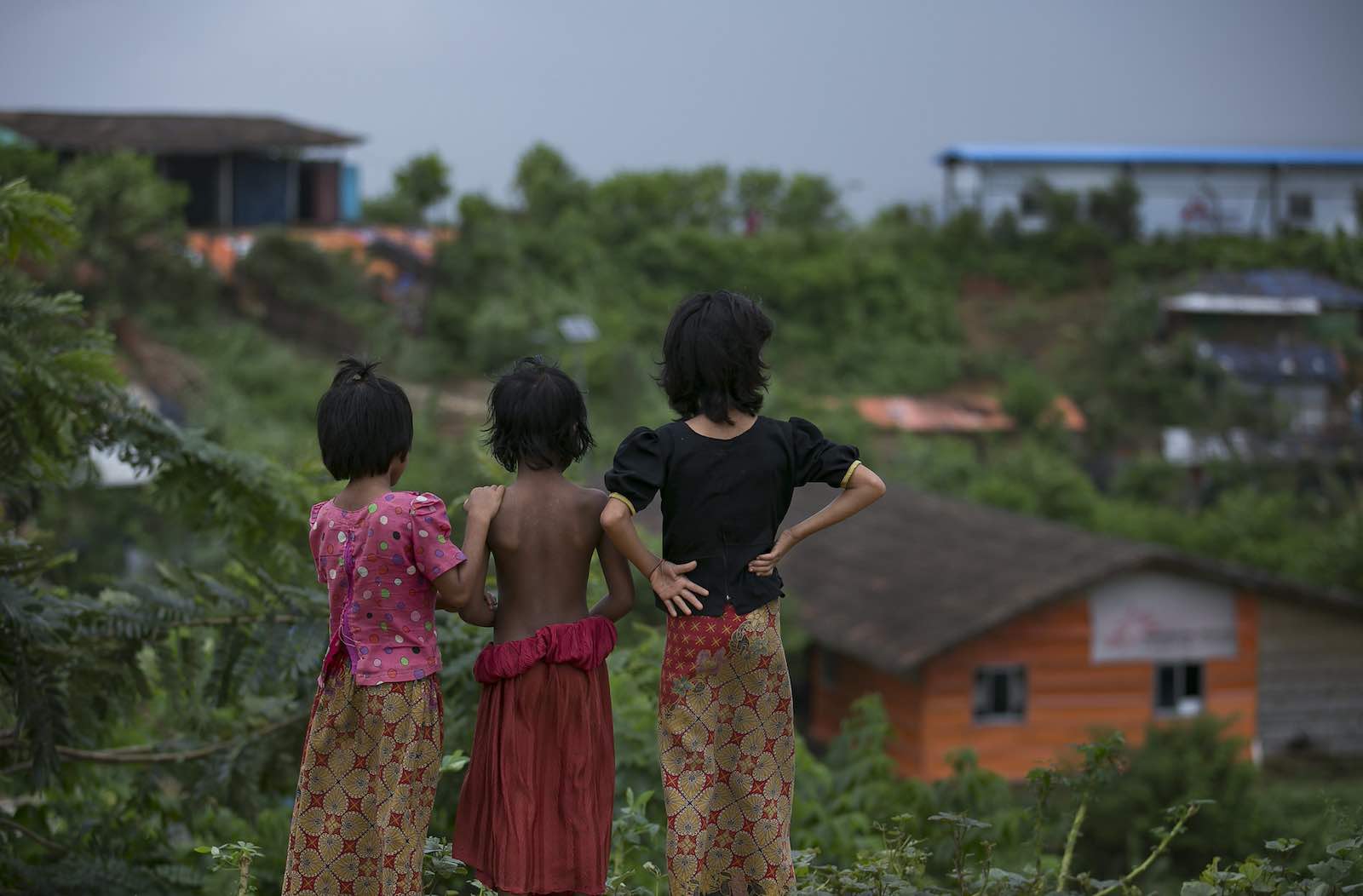 Balukhali refugee camp in Cox’s Bazar, Bangladesh (Allison Joyce/UN Women)Published 24 Apr 2020
Balukhali refugee camp in Cox’s Bazar, Bangladesh (Allison Joyce/UN Women)Published 24 Apr 2020
The Bangladesh government made the decision earlier this month to place the southern district of Cox’s Bazar in lockdown as Covid-19 cases in Bangladesh increased. Cox’s Bazar hosts the world’s largest refugee camp, housing almost a million Rohingya since late 2017 when around 700,000 fled violence in Myanmar, joining those previously displaced by fighting.
While there is yet to be a positive case of coronavirus identified in the refugee camps, the first case was recorded in the city of Cox’s Bazar on 24 March. Entry and exit from the area – other than emergency food supplies and medical support – has been prohibited in an effort to stop the spread of the virus.
A recent report for the Centre for Humanitarian Health at John Hopkins University has nonetheless suggested that a large-scale outbreak of Covid-19 in the camps is very likely and would lead to thousands of deaths.
Communities displaced by conflict are uniquely vulnerable to pandemics. In fact, displaced populations are particularly vulnerable to infectious diseases, and are more likely to die from infectious diseases than anything else. This is because their immune systems are often depleted, often having had limited access to food, potable water, and healthcare, and living in overcrowded and unsanitary camps.
Health infrastructure already overstretched and under-resourced, and health services don’t enjoying the full confidence and trust of the Rohingya residents.
Almost immediately after the influx of Rohingya refugees into Cox’s Bazar in late 2017, the World Health Organization detected a rapid and ongoing spread of diphtheria in the camps. Diphtheria, like Covid-19, is transmitted through respiratory droplets, and spreads quickly in overcrowded, unsanitary conditions with compromised immune systems.
In 2018, the Inter Sector Coordination Group (ISCG) further warned that the presence of cholera and acute watery diarrhea in Bangladesh, combined with overcrowding, lack of access to safe water and high rates of malnutrition in the camps, could result in an outbreak having “the potential to kill thousands”. The pre-existing prevalence of acute respiratory infection, with around 175,000 cases since start of 2020, is a strong indicator that Covid-19 would spread easily in the camps.
While diphtheria has a vaccine, and cholera a treatment plan, Cocid-19 so far has neither. In the absence of a vaccine or effective treatment, social distancing, self-isolation, and good hygiene practices have proven to be the most effective ways of staying safe during the Covid-19 pandemic. This fact has exposed socio-economic inequalities between those who are capable of these strategies, and those who are not.
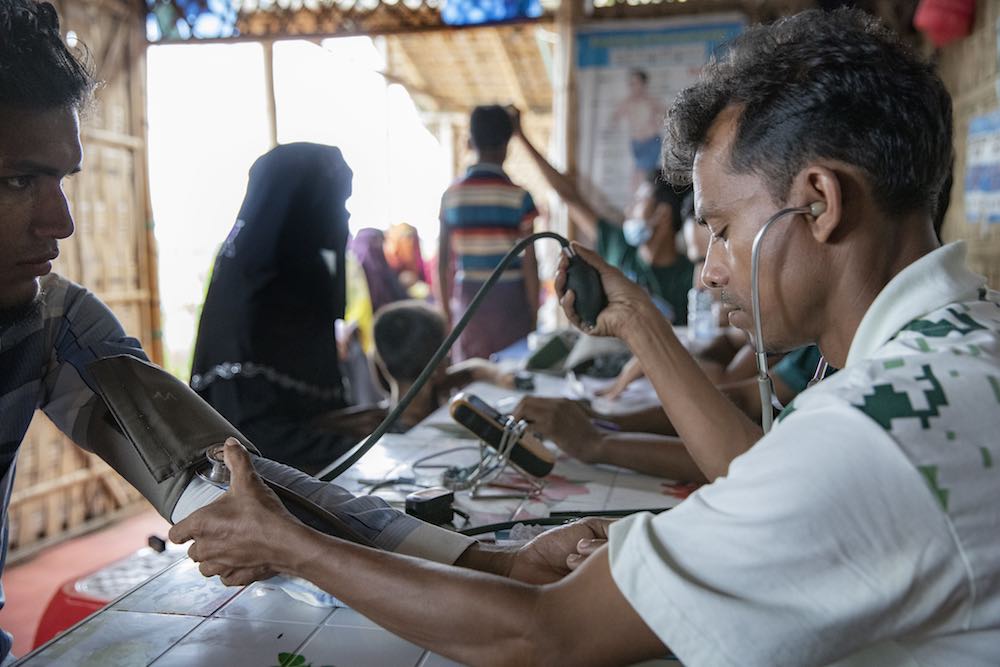
For communities that are displaced by conflict, social distancing, self-isolation and access to soap and water are immediate challenges. For many of these people, the ability to isolate themselves from others is, as described by Médecins Sans Frontières, “a luxury”.
For the Rohingya who live in the 34 makeshift refugee camps in Cox’s Bazar, social distancing is not possible. Most live in cramped shelters covered with tarpaulin, and access to food and potable water is limited; it generally requires daily walks and waiting in queues. People also need to walk to and queue for overburdened and overcrowded hygiene facilities, including toilets – and they have limited access to soap.
The camps themselves are severely overcrowded. In a single square kilometre, 40,000 Rohingya reside. Overcrowding makes basic services hard to provide, and the rush to provide water facilities and latrines, after the influx of more refugees in 2017, increased the risk of water contamination.
Rohingya in these camps also have somewhat limited access to health care information and services, with health infrastructure already overstretched and under-resourced, and health services not enjoying the full confidence and trust of the Rohingya residents. This undermines their ability to protect themselves and compromises any effort to identify, monitor and contain outbreaks of contagious diseases.
Limited access to healthcare information was compounded recently by the government ban on mobile-phone and internet usage (Rohingya in the camps are not able to legally purchase SIM cards and internet coverage in the camps has been restricted since September 2019). This has generated misinformation and ignorance about Covid-19 and led to 26 international humanitarian agencies calling on both the Bangladesh and Myanmar Governments on 16 April to restore telecommunications in order to support “humanitarian efforts to save lives”. This ban has also separated Rohingya from support networks in Myanmar and elsewhere, so important at this time.
Misinformation is further resulting in people who feel unwell not disclosing this information because of frightening rumours about what authorities do to people showing symptoms of Covid-19. In addition to the impact this might have upon the spread of the disease, it further increases fear, insecurity, and stress among the Rohingya.
Telecommunications is also essential to carry out humanitarian work, particularly now as international actors work remotely (to avoid bringing the virus into the camps) and rely on people in situ. While some international organisations have continued and expanded their activities in the camps to best prepare for an outbreak of Covid-19, all relief work other than essential activities was halted in late March.
Protection services have drawn down, including child protection and psychosocial support, leading to likely increases in insecurity and violence, especially as stress and anxiety increase in the camps. Child-friendly spaces have been closed and a long-awaited education program put on hold. Children, and particularly girls who are often confined to their shelters, are thus unable to access what may be their only safe spaces and support mechanisms at a time when they are most needed – compromising their current and future well-being.
So far, experience has shown that responding to the coronavirus pandemic requires early action, well-resourced and organised health care, socially disciplined and well-informed populations with the capacity and resilience to respond, and space and time. These were already in short supply in refugee communities. As Bangladesh enters its monsoon season in coming months, major challenges are ahead.
The phony war ends: PNG’s
coronavirus challenge takes shape
SHANE MCLEOD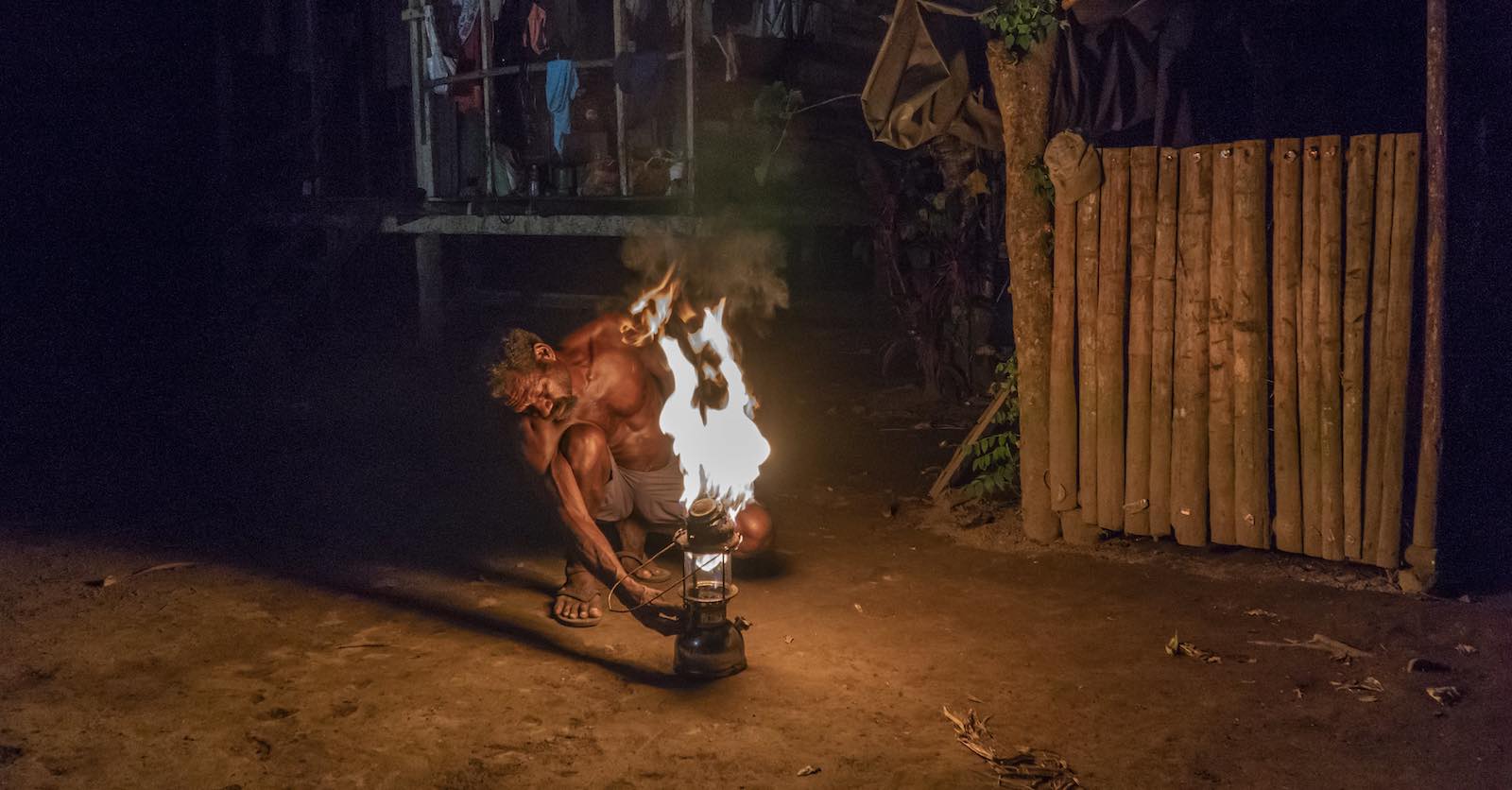 A lack of reliable electricity is one of the many challenges in PNG compounded by a pandemic (ADB/Flickr)Published 21 Apr 2020
A lack of reliable electricity is one of the many challenges in PNG compounded by a pandemic (ADB/Flickr)Published 21 Apr 2020
For a few weeks it has seemed like PNG might have been engaged in a “phony war” against coronavirus.
Only two cases had been confirmed across the nation of around nine million people. One was a foreign mine worker who was quickly sent out of the country once his positive test was confirmed. The second was a health worker in East New Britain province where the source of the infection wasn’t entirely clear.
The government’s response to the positive cases was swift and harsh: a state of emergency, non-essential business lockdowns, bans on domestic air and road travel, and restrictions on markets and roadside selling. Parliament met and extended the declaration earlier this month.
And in the absence of any flare-up, those tough measures appeared to be working – although they were starting to chafe.
Prominent politicians such as the East Sepik Governor Allan Bird – who had advocated a hard-line shoot-to-kill order on illegal border crossers to stop the spread of the virus – had started to question the need for the harsh lockdowns, highlighting the economic impact.
But the past few days have started to reveal how pandemic has been silently spreading throughout the country. PNG’s phony war appears to be at an end.
Last week, five new cases were confirmed. Concerningly, three of those were in the Western Province, which borders both Indonesia and Australia’s Torres Strait. Another case was confirmed in East New Britain and alarmingly, the first case in Port Moresby: a quarantine official who had been working in the country’s Covid-19 national operations centre.
That takes the case load to seven. By international standards, those numbers are still small. But they also are a measure of the limited amount of testing that had been done – around 350 tests until this week.
PNG’s health system will struggle. Prime Minister James Marape has admitted as much – saying that the government hasn’t invested in health care as it should.
One provincial health worker has told me that they have been concerned about potential coronavirus cases in their area for weeks, but the restrictions on the national testing regime meant they weren’t able to have tests done to confirm their suspicions. Another official close to the national pandemic response believes the virus may be much more prevalent in the country than the tests so far have confirmed.
The country’s Institute of Medical Research in Goroka had been the centre of testing until a second laboratory in Port Moresby was established recently. But limits on the availability of testing agents means that the government has had to start sending samples to Australia.
PNG isn’t alone as a developing country with limited capacity to deal with this virus. There is the real prospect that Covid-19 will spread, largely unchecked, throughout the country for many months to come. Its land border with Indonesia means that whatever efforts it makes are always tied to the success its larger neighbour has in dealing with the pandemic.
And PNG’s health system will struggle. Prime Minister James Marape has admitted as much – saying that the government hasn’t invested in health care as it should. It already deals with a multitude of daily challenges including tuberculosis, HIV and malaria. And beyond under-funding, corruption has hollowed out its capacity to respond.
Accommodating the PNG testing load in Brisbane is a major boost to the country’s surveillance capacity. It’s good to see Australia stepping up to help its nearest neighbour.
Prime Minister Scott Morrison must be commended for making sure that world leaders don’t forget the Pacific even as he and his government deal with the massive challenges at home.
Having raised the issue of supporting developing nations during their coronavirus response, on Thursday Morrison announced that PNG wouldn’t have to make any payments on a US$300 million loan negotiated as part of last year’s budget until the end of the year. It’s the start of what will should be an important and ongoing role Australia can play in helping PNG to deal with the virus and its impact.
It’s also one less thing that the country will have to worry about as it deals with what will be a massive challenge in the days ahead.
Australia needs a comprehensive
plan for Covid-19 in the Pacific
PAT CONROY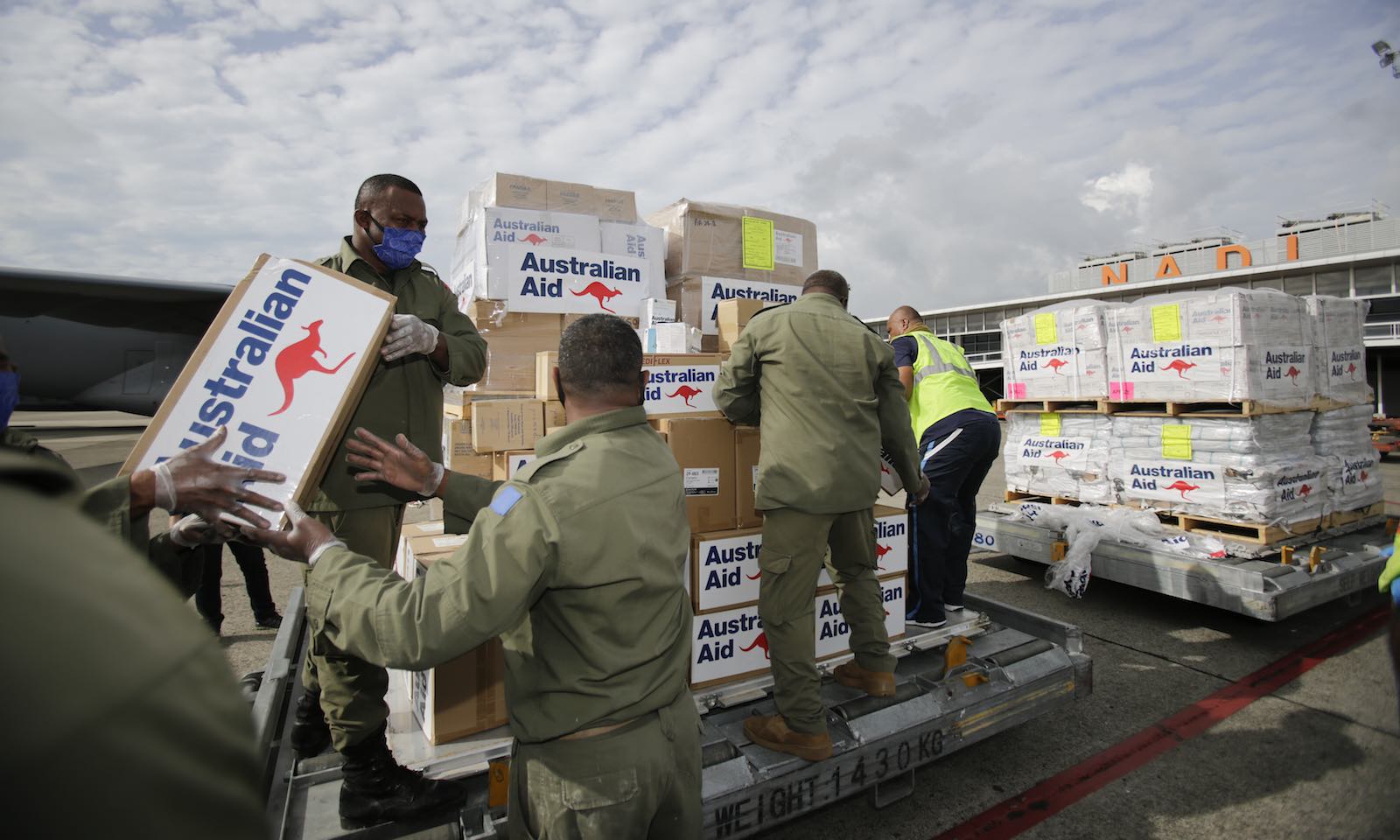 Australian relief supplies delivered to Fiji at the weekend amid the Covid-19 outbreak and following Cyclone Harold (Defence Department)Published 20 Apr 2020
Australian relief supplies delivered to Fiji at the weekend amid the Covid-19 outbreak and following Cyclone Harold (Defence Department)Published 20 Apr 2020
Of all the regions in the world, the twin health and economic crises caused by the Covid-19 pandemic have the potential to hit the Pacific the hardest.
Pacific Island nations supported Australia during our bushfire crisis, sending members of their defence forces and making donations to communities in a much wealthier nation. This region is perhaps the most critical to Australia’s physical security – and a region which must be supported through the pandemic by a comprehensive Australian plan.
At latest count there are 266 confirmed cases of COVID-19 in Pacific island countries and seven deaths from the disease. The governments of at least 10 Pacific island countries have imposed states of emergency. Health workers with only a handful of ventilators at their disposal are bracing against more severe outbreaks. Travel throughout this vast and geographically dispersed region has been all but shut down, and populations already struggling with poverty are facing a grim economic outlook.
Perceptions in
Pacific countries
that Australia has
let the region down
at this time of need
or is not listening
to its Pacific
partners could
fundamentally
compromise the Step Up.
The crisis will continue to unfold for some time yet out and will cast a long shadow over the countries of the Pacific.
There will be humanitarian, economic, social and political impacts – not only for the region itself, but also for Australia, which faces national security and geopolitical risks from an inadequate response to Covid-19 in the Pacific.
The coronavirus crisis has the potential to overburden weak local health systems. Healthcare systems in most Pacific countries suffer from a lack of resources, health professionals, basic equipment and infrastructure. In many countries, poor logistics, transport infrastructure and geographical isolation add to the challenges in providing health services in remote regions. Inadequate water, sanitation and hygiene infrastructure, and limited fresh water supplies in remote communities may also reduce the effectiveness of basic containment measures.
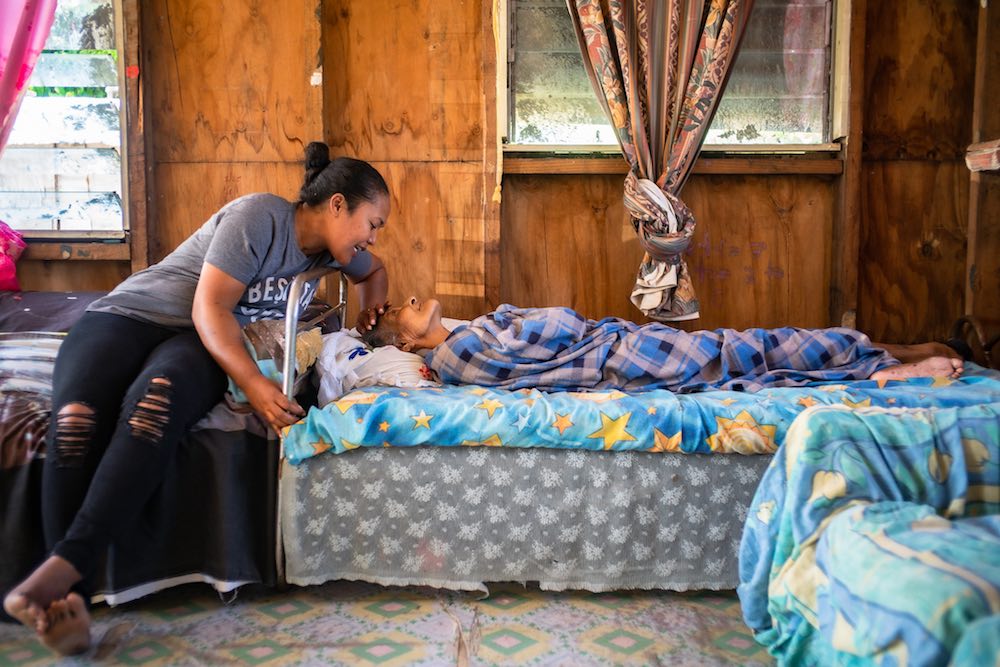
Some Pacific island nations’ economies face virtual collapse because of the pandemic.
Several nations are highly dependent on tourism, which has been shut down by travel restrictions. The most tourism-dependent economies are Fiji (where tourism comprises 17% of GDP), Samoa (23%), Vanuatu (40%), the Cook Islands (73%) and Tonga (10%), according to ANZ research and official figures.
Economic impacts are likely to go beyond tourism. The World Bank has identified the following additional economic risks for Pacific nations:
- Commercial fishing may be reduced due to travel restrictions;
- Fish exports may be affected by a global economic slowdown;
- Construction and infrastructure projects may be affected by availability of labour and materials;
- Remittances from Pacific nationals working abroad may slump;
- Slower global growth may impact commodity prices and resources exports;
- Global equity market declines may hit investment earnings of sovereign wealth funds which comprise significant sources of government revenue in Kiribati and Timor-Leste.
Covid-19 in the Pacific also presents risks for Australia’s national security and foreign policy interests. The Australian government’s participation in discussions by the Pacific Islands Forum on establishing a “Pacific Humanitarian Pathway on COVID-19” is to be welcomed.
However, the need for humanitarian assistance comes as Australia already faces pressure from the domestic impacts of the virus, which will rightly always be the first priority for Australian governments. Economic contractions in Pacific nations will pose risks for Australian interests, including:
- Direct impacts on Australian tourism businesses engaged with Pacific tourism;
- Pressures from Pacific partners to boost development assistance;
- Economic downturns may exacerbate the Pacific’s development challenges and increase state fragility;
- Loss of income, which could create social tensions with risks of instability and conflicts in Pacific countries;
- An impact on government budgets, which may increase the attractiveness of financial partnerships with China.
Papua New Guinea must be regarded as particularly vulnerable to the pandemic given the size of its population, its proximity to countries which have substantial outbreaks, and the lack of resources in its health system.
A priority for the Australian government in responding to the pandemic in the Pacific should be ensuring PNG receives urgent assistance to slow the spread of Covid-19. This assistance should be targeted at boosting the country’s healthcare resources and ability to test, contain, and treat the virus. Australia should provide direct support for such measures through its bilateral development assistance program. It should also urge speedy action by the International Monetary Fund, the World Bank, and the Asian Development Bank (ADB) on PNG’s current requests for funding for its Covid-19 response.
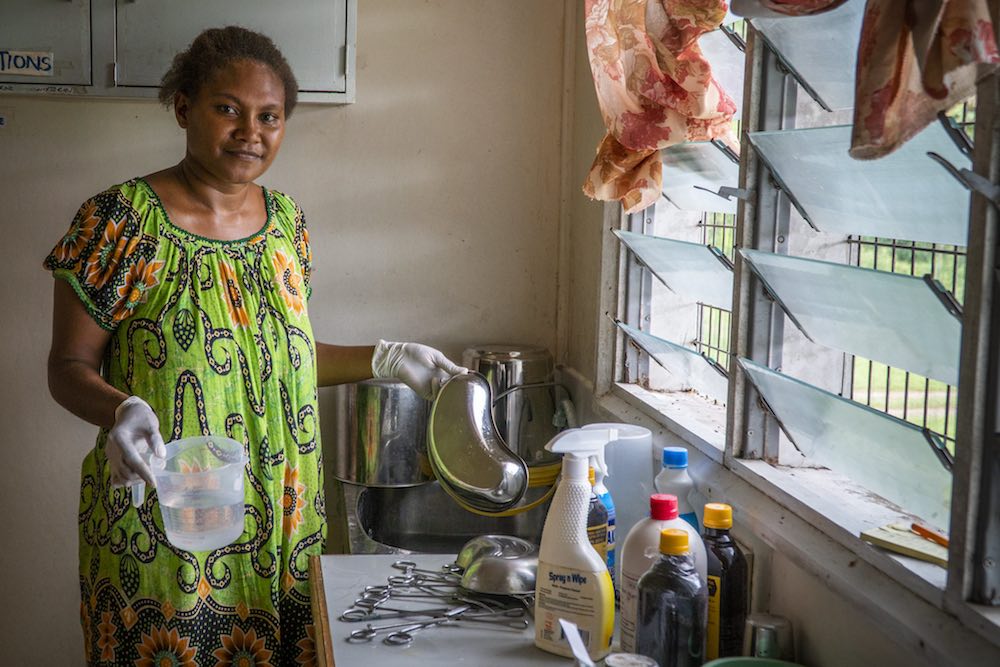
Strong performance by Australia in assisting Pacific countries with Covid-19 would support the Morrison Government’s Pacific Step Up and its foreign policy objectives.
By the same token, perceptions in Pacific countries that Australia has let the region down at this time of need or is not listening to its Pacific partners could fundamentally compromise the Step Up.
This matters because COVID-19 also has implications for great power competition in the Pacific. There are already competing narratives about the roles of China and the US in responding to the pandemic.
On the one hand, the role of China’s government in initially covering up the Covid-19 outbreak in Wuhan may cause some Pacific countries to question the Chinese authoritarian model and to be wary of further engagement and exposure to China, including debt exposure. On the other hand, Beijing is seeking to use the apparent containment of the outbreak in China to articulate a narrative about the effectiveness of its model of governance and to establish itself as the world’s “counter-Covid leader in word and deed.”
China is seeking to boost its soft power through providing material aid to countries affected by the pandemic, including in the Pacific. It has convened a video conference for more than 100 Pacific government Ministers and officials with senior foreign affairs and health officials in Beijing. Its ambassadors in Pacific countries have been staging photo opportunities as they hand over cheques to local officials from Beijing’s US$1.9 million China-Pacific Island Countries Anti-Covid-19 Cooperation Fund.
Given the humanitarian, economic, foreign policy and geostrategic interests at stake, Australia needs a comprehensive strategy for working with Pacific partners on Covid-19. While the Australian Government has taken a number of ad hoc steps to assist the Pacific, the Foreign Minister and the Minister for International Development and the Pacific have had little to say about the issues facing the Pacific, let alone articulating any coherent plan for assisting the region and advancing Australia’s interests.
There needs to be a comprehensive and coordinated Australian strategy. This should comprise three phases: immediate humanitarian assistance; medium term economic recovery; and longer-term investment in resilience.
The strategy should be developed and implemented in close partnership with Pacific countries and organisations. Ultimately, we must listen to the needs and priorities of our Pacific neighbours.
It requires senior Australian leadership from the Prime Minister, Cabinet Ministers and senior officials from Australia’s health, economic, foreign policy and defence agencies.
Phase one: immediate humanitarian assistance
The first phase would focus on containing the spread of the virus and responding to health and humanitarian needs, including economic needs such as the supply of essential goods including foodstuffs and fuel. Healthcare assistance would be a strong component of this phase.
Australia would provide funding, technical assistance, medical equipment, training, testing and personal protective equipment to hospitals and healthcare facilities in the Pacific. It would assist Pacific governments in providing advice and information to their communities on prevention strategies such as hygiene and social distancing.
Australia should also consider short term economic assistance, funded from the Australian Official Development Assistance (ODA) budgets and leveraging funding from multilateral development institutions.
Covid-19 has highlighted the problem of a lack of access to water and sanitation infrastructure in many Pacific communities.
Short term economic assistance should also be targeted at Pacific tourism businesses which have called for measures such as freezing debt repayment obligations to banks.
Australia’s corporate sector is leading by example here – ANZ Pacific has offered to defer repayments for home, business and personal loans for up to six months for customers affected by Covid-19 in Fiji, Vanuatu, Samoa, Tonga, Cook Islands and Kiribati.
Treasury, the Reserve Bank of Australia and the Australian Prudential Regulation Authority should provide support to Pacific regulators to facilitate such measures by local financial institutions.
Australia may also need to assist in providing a wider range of goods and equipment in short supply due to the impacts of the pandemic on travel, transport and global supply chains, given that many Pacific nations rely on imports for fuel and other essential commodities.
This phase would include Australia working with Pacific governments to ensure they gain access to the financial assistance being made available to developing countries by multilateral institutions and development banks.
Phase two: economic recovery
Australia should work on a Pacific economic recovery and rebuilding strategy with Pacific governments, the Pacific Islands Forum, other regional governments and groupings such as the G20, and the multilateral financial and development institutions.
Australian bilateral assistance will be able to support specific measures in consultation with Pacific countries. Australia can also provide technical assistance with the design of fiscal and monetary policy measures.

However, the scale of the economic fallout will require very substantial support from multilateral institutions such as the IMF, World Bank and ADB. Australia should play a leading role in advocating for the multilateral institutions to deliver economic and financial support for Pacific countries.
The recovery strategy should be multifaceted and could include:
- Fiscal measures to support Pacific citizens, including measures which are effective in assisting people who work in the informal sector and may not be reached by existing social support programs;
- A tourism recovery effort including marketing to traditional and new customer bases and temporary easing of government taxes such as airport taxes and passenger entry or exit charges to make the pricing of tourism products more attractive;
- Liquidity support for small and medium sized businesses;
- Bringing forward funds for infrastructure investments;
- Assisting governments to finance domestic economic and fiscal policy measures;
- Boosting Pacific labour mobility and migration opportunities to provide Pacific countries with enhanced flows of remittances.
The economic recovery strategy needs to reflect the specific circumstances of Pacific nations including their small population bases, lack of economic diversification, geographic isolation, remoteness from international markets and limited revenue bases and fiscal capacity of governments.
It also needs to reflect social needs including gender issues and the needs of disadvantaged and vulnerable groups such as people with disabilities, children and people in remote communities.
Phase three: building resilience
Over the next two to three years, Australia should consider the longer term implications of the pandemic for the Pacific.
The Covid-19 crisis has highlighted the vulnerabilities of our Pacific partners’ healthcare systems. This comes after several years in which the Coalition government’s ODA cuts have fallen more heavily on healthcare than on aid programs in physical infrastructure, trade facilitation and international competitiveness.
While the Coalition has increased Australia’s overall development assistance for the Pacific (by cutting aid significantly for East Asia and South Asia), it has also reoriented Pacific assistance to “hard” physical infrastructure at the expense of “soft” human infrastructure including health.
The Australian government needs to pause its review of its international development policy and reassess in the light of the pandemic’s lessons.
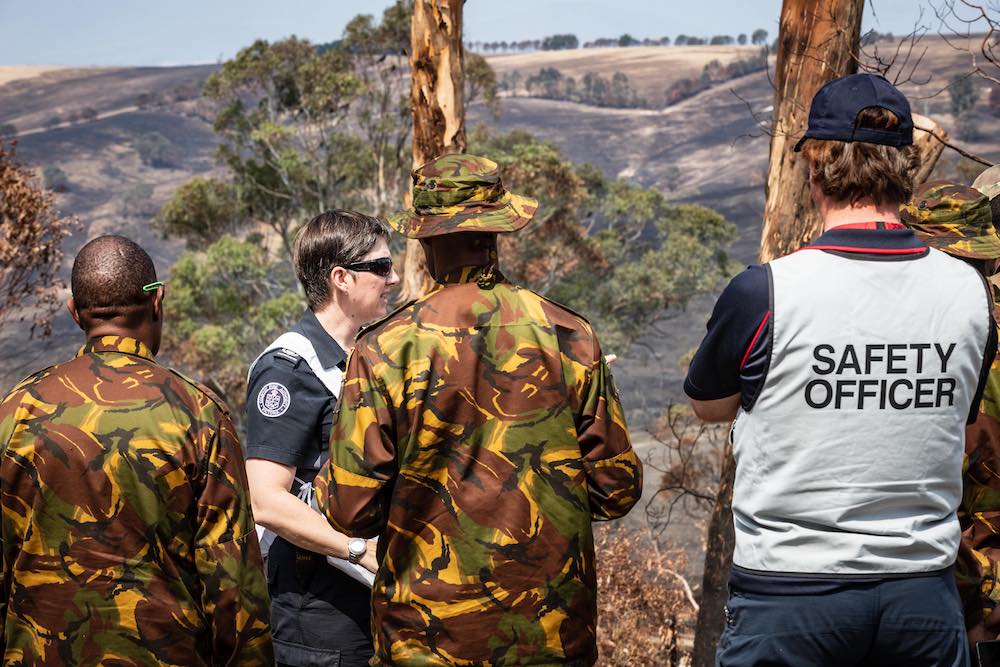
Development assistance needs build greater capacity in healthcare and to support economic and social resilience. In health there is a need to improve resources, skills and capabilities both in responding to public health emergencies and also to tackle the region’s ongoing challenges in non-communicable diseases and preventative health interventions.
Covid-19 has highlighted the problem of a lack of access to water and sanitation infrastructure in many Pacific communities. Climate change will put additional pressures on water and sanitation infrastructure as rising sea levels, storm surges, and high tides introduce saltwater into freshwater resources in low-lying Pacific atolls.
Infrastructure investments should include social infrastructure in areas such as water, sanitation and hygiene (WASH) that are less commercially attractive for private sector investors. Consideration should be given to earmarking a share of the $2 billion Australian Infrastructure Finance Facility for the Pacific for investments in health and WASH infrastructure.
If Australia genuinely wants to be the partner of choice for Pacific island nations – with all the benefits that will bring for our national interest – then how we contribute to their Covid-19 challenge in coming months will shape our future in this important region.
This is a test that the region desperately needs Australia to pass.
How much is too much?
Covid loans for the Pacific
ALEXANDRE DAYANT ROLAND RAJAH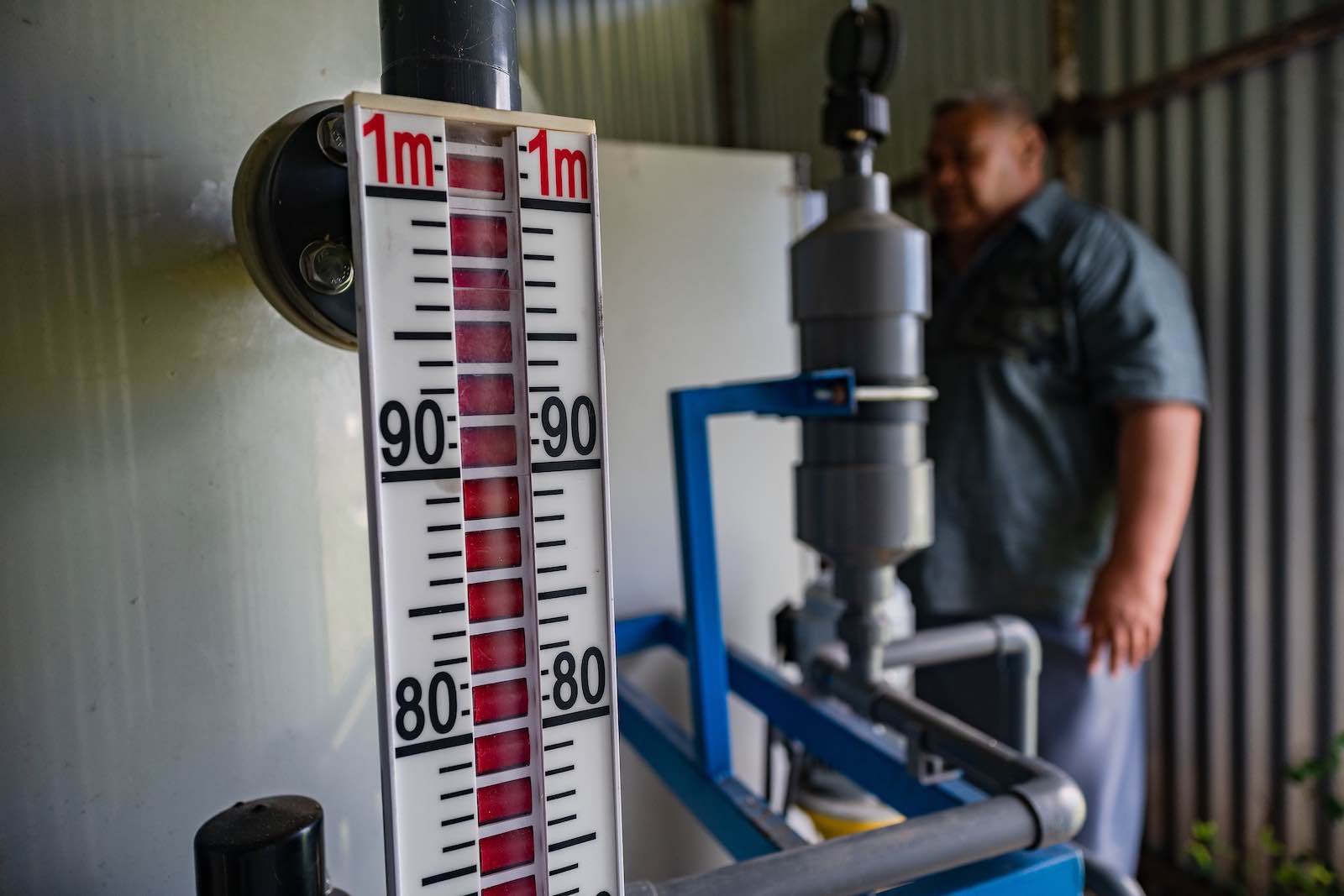 A water supply, solid waste and sanitation project in Nuku’alofa, Tonga (Asian Development Bank/Flickr)Published 16 Apr 2020
A water supply, solid waste and sanitation project in Nuku’alofa, Tonga (Asian Development Bank/Flickr)Published 16 Apr 2020
There is a growing recognition that Australia will need to do a lot to help the Pacific get through the Covid-19 pandemic. Like everywhere, big sums of money are needed. The question is how to finance it.
Many advanced economies are rolling out budget packages of 10% of GDP or more. The Pacific might need something similar. If so, that could mean as much as A$5 billion.
For the aid dependent Pacific, funding at anywhere near this scale must come from outside. Though other development partners will need to contribute, Australia is by far the leading player in the region. So there is some expectation that Canberra will have to do a lot of the heavy lifting.
For nine Pacific
countries, sizeable
Covid loans
combined with
policy dialogue
around how future
government
spending and
development
partner assistance
might be adjusted
seem a reasonable
path forward.
Given Australia’s own budgetary pressures, consideration has naturally gravitated towards the idea that much of this may have to take the form of loans rather than grants. Yet, that sits awkwardly with the repeated warnings issued by many – including by the authors of this article, as well as the Australian government – about the mounting risk of debt overload in the Pacific.
Can a big round of Covid loans really be justified, especially at the scale that might be required?
Concerns about debt overload usually focus on the debt sustainability analysis (DSA) ratings produced by the International Monetary Fund (IMF) and World Bank. These DSAs generally point to very limited room for the Pacific to absorb significantly more debt, with many countries already judged to be at a high risk of debt distress (see the table below).
However, mechanically applying the existing DSA ratings is not the best guide to thinking about how to finance today’s pandemic response. The DSAs are based on a host of assumptions that will now need substantial revisiting, most notably about the scale and nature of future government borrowing plans. Clearly, with the current situation facing the region – which also includes a major tropical cyclone which hit Vanuatu, Fiji, and Tonga – financing needs and priorities will be substantially reshaped. Like their rich country counterparts, Pacific governments will need to keep their economies (and societies) afloat today, even if this might come at the expense of spending plans for tomorrow.
Updated DSAs will be required. But policy decisions are moving fast. In a crisis, there is no other choice.
| Country | DSA rating * | Total public debt risk indicator | External public debt risk indicator |
|---|---|---|---|
| Kiribati | High risk | No breach | No breach |
| Marshall Islands | High risk | Breach | Breach |
| Micronesia | High risk | No breach | No breach |
| Papua New Guinea | Moderate | No breach | No breach |
| Samoa | High risk | Breach | No breach |
| Solomon Islands | Moderate | No breach | No breach |
| Tonga | High risk | No breach | Breach |
| Tuvalu | High risk | Breach | Breach |
| Vanuatu | Moderate | No breach | No breach |
| Memo items | |||
| Fiji ** | Sustainable | N/A | N/A |
| Palau ** | Unsustainable | N/A | N/A |
| Nauru ** | Unsustainable | N/A | N/A |
* Most recent IMF and World Bank Debt Sustainability Analyses (as of 07/04/2020)
** For Fiji, Palau, and Nauru, the IMF uses a ratings system for higher-income countries where it simply rates their debt outlook as “sustainable” or “unsustainable”. While Fiji and Palau are rated as sustainable the DSAs make clear there is limited room for additional debt.
To provide some immediate guidance, we conducted a simple exercise to examine the implications of a large package of hypothetical Covid loans against two key debt sustainability warning indicators.
The first focuses on the size of public and publicly guaranteed debt as a share of GDP. The second is the same measure but focused only on that owed to external creditors. In both cases, we use “present value” measures that account for how concessional or expensive each country’s existing debt is on average. We then add 10% of GDP in Covid loans – adjusting for the fact that we expect these would be provided on at least a semi-concessional basis (broadly following the loan terms under Australia’s Pacific infrastructure financing facility). We then compare what would result from a one-off round of Covid loans for each country against the warning thresholds used by the IMF and World Bank in their DSAs. Note, we make no adjustment for reduced economic growth as this remains uncertain and in only a few cases would this likely be large enough to sway the picture presented here.
The chart below shows the result for the total public debt indicator, while the overall results are summarized in the table presented above, along with the existing DSA ratings.
While having its limitations, the exercise suggests that five of the nine Pacific countries for which data is available would not immediately breach either of the warning thresholds. For these countries, sizeable Covid loans combined with policy dialogue around how future government spending and development partner assistance might be adjusted seem a reasonable path forward.
Conversely, two microstates – Marshall Islands and Tuvalu – do not appear to have scope for large Covid loans. For these two, the Covid financing response will need to take the form of grants.
Finally, Papua New Guinea and Tonga present a mixed picture, with each breaching one of the two warning thresholds. The breaches are however small, implying either more concessional or smaller loans could still be feasible. A more careful approach will nonetheless be needed in these countries given their heightened risk as well as to account for the negative growth impact of the virus. In the case of PNG, for instance, a formal structural adjustment program already looks likely to be a key part of any Covid bail-out package.
Clearly, there are more sustainable ways to finance the pandemic response from a Pacific perspective – using more concessional financing and combining this with debt restructuring or even outright forgiveness. Hopefully these will also be part of the overall pandemic response. The multilateral development banks are for instance preparing concessional financing packages, while on Wednesday night, the G20 has agreed to an eight month standstill on debt repayments to bilateral creditors – an approach that could benefit some Pacific countries, on the condition they are currently on debt service to the International Monetary Fund or the World Bank.
Nonetheless, the perfect should not be the enemy of the good. The scale of the current crisis means large Covid loans may need to be part of the answer. Fortunately, there is at least some scope to do this sustainably.
A decisive month for Covid-19
in Myanmar – and region beyond
ELLIOT BRENNAN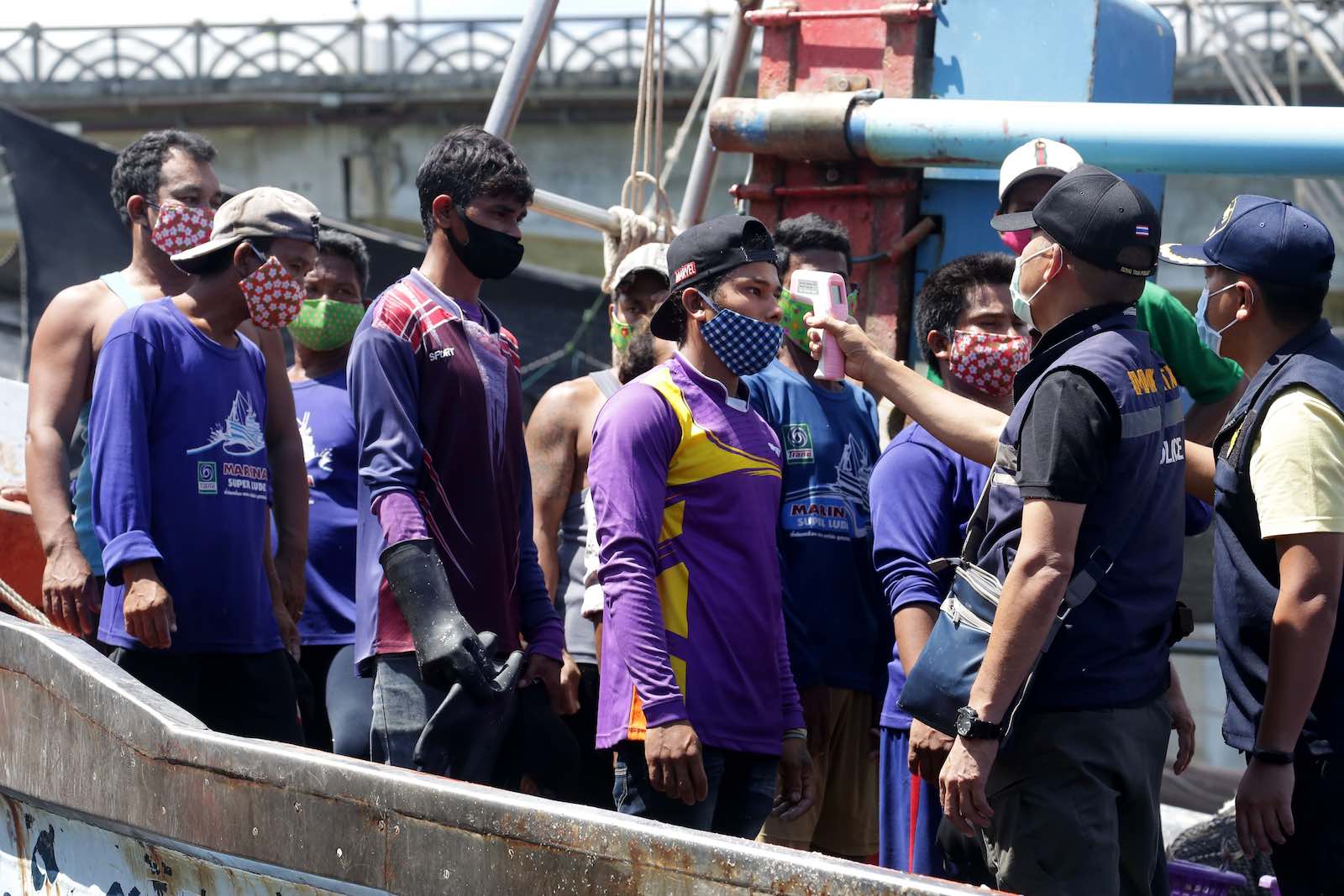 Checking the temperatures of Myanmar fisherman on the Thai border (Tuwaedaniya Meringing/AFP/Getty Images)Published 16 Apr 2020
Checking the temperatures of Myanmar fisherman on the Thai border (Tuwaedaniya Meringing/AFP/Getty Images)Published 16 Apr 2020
As Thailand shut down its border last month, a wave of migrant workers jostled shoulder-to-shoulder back through the Myawaddy crossing to Myanmar. Some 45,498 Myawaddy migrant workers have reportedly been placed in quarantine – a total of 50,731 people were in isolation as of this week. But the effectiveness of the measures has been questioned. Concern grows that this may be Myanmar’s cruise-ship moment, but it is only one of a growing number.
According to the latest figures, the country had 62 confirmed Covid-19 patients and four deaths, the results compiled from more than 2100 tests. Recent cases suggest that some undetected community spread may also be occurring. The donation last week of a testing machine increases Myanmar’s testing capacity from 80 per day to 1400 – reliant still on obtaining enough reagents to conduct the tests. Doubt remains around these case counts and the real number of current cases won’t be known for at least two weeks.
The Ministry of Health and Sport’s capacity for a pandemic has significantly improved in recent years. Myanmar was ranked seven (out of 11) Southeast Asian states in a recent pandemic preparedness index. In 2017, Naypyidaw invited the World Health Organization to conduct a joint external evaluation, a voluntary multi-sectoral process assessing public health emergency preparedness. Much of the capacity built since is around readiness to tackle seasonal vector borne disease outbreaks, tuberculosis, and HIV/AIDS. This knowledge and architecture for communicable disease response will be useful during the current response.
There is already
a high prevalence
in the country of
cardiovascular
disease, chronic
respiratory disease,
and diabetes.
Preliminary research
suggests these
are associated
with more severe
forms of Covid-19.
Despite these improvements, Myanmar has the odds stacked against it in this pandemic.
The presence of several risk factors for severe disease or death from Covid-19 are not encouraging. There is already a high prevalence of cardiovascular disease, chronic respiratory disease, and diabetes. Preliminary research suggests these are associated with more severe forms of Covid-19. The high rate of current smokers in the country – 43.8% among men aged 25-64 years old – is also cause for concern with similar associations with more severe forms of the disease indicated.
High rates of poverty and vulnerability are also concerning. Inequality is rife, not the least for the hundreds of thousands of precariously placed internally displaced persons and the 58% of the population living below or near the poverty line. Even before health system weakness or other factors are considered, these alone could make the case fatality rate higher in Myanmar. (One saving grace may be that Myanmar’s average age is 28 – older age is a strong risk factor for severe disease.)
Other worries abound. The health system remains weak and ill-prepared for this crisis. Bed capacity is limited. There are an estimated 600 critical care beds and 330 ICU beds (1.1/100,000 population) – the real operational number may be less. Other indicators may weaken an efficient response. Out of pocket expenditure on healthcare remains high at 76% of payments made at point of care, the highest in the region. This high cost of health care may mean people don’t seek healthcare and remain infectious in the community for longer, or wait too late to seek care and have more severe disease. These are but a few examples, but weakness in the health system will be exacerbated during the crisis.
The timing of the disease could also multiply its impact. The disease outbreak came just ahead of the Thingyan New Year celebration which runs through much of April. This is a period of increased mobility when people travel back to family and friends gather. Attempts have been made to curb such movements. Whether they are effective won’t be known until the end of the month. Following these celebrations, is monsoon season, when flooding and disasters are common, and vector borne disease, such as dengue increase.
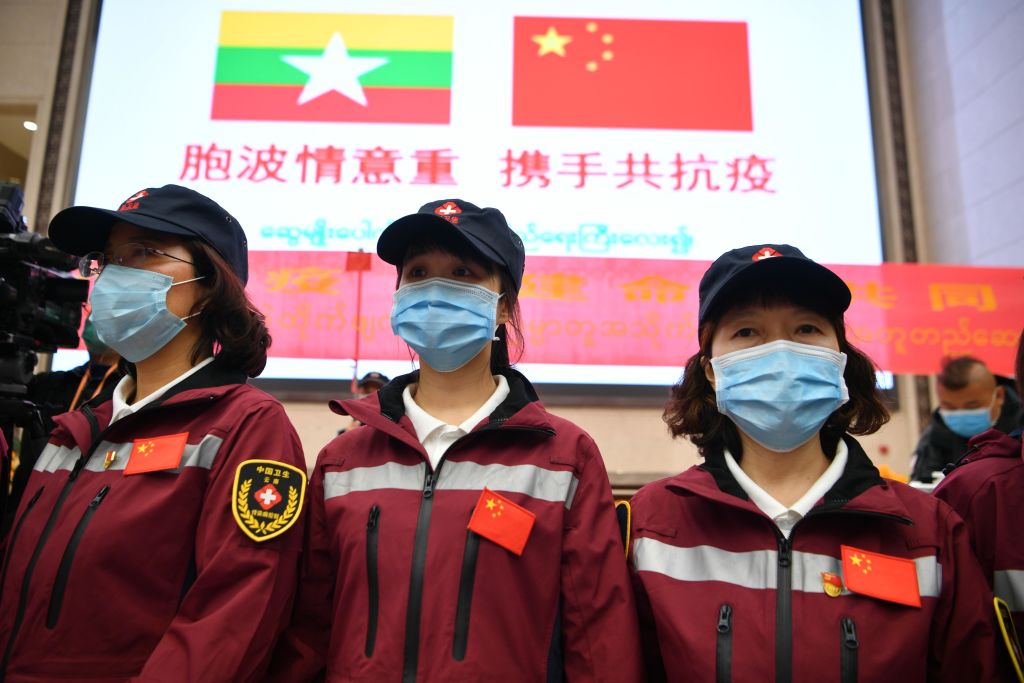
Complicating Naypyidaw’s response is that health governance is fractured in contested areas, with several ethnic armed organisations (EAOs) running their own health services. These are supported by external actors, such as in Wa state, by Chinese state and non-state actors. They differ greatly in their capacity but are often poorly equipped. The immediate impacts aside, this crisis may see them become further decentralised through the support of external aid – the geopolitical impacts of which would be significant. For example, Chinese state actors may broaden their support in disenfranchised border communities in Myanmar in an attempt to build a second line of health security defence, this would rile Naypyidaw and have significant implications on ongoing conflict.
The reality is that areas controlled by EAOs will struggle to respond to the disease. Many of these communities and other vulnerable areas across the country could be hardest hit – particularly where healthcare is provided by humanitarian actors now running reduced programs. That will worry Naypyidaw and could draw muscular rather than cooperative response.
Acknowledging the ongoing debate in the country, there is a chance that Myanmar may avoid the experience of Wuhan, Italy, or the United States. Thus far, reported case numbers remain comparatively low across Southeast Asia. This may be for one or several reasons including poor testing regimes or lower Covid-19 transmissibility in tropical climates.
Indeed, the response needs to fit the context. An extended European-style lockdown could be more damaging for the country than a more tailored response. In the short-term, however, particularly given the movement normally seen during this month’s New Year celebrations, measures that apply an abundance of caution are warranted and may mean a much shorter period of lockdown.
Even if that most fortunate of cases is true, it may only be short-lived. The country needs to continue to hope for the best and prepare for the worst. Myanmar is a crucial battleground to get ahead of Covid-19. Nestled between India, China and Bangladesh, or half the world’s population, and with porous borders, its ability to control an outbreak could have wider regional ramifications. Its success will be the regions.
Covid-19 and Pacific labour
MURRAY ACKMAN TAUTALAASO TAULEALO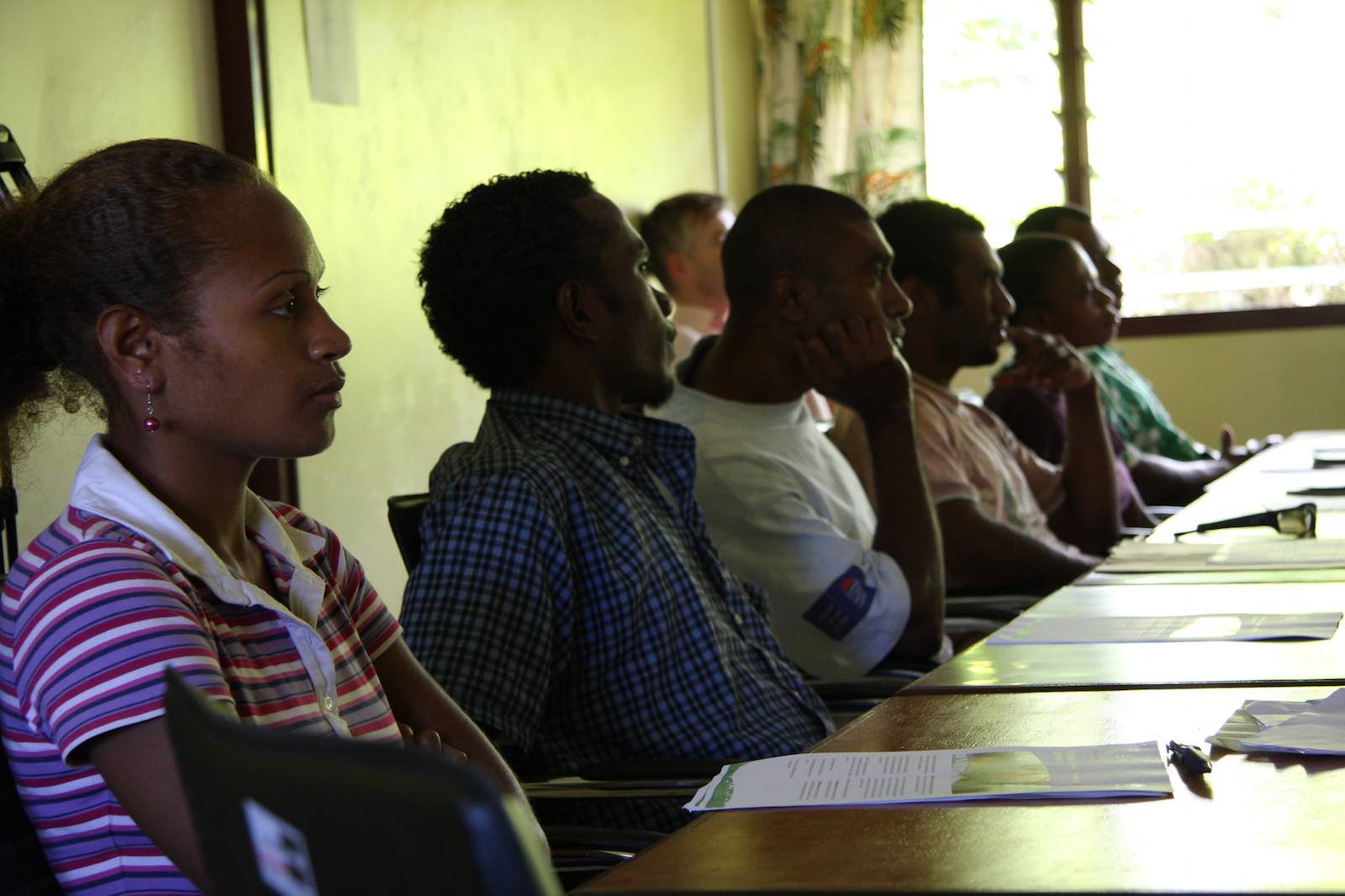 (Cindy Wiryakusuma/DFAT/Flickr)Published 15 Apr 2020
(Cindy Wiryakusuma/DFAT/Flickr)Published 15 Apr 2020
As borders close and globalisation contracts, consider the impact on the Pacific Island neighbours. Many countries in the region rely on labour mobility, with workers sent to Australian and New Zealand to help with fruit picking and work in regional areas. Workers on these schemes send around A$9,000 back to their families, the equivalent of three years wages in many countries.
Remittances such as these are vital to support countries with limited domestic industry. In Samoa, remittances make up around 18% of GDP, the equivalent of the manufacturing, agriculture, and mining industries combined for Australia. In Tonga, where remittances makes up 40% of GDP, the Australian seasonal work program alone is larger than aid plus trade.
Labour mobility is managed under the aid program and considered a win-win for Australian and New Zealand businesses struggling to have reliable seasonal employment. It provides greater agency to the most aid-dependent region in the world.
These programs were conceived in a world where Pacific Islanders could fly from their homes to Australia and New Zealand. Covid-19 has changed that world, at least for the short-term.
Countries all across the Pacific have declared a state of emergency, some lasting months. Flights have practically ceased. This slow-down greatly affects Pacific countries reliant on imports, tourism, and revenue from labour mobility.
The Australian government has responded, announcing on it would extend visas for Pacific Islanders already working on labour mobility programs by up to 12 months. New Zealand has extended temporary visas to late September. These arrangements will be a bonus for employers, enabling them to cover the next harvesting season and maintain experienced workers.
Both countries have barred all visa holders and hence future workers from entry. Pacific countries are also reluctant to send workers until it is safe to do so.

Extra income from extended visas will be welcomed by many workers. Interviews with returned workers in Samoa last month found many appreciated opportunities for extended deployments so they could send more money back to their families. Unsurprisingly, families of workers are worried about safety for those in countries with higher rates of Covid-19 than at home.
Horticulture work is physically exhausting and there is the very real risk of injury or illness restricting the ability for workers to continue indefinitely. Care must also be taken to ensure workers are still looked after and have sufficient income if they contract Covid-19.
If businesses stop operating, workers will be in the position where they are ineligible for welfare and unable to return home. This may be inevitable for hospitality workers in remote areas.
For businesses that continue operating, as many horticulture businesses should, there are practical challenges: colder weather and relocation to other farms. Workers are uncertain when they will be able to see their families again.
Vulnerable workers are at risk of exploitation, underpay, and modern slavery conditions. Given recent levels of uncertainty and the lack of other options, workers are particularly susceptible. Workers, their families and Pacific governments need greater transparency about health insurance coverage, worker obligations to particular employers, and what support and care is available in uncertain times.
If businesses stop
operating, workers
will be in the
position where they
are ineligible for
welfare and unable
to return home. This
may be inevitable
for hospitality
workers in remote areas.
Pacific leaders met remotely on last week to discuss responses to Covid-19, with the Secretary General of the Pacific Islands Forum proclaiming: “If ever there was a time where the region and its partners needed to work together… it is now.”
Australia and China are providing resources to scale up health facilities, but as even the wealthiest of countries are struggling, greater support may be required. The economic implications of this crisis are still being understood, and it will undoubtedly ripple across the Pacific where many countries are in lockdown.
Stimulus spending across the Pacific will be at a much smaller scale than seen in the West. Samoa has announced a US$23 million package. Vanuatu and Fiji, which are also responding to Tropical Cyclone Harold, have announced packages of US$32 million and US$400 million respectively.
Labour mobility can complement these packages, getting cash into people’s hands. A practical way to assist is to support workers with sending money back to their families right now when it’s most needed. Before the current crisis, nearly two-thirds of the money sent back from workers was once they’ve returned either from cash or ATM withdrawals at the airport.
There is already evidence that less money is flowing back to workers’ families. Financial services in Samoa have warned there is a significant drop in remittances received since the Covid-19 outbreak. Local families are either going without or relying on credit from village retail shops until they receive money again.
The service provided by Australia and New Zealand to assist in sending money back needs a more personalised approach. Workers have limited online financial literacy and, in many cases, limited English. Those in horticulture have restricted movement in New Zealand and are often in remote areas of Australia.
Governments need to explore safe ways with reasonable precautions to continue bringing Pacific Islanders to work particularly in horticulture throughout Covid-19. If the Pacific really is to be considered family, continuing labour mobility and finding solutions through this crisis must be front of mind.
As Africa prepares to fight
Covid-19, China steps up
CORNELIA TREMANN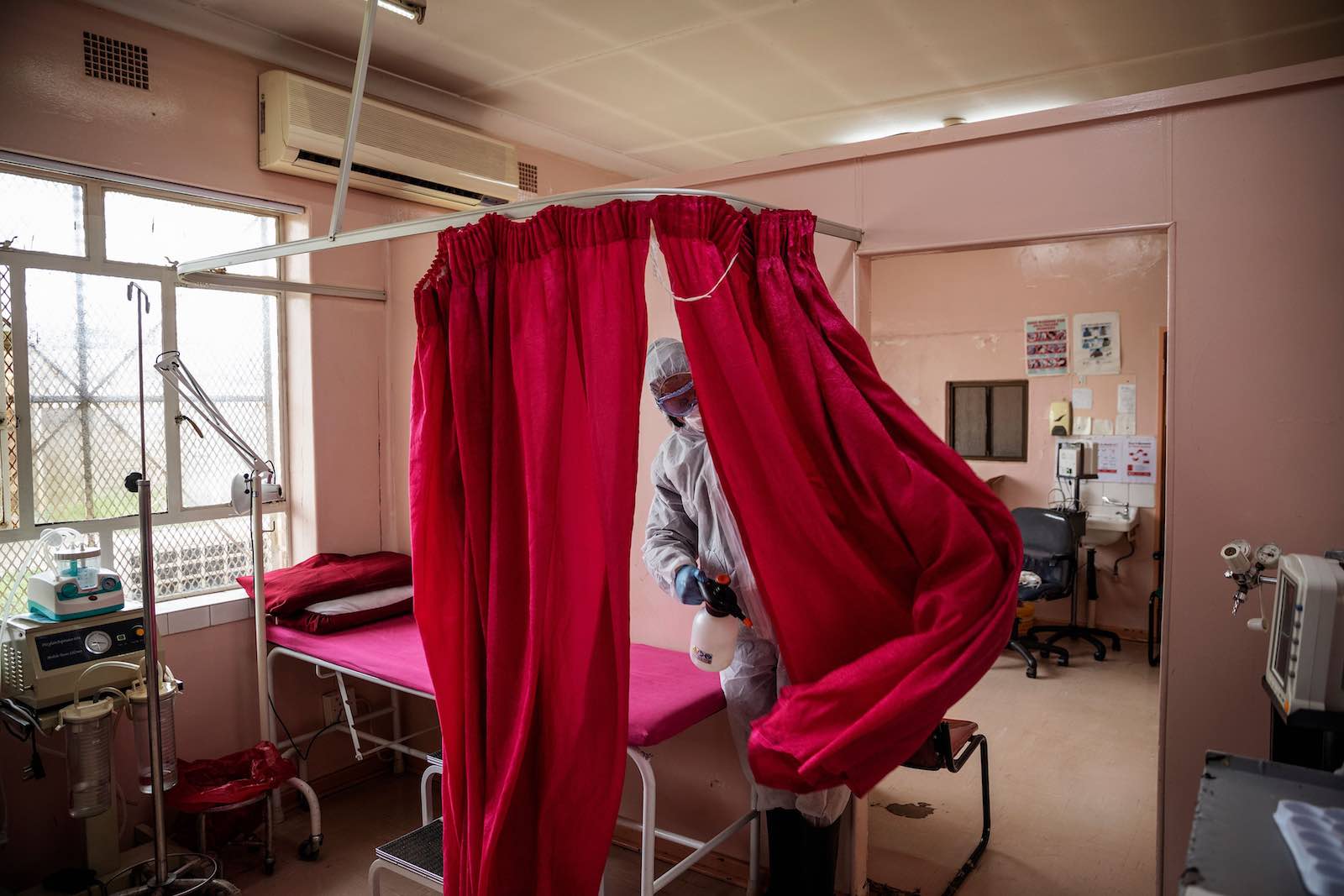 Disinfecting a clinic in Ekurhuleni, South Africa, after a nurse tested positive for Covid-19 (Michele Spatari/AFP/Getty Images)Published 15 Apr 2020
Disinfecting a clinic in Ekurhuleni, South Africa, after a nurse tested positive for Covid-19 (Michele Spatari/AFP/Getty Images)Published 15 Apr 2020
As China slowly begins to recover from Covid-19 and re-start its economy, it is seeking to position itself at the head of the global virus response and fill the void in humanitarian assistance created by Western paralysis. Nowhere is this more apparent than in Africa, where China has a long history of providing medical aid as a foreign policy tool, and where is emerging as the number one humanitarian partner in this time of need.
China’s support to Africa is critical given that other economic partners are tied up with their own crisis at home. China also has a vested interest in protecting its African investments and rebooting commodity imports from Africa to refuel growth in China.
China seemed set to score the equivalent of a PR slam-dunk in Africa until reports of Africans migrants in Guangzhou being subjected to xenophobic harassment and forced to sleep on the streets made front-page news around the world at the weekend. This will erode some of the goodwill China has garnered through its recent actions in Africa, and is a significant blow to its carefully orchestrated strategy to utilise its international response as another springboard towards global leadership.
None of the
Western actors
are able to mobilize
as quickly or as
visibly as China.
Although numbers are likely underreported, Africa currently has more than 10,000 confirmed cases of Covid-19 in 52 out of 54 countries. Considering the global toll, Covid-19 has been slow to take hold in Africa. This may seem surprising given its close connections with China, but it shows that China-Africa people-to-people links are perhaps less prolific than trade and investment data might suggest, and that there is less travel between the two than between China and the developed world. Unproven theories also contend that Africa’s youthful population, low population density, and warmer climate may render the virus less vicious.
Yet even comparatively lower rates of infection can wreak havoc on African countries fragile health systems, and could trigger widespread socio-economic or political turmoil. In Gabon, the country’s first case of severe coronavirus was so badly mishandled that the patient is thought to have died prematurely, half of the staff at the capital’s one decent clinic had to be subsequently quarantined, and both it and another clinic had to be closed for over a week for disinfecting.
Consequentially, the overall strategic approach in Africa has been focused on early, aggressive preventive measures including the shutting down of airports and widespread lock downs – and on appealing to China for support.
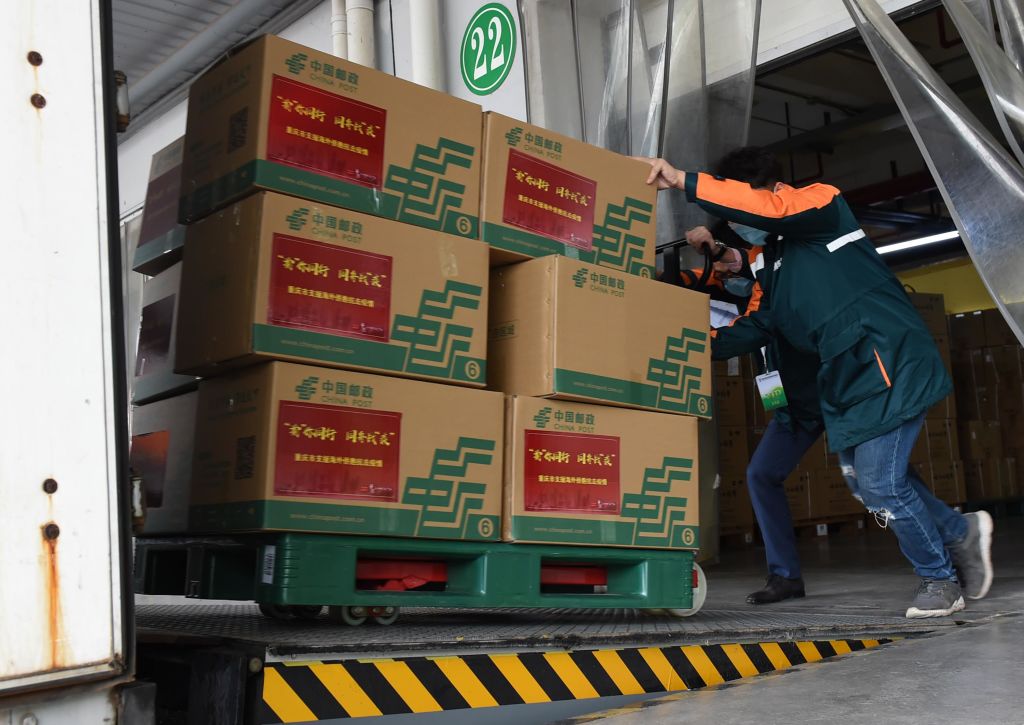
Despite suspicions around the quality of China’s assistance, for example in Nigeria, African countries are relying on supplies from China now that both Europe and the US are in short supply.
Since late March, the Chinese government, its state-owned companies, and private enterprises have provided massive amounts of cash, equipment, and expertise, in a fast and very visible way. On 6 April, almost 38 tons of Chinese government-provided medical supplies arrived in Ghana for distribution to West African states. Chinese multinational infrastructure companies are donating equipment, upgrading hospitals, and constructing quarantine facilities in their countries of operation.
Meanwhile, businessman-turned-philanthropist Jack Ma has struck a deal with the Ethiopian government and Ethiopian airlines, the go-to airline in Africa during this crisis, to distribute equipment around the continent. China’s wealthiest man also announced that his foundation would send an additional 20,000 testing kits, 100,000 masks, and 1,000 protective suits and face shields to every country in Africa. Technology giant Huawei, and Huajian, a global shoe manufacturer, have also donated a million masks each.
China sees this as an opportunity to assume the role as humanitarian leader in times of global crisis – a role that has historically been played by the United States. Traditionally the world’s biggest investor in global health, the US recently passed the Coronavirus Aid, Relief, and Economic Security Act (CARES Act), which in addition to domestic relief provides modest supplemental foreign aid funding to help developing countries improve their Covid-19 response. However, supply shortages at home, dysfunction at the federal level, and a cumbersome bureaucracy and low risk appetite at the US Agency for International Development (USAID) will challenge implementation in this rapidly evolving context.
A lot of existing support is also simply being repackaged as Covid-19 relief. In a sign of the times, the Jack Ma Foundation recently sent 500,000 testing kits and 1 million masks to the US Centers for Disease Control and Prevention to help the US fight Covid-19. The European Union has also pledged to increase their funding to help African economies weather Covid-19, while G20 leaders are preparing debt relief and other financial aid packages for Africa. However, most of this aid will be channeled through multilateral agencies and international finance institutions, and none of the Western actors are able to mobilize as quickly or as visibly as China.
Yes, China is a long way off from becoming the world’s superpower. Yes, China is seeking to reshape the narrative around Covid-19 and deflate some of the blame for covering up the early crisis in Wuhan, not sharing information about the virus that could have helped other countries prepare better their responses, and underreporting its numbers.
Yes, China should also do more to help African economies lessen their debt burdens and prevent looming socio-economic catastrophes. And yes, there will be backlash against Chinese in Africa for the mistreatment of African migrants in Guangzhou.
At the end of the day, however, popular opinion will judge China by the number of masks and other vital equipment it has distributed to help fight this pandemic. For now, in the battle for influence in Africa, China is still coming out on top, yet again.
Why South Asia may come
out of Covid-19 crisis
better than many expect
DAVID BREWSTER Children throw a mixture of water, neem herb, and turmeric in what is said to be a natural disinfectant on a Chennai street during a government-imposed nationwide lockdown (Arun Sankar/AFP/Getty Images)Published 10 Apr 2020
Children throw a mixture of water, neem herb, and turmeric in what is said to be a natural disinfectant on a Chennai street during a government-imposed nationwide lockdown (Arun Sankar/AFP/Getty Images)Published 10 Apr 2020
Many people assume that South Asia is a sitting target for coronavirus, with potentially millions of deaths leading to an impoverished and destabilised region just around the corner. That might well happen, and the countries in the region are locking down. But there are also reasons to think that Covid-19 could have less of an impact on South Asia than many fear.
South Asia often brings to mind images of huge cities with teeming slums, poverty, poor sanitation, and disease. Surely, this means that when the virus inevitably gets a proper hold in the region, countries such as India, Pakistan and Bangladesh will suffer death rates and economic and social dislocation far in excess of that experienced in developed countries.
What’s more, these dislocations could further exacerbate the many security problems faced by the region. Could Covid-19 destabilise Bangladesh for example? Or could the crisis embolden extremists in India and Pakistan, with big implications for domestic or cross-border security?
The consequences of the Covid-19 crisis have a long time to play out. But one thing we do know is that coronavirus can strike the world in unexpected ways. Indeed, there is a possibility that South Asia could come through the crisis, if not unscathed, then perhaps less damaged than other parts of the world.
Demography also
favours South Asia.
India, Pakistan and
Bangladesh are
among the youngest
countries in the
world, with 5–8% of
their populations
aged over 60 and
2–3% aged over 70.
Let’s look at different aspects of the crisis for South Asia – health, social order, economics, and security.
First is health. Despite their massive populations, total cases reported by WHO are low: 5,914 in India, 4,072 in Pakistan and 164 in Bangladesh as at 8 April. Of course, rates of testing are low. More observable and perhaps a little more reliable are reported deaths, still low at 149 in India, 58 in Pakistan, and 17 In Bangladesh.
These countries could just be further down the curve than other countries, but they may also be following their own curves. Some speculate that tropical countries will fare better than temperate countries, potentially reflecting factors such climate, exposure to malaria, or even high tuberculosis vaccination rates.
But demography also favours South Asia. India, Pakistan and Bangladesh are among the youngest countries in the world, with 5–8% of their populations aged over 60 and 2–3% aged over 70. This compares with Italy’s age distribution of about 16% aged over 60, and 10% aged over 70. With around 85–90% of Covid-19 deaths in the over 60 demographic this may make for a smaller population at risk.
Second, what could the Covid-19 crisis mean for social order and political stability in South Asia? Anecdotally we are not seeing reports of runs on basic commodities or the equivalent of the toilet paper wars that have afflicted Australia’s supermarkets. Although they have few resources for social welfare, India, Pakistan and Bangladesh could also in fact have greater social resilience than many rich countries. People generally rely less on the state and may have more experience in dealing with disasters. Strong social and religious traditions could also provide a valuable reservoir to help resilience.
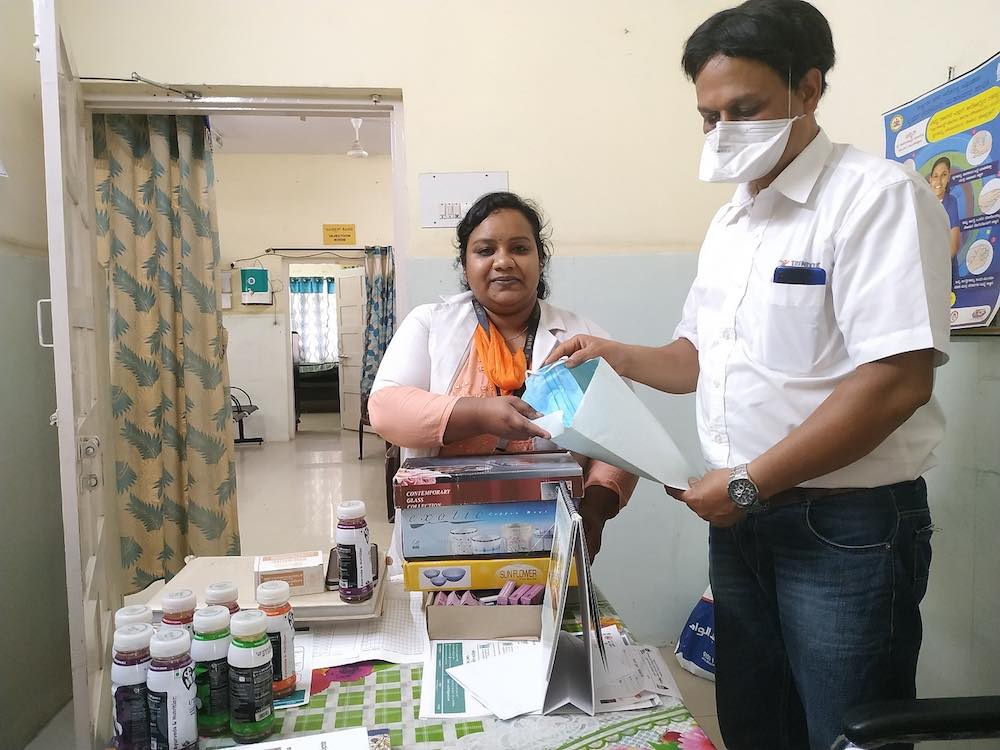
Third, are the economic consequences from measures taken to curtail the spread of the virus, including for food security. India, Pakistan and Bangladesh have experienced relatively high economic growth for several years, although this has been slowing. India’s large and relatively sheltered economy (as evidenced by its withdrawal from the RCEP trade agreement) will likely help protect it from global shocks, such as occurred in the 2009 Global Financial Crisis. Across the border, Bangladesh, which has greater reliance on trade, will likely fare less well. Pakistan, which recently needed an International Monetary Fund bailout, is also fiscally fragile.
Despite endemic food security issues among the poor, exacerbated by recent food price inflation, these countries could be relatively resilient to disruptions in global supply chains. India, Pakistan, and Bangladesh all produce overall food surpluses, helped by high tariff barriers on food imports, which makes them less dependent on global food trade than some other countries. They also have long-established systems for government supported food distribution to the poor.
Last, is regional security. The consequences of the Covid-19 crisis for security and regional relationships will likely play out over a period of years, with many unexpected second and third order effects. But these could potentially be less adverse in South Asia.
The crisis has, for example, been used by Indian Hindu nationalists who blame the spread of Covid-19 in India on the Muslim minority community, or Pakistan. Severe health or economic impacts, if they were to occur, would also likely have an adverse effect on domestic order and security across South Asia.
But the crisis could also provide an opportunity and an imperative to end run existing logjams in regional relationships. Indian Prime Minister Modi has sought to use the crisis to jumpstart paralysed regional cooperation mechanisms. India’s porous borders with neighbours such as Bangladesh and Nepal make regional cooperation particularly important for it. The Pakistan government, or its military, might also see value in using the crisis to transcend some of Pakistan’s self-created security problems with India.
China is of course the biggest unknown for the region. It is possible that the crisis (and China’s role as the origin of the virus) could worsen an already generally negative strategic dynamic between India and China. But the two countries could also choose to use the crisis to find areas for enhanced cooperation in a new and reshaped post-Covid-19 world order.
It will be over months and years that all this unfolds. But we may find that countries in South Asia, and elsewhere, demonstrate unexpected degree of resilience or may even find ways to use the crisis for their advantage.
This piece is part of a two-year project being undertaken by the National Security College on the Indian Ocean, with the support of the Department of Defence.
Cry the beloved world
STEPHEN HOWES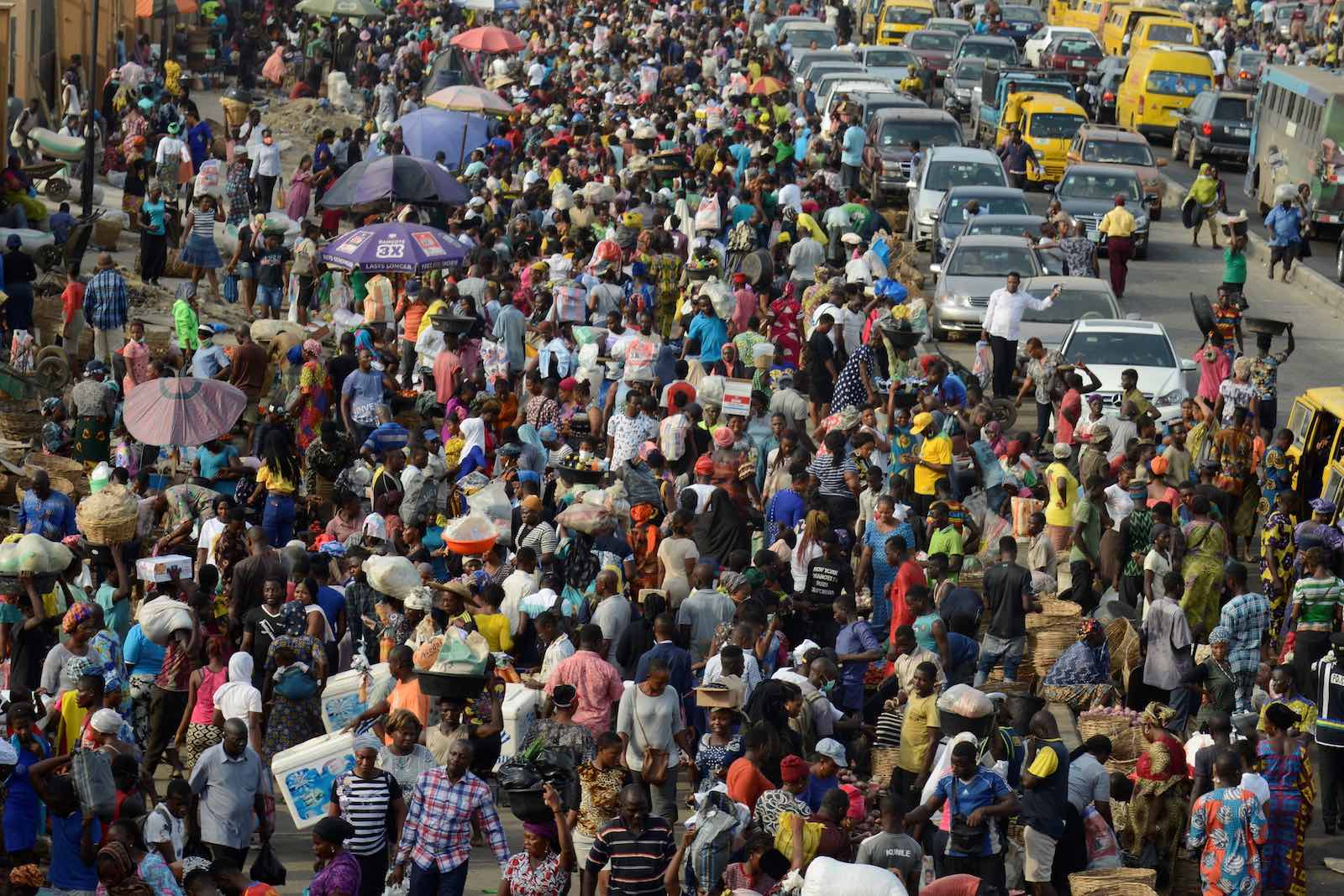 Oke-Odo Market in Lagos on 30 March as Nigeria declared a partial lockdown (Adekunle Ajayi/NurPhoto via Getty Images)Published 9 Apr 2020
Oke-Odo Market in Lagos on 30 March as Nigeria declared a partial lockdown (Adekunle Ajayi/NurPhoto via Getty Images)Published 9 Apr 2020
The first wave of the Covid-19 pandemic unfolded in China starting in December last year. We watched on with growing alarm, but thought that it wouldn’t happen here.
The second wave has been unfolding from mid-February onwards in the rich countries of the world (as well as Iran). Some have responded better than others. None are out of the woods, and the suffering in some countries has been staggering, but many now seem to be turning the corner.
Tragically, we are also now experiencing the start of the third wave, in which Covid-19 is wreaking havoc in the developing countries of Asia and the Pacific, Africa, Latin America, and the Middle East.
Out of the first 20 countries to reach 1,000 confirmed Covid-19 cases, only three were developing: China is still officially a developing country, Iran was the fourth, and Malaysia the eighteenth. But out of the next 30, 16 have been developing countries. So far, Covid-19 has overwhelmingly been a rich-country burden, with 83% of the deaths to date in wealthy countries. But the next frontier for the pandemic is at the opposite end of the global income spectrum.
One thing that will
protect developing
countries is that
they are third cab
off the rank. They
have had time to
see the damage
Covid-19 can do
even in rich
countries, and they are terrified.
Will Covid-19 rip through the most vulnerable countries on the planet and produce fatalities far in excess of anything we have seen to date? We will have a better idea of its global lethality in a couple of weeks, since by then the virus’ trajectory will, sadly, be clearer in a larger number of poorer countries.
Given the difficulties of social distancing and the weak public health systems in most poor countries, and given the number of developing countries in which Covid-19 has already made an inroad, it is hard to imagine that there won’t be at least some in which it becomes widespread. There are frightening accounts emerging from Brazil, Turkey, Pakistan, and Indonesia, to name a few. It is surely plausible that at least for some poor countries the national health effects could be catastrophic.
Then there is the fact that Covid-19 is hitting at a time when the number of displaced people is at its highest since the end of the Second World War. What if the virus takes hold in a massive refugee camp in Africa, the Middle East, or Asia?
But will Covid-19 be a global public health catastrophe? It certainly has a mountain to climb to compete with the major infectious diseases. So far, more than 74,000 people have died of the virus. Every year, about 2.4 million poor people die of diarrhea, 1.2 million of tuberculosis, 1 million of HIV/AIDS, and 600,000 of malaria.
One thing that will protect developing countries is that they are third cab off the rank. They have had time to see the damage Covid-19 can do even in rich countries, and they are terrified. Many have put in place strict containment measures, if not shutdowns, at a very early stage of spread. Some have even gone into pre-emptive lockdown, before a single case of the virus has been confirmed.
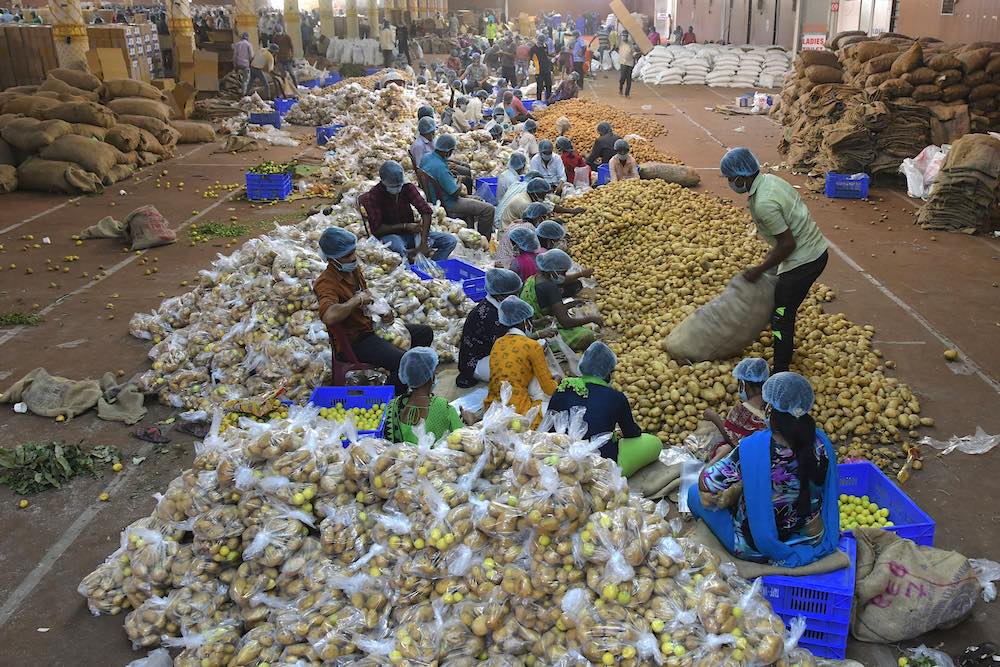
One can hardly blame countries for acting promptly and decisively, especially when they know their health systems are weak. Nevertheless, even if warranted, these measures are now devastating the livelihoods of the people whose health their objective is to protect. Unlike rich ones, many poor countries lack the safety nets and access to capital markets needed to cushion the lockdown blow. And many have weak institutions, raising the probability of unintended lockdown consequences.
Images of labourers walking hundreds of kilometres from India’s capital back to their villages are haunting. In Papua New Guinea, a fresh round of police brutality has been catalysed by the country’s state of emergency. In Solomon Islands, a boat capsized last week in bad weather, leading to the drowning of 28 passengers returning to their home villages at the advice of their government.
Widespread fatalities would obviously make things much worse, but it would be a grave underestimate to evaluate the damage of Covid-19 only in health terms. The economic and social damage being wrought by the response to the pandemic – at home and abroad – is itself catastrophic for developing countries around the world.
As the tragedy unfolds, it is not surprising that there is increasing talk of a humanitarian response, perhaps on an unprecedented scale. Whether that eventuates remains to be seen. Much of the development assistance architecture is itself shut down. Certainly, there will be additional multilateral financing, and individual bilateral efforts. But economic damage will not be enough to induce a major humanitarian response in the current circumstances. There would have to be prolonged periods of mass fatalities.
Whatever the uncertainties, there is one area where global cooperation will be critical, and that is to end the crisis. Even if countries contain Covid-19, they will be scared to relax domestic controls, and petrified to open borders again until they have some confidence that they will not face yet another outbreak. A combination of vaccines and effective treatments will be critical for allowing all countries once again to embrace economic activity both at home and abroad.
Ironically, for an era in which the irrelevance of aid has often been declared, an aid-funded international agency is playing a critical role in mobilising the funds needed for a Covid-19 vaccine: CEPI, the Coalition for Epidemic Preparedness Innovations.
Finding a successful vaccine is only the first step, and for that we shouldn’t actually need to draw on foreign aid. But the next step, and one where aid will be needed, is to distribute that vaccine. Donors will need to provide massive financial and logistical support to ensure that the vaccine, once developed, is distributed not just nationally but worldwide, and quickly. The same goes for treatments, once identified. The motivations for this will be not just humanitarian but commercial. It will be in everyone’s interests to open the world up again for business.
Coronavirus in conflict:
The fight has hardly begun
ELEANOR GORDON FLORENCE CARROT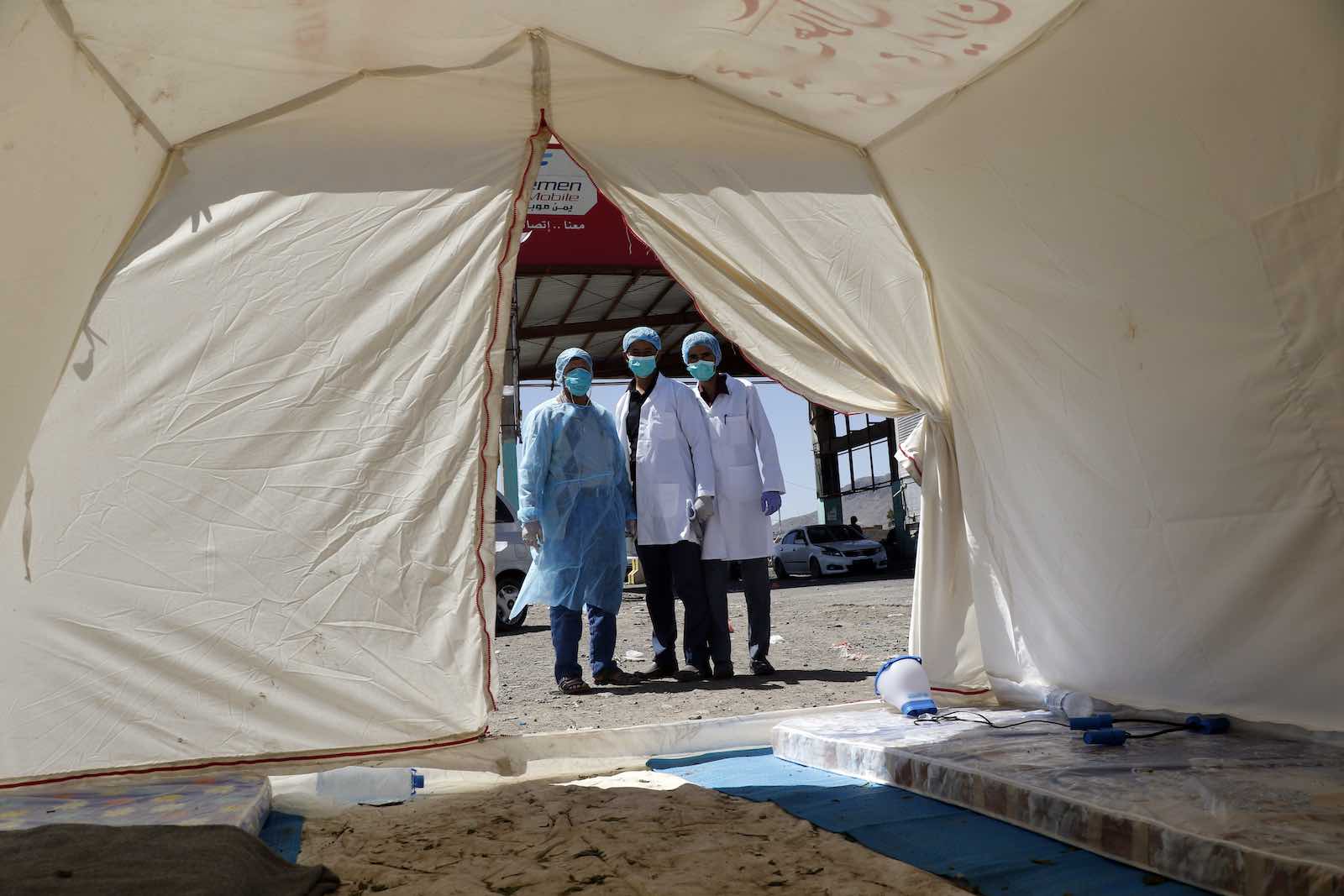 Medical personnel outside a field hospital tent on the outskirts of Sana’a, Yemen, 5 April (Mohammed Hamoud/Getty Images)Published 8 Apr 2020
Medical personnel outside a field hospital tent on the outskirts of Sana’a, Yemen, 5 April (Mohammed Hamoud/Getty Images)Published 8 Apr 2020
The War on Covid-19
In the face of the Covid-19 pandemic, the mobilising language of war is being used by leaders from UN Secretary-General António Guterres and World Health Organization Director-General Tedros Adhanom Ghebreyesus, to France’s President Emmanuel Macron and British Prime Minister Boris Johnson (now in intensive care ten days after being diagnosed with the coronavirus). While relatively stable and wealthy countries struggle to respond effectively to this threat, how will the world’s actual war zones cope?
Guterres calls for “the world to come together”, urging global ceasefires because the “only war we should be waging is the war against Covid-19”. But can Covid-19 bring solidarity and peace? Or will it bring further insecurity and violence to places already afflicted by conflict and, in turn, threaten international peace and security as these countries struggle to fight on another front?
Conflict-affected environments are especially vulnerable to the outbreak of infectious diseases, are less likely to be able to identify and respond to outbreaks, and are less equipped to stop their spread within and beyond their often porous borders.
This new “war” is becoming entangled with conflicts in Syria, Lebanon, and Colombia, and threatening to break out in the camps of millions who have fled these and other wars. In Cox’s Bazar, Bangladesh, the fear among the Rohingya in the refugee camps is amplified by lack of information and separation from support networks, and intensified by the month-long effective ban on mobile-phone and internet usage imposed by the government of Bangladesh (the same has happened in Ethiopia, amid reports of government crackdowns on the Oromo Liberation Front). In Moria camp on Lesbos, Greece, asylum seekers cannot socially distance when 20,000 people are squeezed into a camp meant to accommodate 3000, and where they must queue for hours each day for basic food supplies. In overcrowded and unsanitary displacement camps in Somalia, people feel as if they are “waiting for death to come”.
Elsewhere, it is hunger, not the virus, that is feared – a serious concern in places such as Nigeria and the Democratic Republic of Congo if people can’t go out to work or sell to get money to feed families. In parts of Syria, it is “bombs falling from the sky and kids being blown to pieces” that remains the main worry.
In Colombia, the virus is bringing with it deadly prison riots and the threat of escalating femicide. In Lebanon, a sense of dread prevails, as it does in Syria’s rebel-held north-west, among people already ill and frail, with little shelter, limited access to running water and healthcare, with little information and even less trust and confidence in authorities. And Iraq is already struggling to find enough hospital beds and to bury its dead, amid fears about how the virus is spread.
In many of these places, social distancing is difficult, water and soap are scarce, and most healthcare needs are already unable to be met. As the Médecins Sans Frontières (MSF) President has described, the concept of self-solation, and also self-care, in these contexts is a “luxury”. Hospitals have been destroyed or lack capacity and resources, including medicine, staff, and equipment. Governance structures are often weak or corrupt, economies shattered, and infrastructure destroyed or inadequate. Many people are unable to access basic services and essentials, including food, and have minimal confidence or trust in political leaders. In Iraq, for instance, a depleted healthcare system that enjoys little public trust will not be able to respond effectively if there is a serious outbreak.
For these reasons, conflict-affected environments are especially vulnerable to the outbreak of infectious diseases, are less likely to be able to identify and respond to outbreaks, and are less equipped to stop their spread within and beyond their often porous borders.
Covid-19 and ceasefires
There are murmurings that Covid-19 could contribute to bringing peace to places afflicted by conflict, as people agree to divert all necessary attention and efforts to fighting a common enemy. Indeed, that is what Guterres has called for to enable the world to focus on “the true fight of our lives”, and ceasefires were, at least initially, welcomed in Philippines, Cameroon, Yemen and elsewhere. While bigger threats can lead to cessation of hostilities, such as occurred in Aceh, Indonesia, after the 2004 tsunami, such crises of this scale tend to further undermine resilience, increase insecurity, and exacerbate the likelihood and intensity of conflict. Already, commitments to ceasefires have been broken within days and hostilities have escalated in Libya, and Yemen. Even if some ceasefires hold, the causes and effects of conflict continue and compound the risks these environments face from Covid-19.
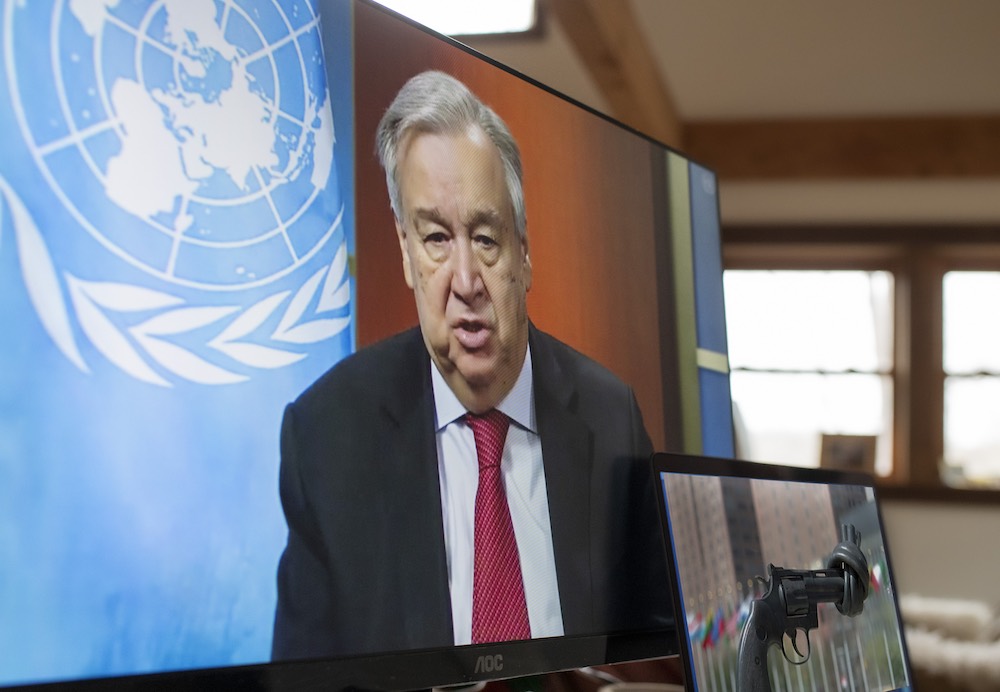
And with global attention almost exclusively on Covid-19, armed groups might seize the opportunity, as occurred when ISIS prisoners attempted to escape in Syria on 30 March, or exploit widespread fear and instability for their own advantage, as communicated by ISIS to its members in its weekly newsletter. In Afghanistan, sectarian attacks resumed, demonstrating opportunist attacks against minorities by non-state armed groups can occur when the world’s attention is elsewhere. Likewise, parties to the conflict can make political and economic gains by utilising the opportune moment presented by crises, as occurred during the Ebola outbreak resulting in heightened political tension in Guinea, Liberia, and Sierra Leone. States can also use the guise of crisis response to repress the population. There have been fears that Covid-19 responses could legitimise actions which further persecute groups, in Yemen for instance, by imposing lockdowns which prevent access to food.
Reponses to Covid-19 can also further compromise security and undermine prospects for peace, even before Covid-19 gets a firm foothold in these places, with relief efforts hampered by lockdowns and widespread travel restrictions. In Iraq, while humanitarian agencies are finding ways to respond to people’s needs remotely, many of those in need cannot be reached by phone and must travel to community centres, amid reports of arrests of those who violate the lockdown. The curtailment of humanitarian services in Iraq has also has coincided with heavy flooding in Ninewa, Diyala and Salah al-Din, which has affected vulnerable groups, including those in camp settings and compounded the humanitarian crisis. Humanitarian, peacebuilding, and broader development organisations are drawing back their work to direct resources to only what is essential and to accommodate “social distancing”. Staff are grounded staff or scaled back, and organisations face unprecedented coordination, logistical, and financial challenges.
Covid-19 as a conflict driver
Covid-19 response will undermine the ability to respond to other healthcare and humanitarian needs in conflict- and crisis-affected environments. Already depleted resources, medical staff, hospital beds, financial support, and most aid efforts will likely be directed towards Covid-19 and away from the other dire needs of people in such environments – addressing a measles epidemic in Democratic Republic of Congo, for example, which has killed over 6000 people since the start of 2019, most of whom were children. As occurred during the outbreak of Ebola in West Africa, more people will die from other diseases as a result of resources and attention being redirected to Covid-19. While Guterres has urged not to sacrifice humanitarian needs unrelated to Covid-19, when calling for a unified response to the pandemic, many humanitarian actors worry that this could happen.
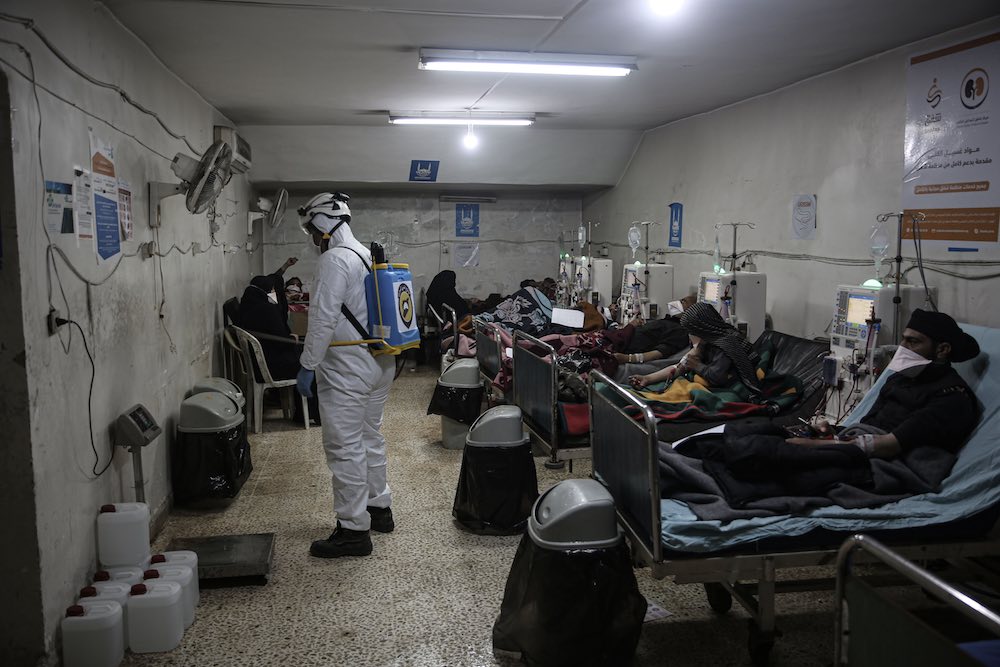
As attention and resources are directed towards Covid-19, and donors focus on the threat facing their own countries, funding is likely to be diverted or curtailed and pledging conferences rescheduled. International funding to address humanitarian and other needs will be hard to find, not just because of resources directed to fighting Covid-19, but also in the face of anticipated global recession. This will further compromise resilience and deplete resources, leaving countries less able to respond to other threats, including conflict.
Compounding these risks is the impact on conflict resolution and peacekeeping already being felt as a result of Covid-19, with unit rotations suspended, potentially compromising the effectiveness of troops on extended tours of duty. Likewise, peace talks and diplomacy efforts are also at risk as people’s attention is diverted and their ability to travel is curtailed. And as national armed forces are increasingly brought in to assist in Covid-19 response activities, nations may be less inclined to commit troops to peacekeeping missions or humanitarian response efforts.
The increasing securitisation of responses to Covid-19, including police brutality against civilians and violence against journalists reporting on lockdowns, and the severe economic shocks, including widespread unemployment and heightened food insecurity, are also increasing tensions, insecurity and violence and the potential for outbreaks or escalation of conflict or unrest.
Unless attention and resources are directed towards the needs of people in conflict-affected environments, there will be greater humanitarian catastrophes, alongside increased threats to international peace and security in the form of recurrent or protracted conflict. At the same time, it will be even harder to contain the further spread of Covid-19.
Covid-19: Refugees at risk
MAX WALDEN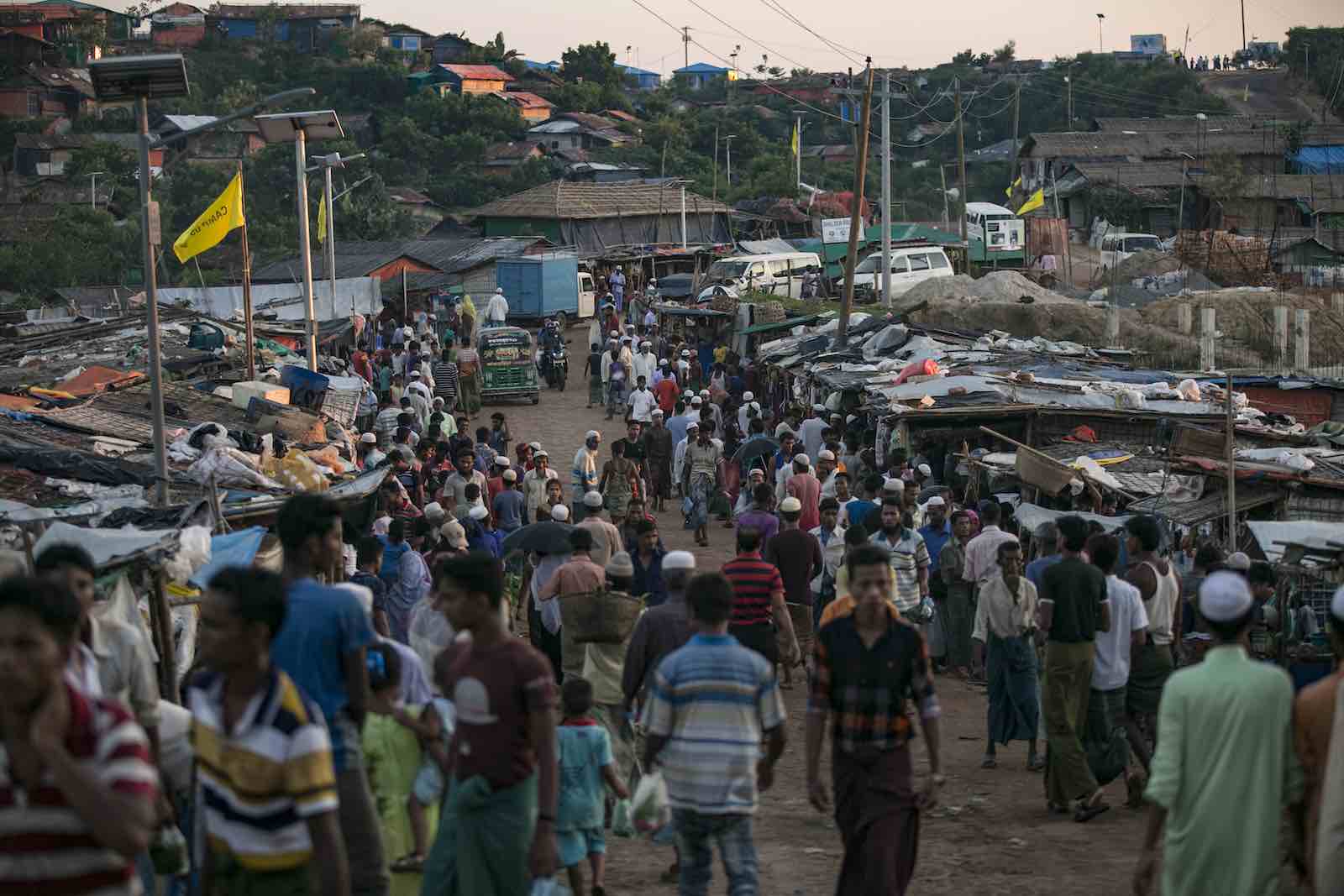 Rohingya refugee camp in Cox’s Bazar, Bangladesh, October 2019 (Allison Joyce/Getty Images)Published 7 Apr 2020
Rohingya refugee camp in Cox’s Bazar, Bangladesh, October 2019 (Allison Joyce/Getty Images)Published 7 Apr 2020
The first case of Covid-19 was detected near the world’s largest refugee camp last month. Human rights groups fear it’s only matter of time before it spreads among the roughly one million Rohingya refugees living in Cox’s Bazar, Bangladesh.
Having fled ethnic cleansing at the hands of the Myanmar military, these people exist in extraordinarily cramped, fetid conditions without access to clean water or safe sanitation. Risks to physical health and safety abound: flooding, malnutrition, gender-based violence, even rampaging elephants. According to the Red Cross, the camps have a population density of more than 60,000 people per square kilometre – one and a half times the world’s most densely populated city, Manila.
Meeting recommended social distancing and self-quarantine practices to prevent the spread of coronavirus in these conditions is clearly impossible. Moreover, in a place where a vast majority of the population is almost entirely reliant on external aid for basics such as food, Covid-19 poses even greater challenges to daily life. Aid worker access has been limited to avoid spread of the disease.
There are always ways that refugees and asylum seekers can be active contributors, not just passive victims. The coronavirus pandemic is no exception.
“The humanitarian agencies in Cox’s Bazar have already stripped back to essential-only services like healthcare and food distribution,” Athena Rayburn, a spokesperson for Save the Children wrote. A cohort of rights groups have also written to Bangladesh’s prime minister, calling for a halt to the construction of barbed wire fences around the camps and life restrictions on mobile internet – both which further reduce the availability of services and information to refugees about coronavirus prevention. Paul Spiegel from the John Hopkins Center for Humanitarian Health has called the camps a “perfect storm” for spread of the disease.
This is just but one refugee population. The UN refugee agency, UNHCR, counts 26 million refugees worldwide under its mandate. Large, vulnerable populations live in camps along the Thai-Myanmar border, in the urban slums of Malaysia, and as an underclass in Iran, where coronavirus has already caused thousands of deaths. Pakistan, Turkey, Uganda, and other countries host refugee populations of more than a million people. UNHCR has now suspended its refugee resettlement program indefinitely due to the virus, prolonging people’s waits in limbo indefinitely.
Transparency and public messaging have shown to be crucial in fighting the disease. Governments should ensure that resident populations of people seeking asylum have access to information in their own languages, to prevent spread among refugees themselves and to the wider community. In Indonesia, for example, nimble refugee-led organisations have been active in distributing Covid-19 prevention advice in languages such as Farsi, French, and Arabic. From Australia, the broadcaster SBS is providing up-to-date information on Covid-19 in 63 languages from Rohingya to Tibetan.
Nevertheless, the living conditions of many refugees around the world, whether in camps, urban settings, or detention centres, continues to make social distancing impossible. This poses the greatest threat to not only refugees themselves, but the community at large. Advocates and medical professionals say that releasing people from immigration detention and lifting the living standards of those in the community can help curb the spread of the disease.
For several years, aid groups and development experts have increasingly demonstrated the benefits of direct cash handouts to marginalised populations. One study from Kenya has shown that unconditional cash transfers can reduce poverty, boost school attendance, and – importantly – improve public health. A UNHCR cash transfer program for Syrian refugees in Jordan demonstrated that a majority of the beneficiaries used the money to pay rent, and as non-citizens, cover their out-of-pocket health expenses. Boosting contributions to the desperately underfunded UN refugee agency is an easy way for governments to contribute to Covid-19 prevention measures for refugees.
There are always ways that refugees and asylum seekers can be active contributors, not just passive victims. The coronavirus pandemic is no exception. Governments can loosen politically motivated restrictions on employment rights for asylum seekers, which economists and rights advocates alike have argued are unnecessarily cruel and expensive. This would allow them to leverage additional medical expertise. The Irish Medical Council, for example, has recommended that refugees and asylum seekers with medical training could be mobilised to provide “essential support” by taking up roles as healthcare assistants and helping in the fight against Covid-19.
As wealthy countries such as Australia look to protect their own citizens, they would do well to also remember the most vulnerable people, languishing in limbo within their own borders, in transit countries such as Malaysia and Indonesia, and indeed in countries of origin like Afghanistan or Iran. As Pierre-Alain Fridez, chair of the Parliamentary Assembly of the Council of Europe’s migration body said last week:
Our countries will overcome the Covid-19 crisis. In order to survive, we must remain humane and supportive, and so we must not forget the weakest in our society.
A global call to arms
DOMINIC MEAGHER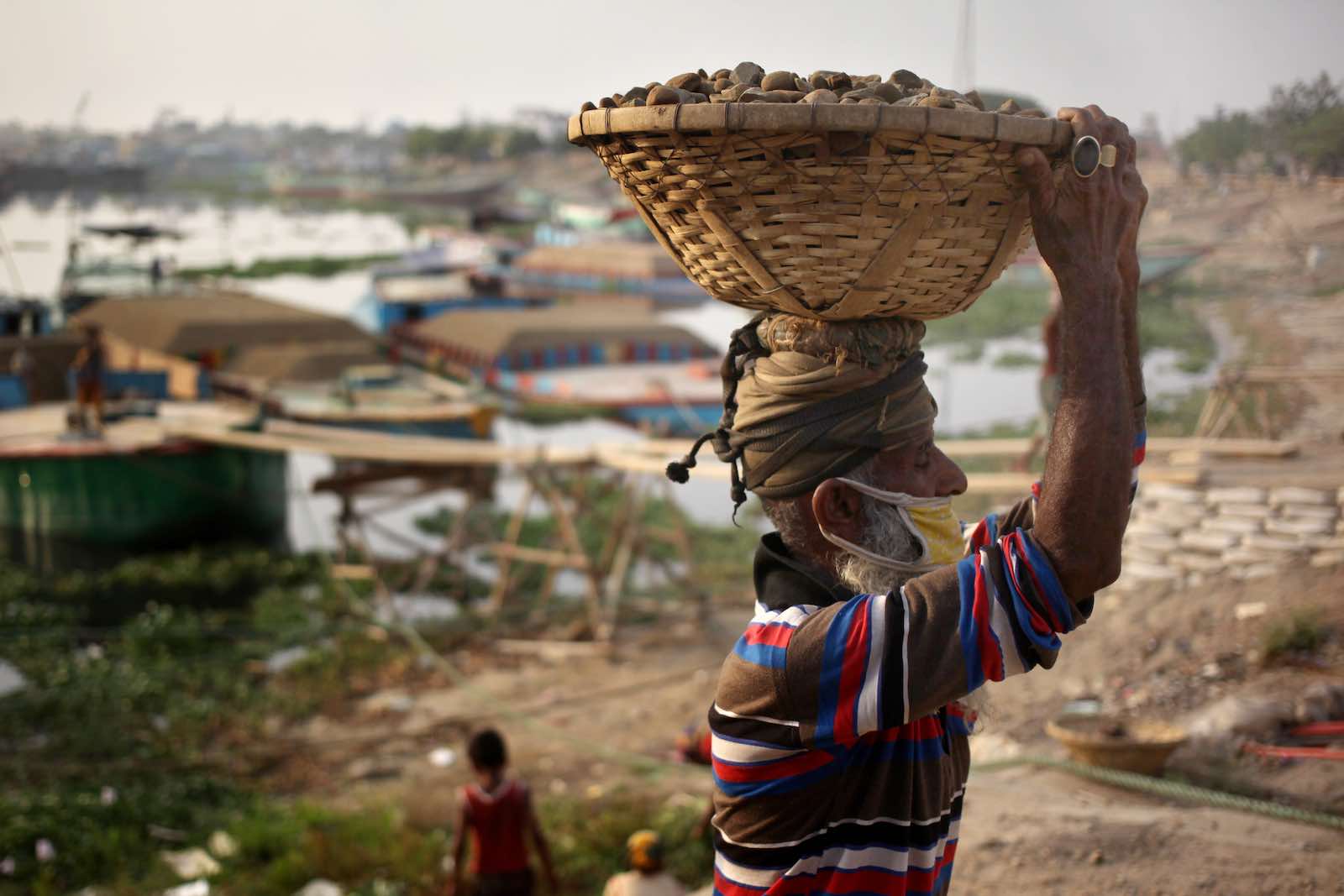 Dhaka, Bangladesh (Syed Mahamudur Rahman/NurPhoto via Getty Images)Published 6 Apr 2020
Dhaka, Bangladesh (Syed Mahamudur Rahman/NurPhoto via Getty Images)Published 6 Apr 2020
With confirmed Covid-19 cases now well past the million mark, most of the world is looking inward. Many countries feel overwhelmed by their local fight against the virus. But while some countries are just coping, others face a choice between stopping the pandemic or a famine. Most likely they will experience both. Any of us who can help, must.
Australia has joined the ranks of countries with their heads above water, led by Singapore (now under stricter lockdown), Taiwan, and South Korea, with Japan, and New Zealand. Canada and some European nations are also doing well. These countries have managed to respond just about early and strongly enough (for now) on both health and economic fronts. They all still have difficult months ahead, but other countries are in much worse positions. This is especially true for the developing world.
Imran Khan has warned that Pakistan cannot enact essential distancing measures without causing starvation. He says India, Iran, and others are facing similar or worse situations. Indonesia is fighting blind, without adequate testing. In South Africa, the government is unable to convey the urgency of health measures to the public. Zimbabwe is warning “we will starve”. Much of Africa is struggling, their health system already strained by ongoing epidemics. There are now fears that polio may re-emerge, compounding the crisis.
The US and People’s Republic of China cannot be relied upon to help: both are preoccupied blaming each other, while the US is struggling to cope with either health or economic crisis, and the PRC is focused on propaganda and opportunism.
In what can only be characterised as a “G-0” world, leadership falls to those who are willing.
Australia and New Zealand have special responsibilities toward their Pacific “family”. The announcement last week “Responding to the Covid-19 challenge in the Pacific” from Foreign Minister Marise Payne and International Development Minister Alex Hawke was welcome, but it must be the first step of many. Australian aid and development experts are asking if Covid-19 may divert resources from an already diminished development assistance budget. It must instead be a call to arms. Urgent action is required.
This is a virus that
threatens the long-
term interests and
security of people
everywhere, so it
is not a challenge
to leave for others
to deal with alone.
The International Monetary Fund has called for wartime policy measures: first to save lives and stop the pandemic, then to ensure the post-war recovery. This should begin by ensuring the IMF is not collecting loan repayments from countries in urgent need of fiscal resources as the battle continues against the virus. The World Bank launched its first Covid-19 emergency support last week. It amounts to less than $2 billion, with a plan to provide $160 billion over 15 months. Over 15 days would be better.
The core principles of the strategy for fighting Covid-19 are now well established: slow the spread of the disease with distance and hygiene, so that cases can be found and isolated. But the rest of the world needs to survive through the social distancing measures, which means food and health services must continue. And as much as possible, work cultures must be switched to a distributed model, where connections are not physical. It is essential the world emerges from this crisis stronger, and more caring than we entered it.
Human solidarity is the best way to counter the opportunists seeking to use the crisis to further personal or geopolitical agendas. This is a virus that threatens the long-term interests and security of people everywhere, so it is not a challenge to leave for others to deal with alone. It is disappointing that existing mechanisms such as the UN Security Council have not risen to meet the challenge, but this only means that others must rise in their place.
The Covid-19 pandemic poses an unprecedented challenge thanks to the connectivity of the modern world, yet with the usual leaders missing amid a retreat behind borders, it is incumbent on countries such as Australia to help spur a global response. When Prime Minister Scott Morrison declared that “if you have a job, that’s an essential job”, many laughed. But he is not wrong. Morrison was talking about the domestic economy, but internationally, Australia has a job, too, and it is an essential one. To offer leadership, not for glory, but to empower and unite with those countries that are also stepping forward. If the G20 is the vehicle of choice, Australia should ensure that each of those countries that have led in this fight are represented there. This should include Taiwan and Singapore: their hard-won expertise is needed.
The fight against coronavirus will not be a short one. At times countries will do well, while others will not, and each will be in need of help at some times more than in other moments. Those hurting least must take the chance to help those hurting most. In a pandemic, helping your neighbour is helping yourself, because the best way to stay safe from a virus is to not be surrounded by it.
Timor-Leste: The
consequences of Covid-19
GUTERIANO NEVES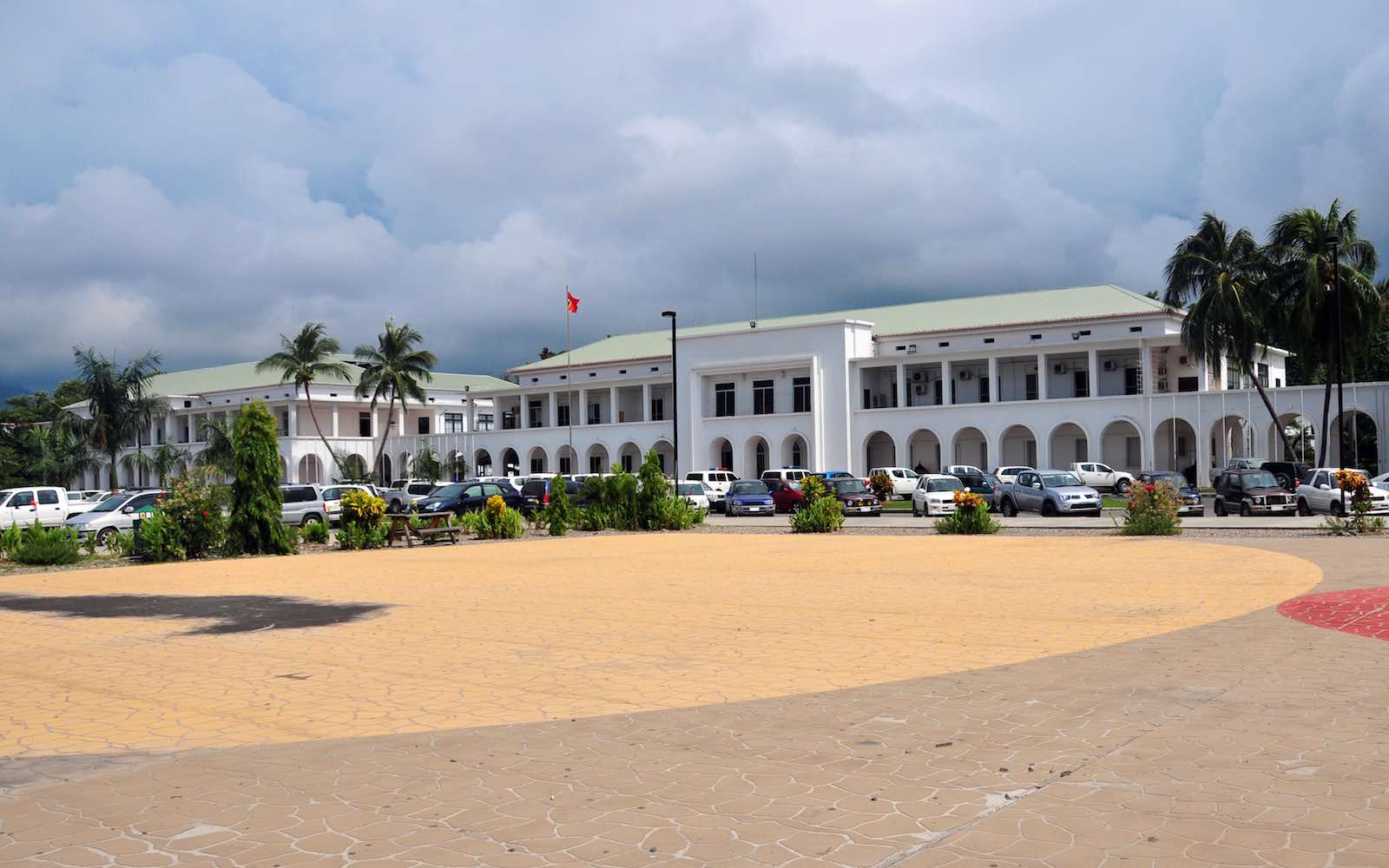 Government Palace in Dili (Getty Images)Published 3 Apr 2020
Government Palace in Dili (Getty Images)Published 3 Apr 2020
As of today, Timor-Leste has one confirmed case of Covid-19. Nonetheless, the feeling of panic among the public has been mounting. There is a valid reason for this: Timor-Leste’s public health system is under-resourced to respond to an outbreak of this scale.
Over the last one month, the government has taken several measures to prevent the spread of the virus, mobilising resources amid political uncertainty, budget constraints, and limited technical capacity. Despite the political divisions among power holders, the parliament unanimously voted in favor of President Francisco Guterres’s motion to declare a state of emergency, which came into force on 28 March. It enables the government to impose restrictions on movement, including enforcement of physical distancing. It suspends all public transport, and prohibits large gatherings and performing cultural ceremonies.
The government also requested parliamentary approval for the Petroleum Fund withdrawal of $400 million, for general spending as well as public spending to stimulate the economy. Yesterday, on 2 April, parliament approved $250 million of that request.
Media outlets are broadcasting messages to communities on prevention measures and bringing public-health practitioners to inform people about the coronavirus. In Dili, shops everywhere can be seen providing water and disinfected soaps. The Catholic Church has suspended celebration of mass across the country.
The effectiveness of prevention measures is yet to be proven at this point, but they show that despite the internal struggles concerning the legitimacy of the government, the political powers are still able to unite for the cause.
International development partners are also playing an active role. The Australian government, through the Menzies School of Health Research, is partnering with the National Laboratory to validate tests for Covid-19. The government is also requesting assistance from China and Cuba. Cuba has long been a strategic partner for Timor-Leste in the health sector. Many international agencies in the country have adopted working-from-home practices.
The effectiveness of prevention measures is yet to be proven at this point, but they show that despite the internal struggles concerning the legitimacy of the government, the political powers are still able to unite for the cause. Covid-19 has overtaken the heated political debate among the elites, although it does not erase it. But the main concern is that when the virus becomes widespread, it will overwhelm already limited capacity.
The impact of Covid-19 will not be limited to the public health sector. As certain restrictions are imposed, worldwide and at the domestic level, it affects the cycle of economic activity of the country, adding another layer to the social and economic problems that Timor already has. The country’s domestic economy depends largely on government spending of petroleum revenues. There are limited jobs available in the formal sector to absorb a growing young population.
Timor-Leste’s economy has already experienced recession since 2017, due to internal political divisions. In 2017 and 2018, the GDP declined by 3.8% and 0.8%, respectively. Value added in important sectors such as retail and wholesale, accommodations and restaurants, as well as the transport sector declined significantly, according to the 2018 National Account report. The Business Activities Report also highlights that the the income of the business sector and private sector employment have been in decline since 2016. The economy began to show signs of recovery for 2020, which the World Bank estimated at 3.9%. However, the economy already slowed when parliament voted down the 2020 budget proposal in January this year. With the Covid-19 pandemic hitting the world economy, Timor-Leste will return to recession. The most recent World Bank East Asia and Pacific Economic Update forecasted a growth rate of minus 2.8% in 2020.
This will inevitably affect employment, income, individual consumption, and the overall well-being of people. The severity of the impact of Covid-19 will depend, of course, on how long the pandemic lasts and the government’s response.
Even before the first case was confirmed and the state of emergency declared, the country’s economy was affected by the pandemic. The Petroleum Fund lost $1.8 billion due to financial market shocks, according to the Central Bank, which will affect government revenues. Tourism has been the hardest-hit sector, given the travel restrictions imposed worldwide. Although the country’s service export is small ($19.2 million in 2018), it has a direct effect on the domestic economy and people’s incomes. The retail and wholesale industry inevitably also suffer the consequences as the domestic demand for non-food items declines.
These factors will have tremendous impacts on employment in the formal and informal sectors. There are around 60,000 jobs in the private sector, which the Covid-19 pandemic and the government’s response have already put at risk. The informal sector is also not safe – it is the biggest source of income for Timorese, making up around 60% of employment. It faces a tough situation as domestic demand declines and the state of emergency continues. Around 250,000 people face losing their source of income. Given the high dependency rate, this would heavily affect household consumption. The most obvious example is in public transport service, which is privately owned. The state of emergency and the temporary suspension of school activities around the country mean that that they are losing their source of income.
No one is certain of how long this situation last, but the impacts are obvious and undisputable. It will deepen the severity of poverty in the country – not only in economic terms, but in social dimensions as well.
Double disaster: Emergency
preparedness in the era of Covid-19
JESS LEES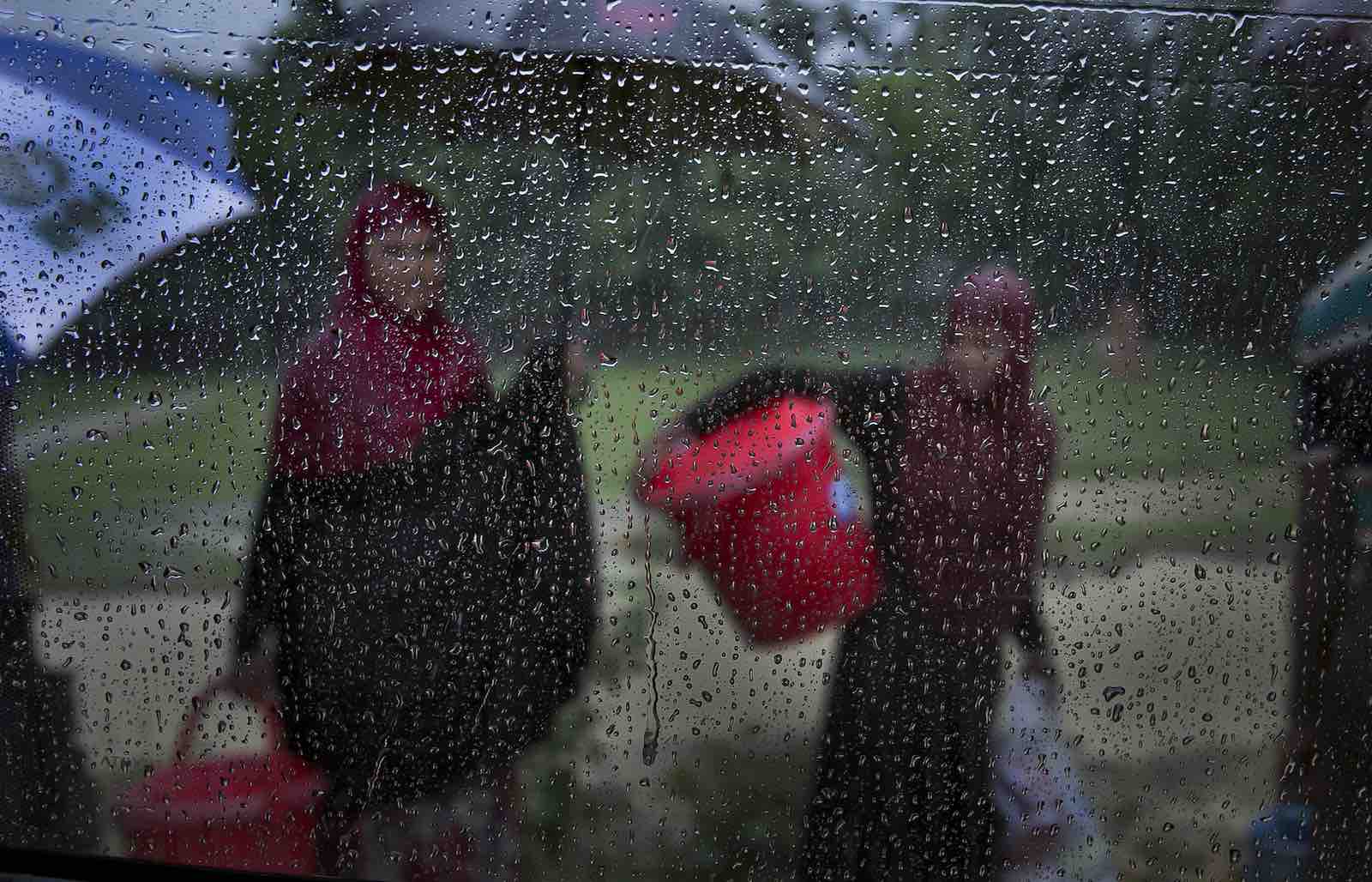 Women in Balukhali Rohingya refugee camp in Cox’s Bazar, Bangladesh (Allison Joyce/UN Women/Flickr)Published 1 Apr 2020
Women in Balukhali Rohingya refugee camp in Cox’s Bazar, Bangladesh (Allison Joyce/UN Women/Flickr)Published 1 Apr 2020
The humanitarian system is facing unprecedented uncertainty in the midst of the biggest pandemic since 1918. Over the last 10 years, the requirements for emergency relief programs have consistently outstripped resources – before the outbreak of Covid-19, efforts were aimed to address the needs of 166.5 million people in 35 countries, despite limited funding and capacity. And now, major crises, such as in the Democratic Republic of Congo, Syria, and Yemen, are seeing the potential implications of the spread of Covid-19 among highly vulnerable populations. In the coming months, existing operations will be tested further.
Yet what would happen if a new event struck somewhere in the world? As already witnessed in Croatia, where a 5.3 magnitude earthquake struck the capital Zagreb on 22 March, with the country on lockdown, a pandemic adds multiple layers to the challenges of disaster response. Emergency workers were forced to find ways to ensure that physical distancing requirements were adhered to in evacuation sites and emergency shelters.
Global restrictions on movement of people and goods and an uncertain economic climate are likely to further move the balance between international, national, and local responders, with a shift towards nationally led response.
If a large-scale disaster were to occur now, the humanitarian sector would be facing a system-wide response in the midst of a global pandemic. A situation of this scale, classified as a Level 3 response, or L3, would call for measures far beyond business as usual, even in a business attuned to unpredictability and adaptable to extremely difficult working conditions.
Existing L3 emergencies already face challenges which will be difficult to meet in the context of Covid-19. Should an event occur to make the situation worse, however, there are ways humanitarian agencies can look at reducing the impacts.
It is urgent to consider now, before it happens.
The US$2 billion Global Humanitarian Response Plan for Covid-19 comes on top of the $29 billion requirement to meet existing humanitarian needs in 2020. The 2020 appeal, which so far is only 3.9% funded, comes in the context of an impending global recession, and the possibility of reduced overseas development and humanitarian expenditures.
The Covid-19 crisis has shown that there may be new funding opportunities opening up. Donors such as China, Russia, and Cuba are providing aid to countries such as Italy. And with people forced to further embrace technology to stay connected, there are also opportunities to harness new ways of financing, such as crowdfunding, which has grown significantly in recent years.
Surge capacity in an emergency is essential. Human resources are now strained and restricted in ways not dealt with before. Reduced mobility will hamper agencies’ ability to respond quickly. Even in the event that deployments can take place, staff may have to physically isolate for 14 days – a massive delay in a life-saving scenario.
Here, too, there are possibilities. The current profusion of agency and NGO personnel working from home could enable more professionals to provide remote support for emergency response. Collaborative surge could also enhance mobilisation among agencies to support those best placed to respond.
The elements of effective humanitarian coordination – personnel, systems, and processes – are all under immense pressure. During rapid-onset, large-scale emergencies, coordination is often a major stumbling block, with an influx of new people and agencies bringing varying capability and understanding of the context. Global and national responses to Covid-19 require coordination at many levels, on top of ongoing operations. National coordination bodies already responding to Covid-19 may be unable to scale up. Restrictions on travel and gatherings could rule out meetings in person.
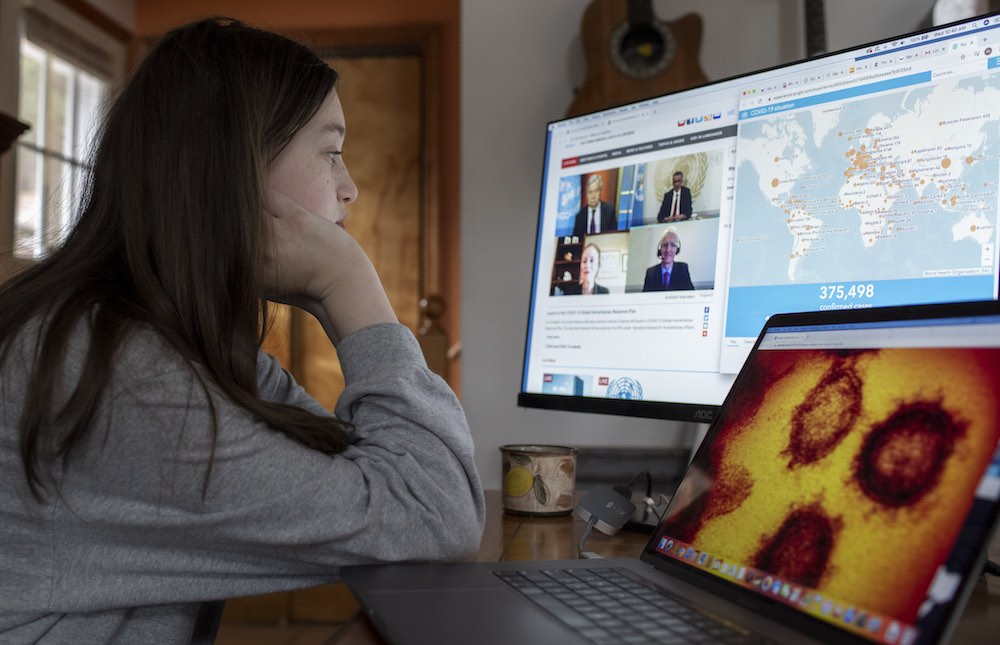
Now is the time for testing remote coordination platforms. For example, WhatsApp was widely used in Indonesia as a formal and informal communications channel following the September 2018 Sulawesi earthquake. Movement restrictions might also relieve pressure on humanitarian coordination and minimise staff overflow or duplication of coordination systems, as occurred during Typhoon Haiyan in the Philippines in 2013.
Global restrictions on movement of people and goods and an uncertain economic climate are likely to further move the balance between international, national, and local responders, with a shift towards nationally led response. Localisation is the path to national and local leadership, as well as more direct funding, but with health and emergency management systems being tested everywhere, a “double disaster” requiring system-wide response could swiftly overwhelm capacity. Regional and international support asked to augment local leadership may be limited, while local responders will bear greater operational risks, including exposure to Covid-19.
The heavy impact of Covid-19 on humanitarian supply chains and transportation would make logistics and transport even bigger obstacles in the wake of a major disaster, where critical infrastructure is often damaged and large volumes of relief items cause bottlenecks. This disruption is an opportunity for governments to increase engagement with local suppliers and to move towards cash-based responses, which can both avoid bottlenecks and enhance social protection.
Military deployments frequently provide support to relief efforts in large-scale crises, with vital assets, personnel, and supplies. But with many countries – France, Germany, Italy, Singapore, the United Kingdom, the United States, and Australia – now mobilising military forces for domestic priorities, the likelihood of countries contributing forces overseas in an emergency is low. In the event of a major disaster, national defence forces might be the face of disaster response. This should be taken as an opportunity to develop more fit-for-purpose coordination mechanisms, better tailored to the local context.
While it is critical to continue to address existing crises, humanitarian agencies also need to be prepared to step up should a major emergency occur. Covid-19 has already made evident what happens when we don’t anticipate the worst.
Australia can’t let foreign
aid fall victim to Covid-19
PHILIP CITOWICKI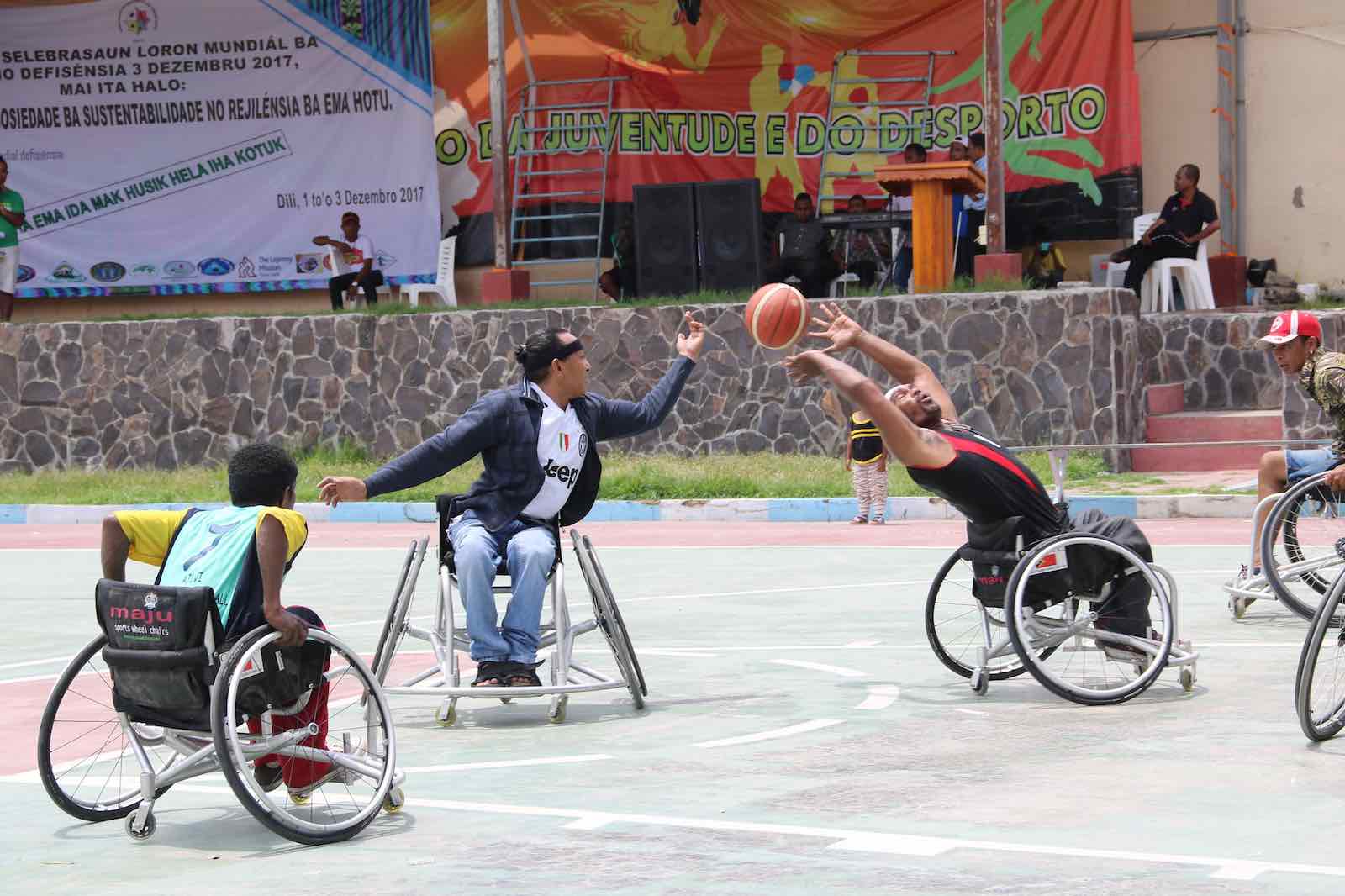 A DFAT-sponsored event in Timor-Leste to promote the rights of persons with disability, Dili, July 2017 (Department of Foreign Affairs and Trade/Flickr)Published 25 Mar 2020
A DFAT-sponsored event in Timor-Leste to promote the rights of persons with disability, Dili, July 2017 (Department of Foreign Affairs and Trade/Flickr)Published 25 Mar 2020
The Covid-19 pandemic comes precisely at a time when Australia needs to keep sight of our Pacific neighbours and to offer strategic support and help in dire times.
With the 2020–21 Federal Budget now deferred until October, gauging what Covid-19 means for the Australian aid budget is impossible. Based on the cuts it has suffered over the past decade, however, the Australian aid sector should rightly be concerned.
Australia’s aid budget now sits at $4 billion, down 27% in real terms since 2013. While the ensuing economic crisis does not bode well, the aid budget also typically falls victim to voter misunderstanding and a general ambivalence among voters.
Now more than ever, Australia’s aid and support in the Pacific region require strategic reprioritisation, with an increased emphasis on high standards and transparency in both infrastructure and humanitarian goals.
In February, ongoing redistributions of Australia’s aid contribution were flagged in Senate estimates, showing a rise in aid spending in the Pacific at the cost of support in Africa, the Middle East, and parts of South and West Asia. Spending has also been seen broadly to flow away from health and humanitarian programs towards infrastructure projects.
This growing shift is a cause for alarm. As noted in the Interpreter just last week, Australia’s largest aid beneficiary, Papua New Guinea, struggles to support the healthcare system for its 10 million citizens. PNG’s limited healthcare resources have long been teetering on the edge of crisis. Similarly, other Pacific countries suffer from stretched health services, as witnessed in the measles outbreak centred in Samoa last year.
The Australian Federal government announced in December last year a review into Australia’s aid budget. The review will seek to measure the effectiveness of Australia’s aid contribution and identify “new and emerging priorities”. Inevitably, Covid-19 will have an impact on those priorities.
The announcement came soon after the government greenlighted the Australian Infrastructure Financing Facility for the Pacific (AIFFP). The $2 billion initiative is focused on boosting infrastructure developments through grant funding and loans in the Pacific.
Analysts have framed the AIFFP through a geostrategic lens, seeing the AIFFP as a counter to the rise of the easy-access lending practices for infrastructure projects offered by China in the Pacific, which have provoked questions about transparency, military influence, and economic coercion.
Now more than ever, Australia’s aid and support in the Pacific region require strategic reprioritisation, with an increased emphasis on high standards and transparency in both infrastructure and humanitarian goals. The repercussions of Covid-19 will disproportionately burden our immediate Pacific neighbours, whose capacity to manage a crisis of this scale is severely limited.
Unfortunately, outside of AIFFP, Australia’s aid contribution has had few flag bearers in the federal government’s Expenditure Review Committee. Neither former Foreign Minister Julie Bishop nor current Foreign Minister Marise Payne have sat on the exclusive and male-dominated committee.
Without a strong advocate to protect it from the swinging axes, the aid budget has also suffered as its palatability in some electorates has soured with the rise of populist rhetoric and misinformation – which in turn has leveraged a general misunderstanding among Australians about the real size of the budget and the influence and effectiveness of the programs it funds.
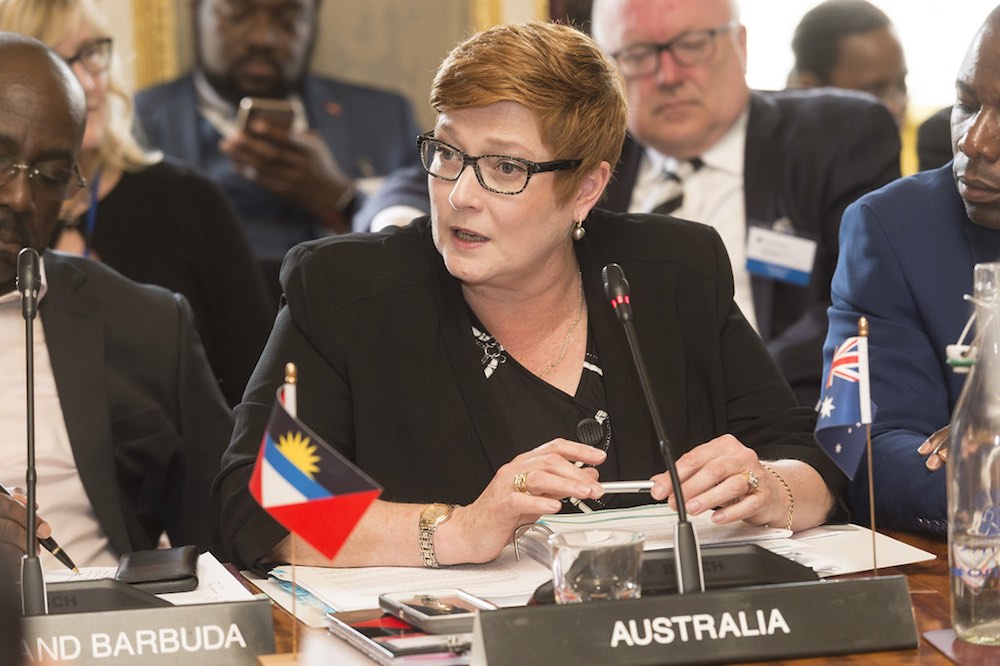
The 2019 Lowy Institute Poll found that Australia’s foreign aid contribution was the only policy area in which more Australians said spending should be decreased rather than increased. However, it also found respondents to be greatly misinformed about aid spending. Earlier polling found that on average, it was believed by Australians that 14% of the national budget was spent on aid, and that it should be at 10%.
In reality, it sits at 0.8%.
This comes at a time when like-minded nations of similar size and influence have stepped up their aid spending – including the United Kingdom.
The toxicity of the political debate surrounding Australia’s aid budget, instigated by political fringe parties, has served only to increase the potential political cost of making any substantive changes. One Nation, for example, have called it their “moral duty to redirect the foreign aid budget”, while banging the populist drum with misinformed facts and figures.
The eventual outcome of the aid review will importantly need to “convince Australians that our investment overseas is money spent for them, not money taken from them”, as outlined by former Assistant Minister for International Development and the Pacific Senator Anne Ruston.
Very few Australians would change their vote due to changes to the foreign aid budget, but even fewer in such testing times. Therein lies the problem. The government is acutely aware that it stands to gain or lose very little politically by either increasing or cutting the aid the budget.
As a result, it has suffered from year-on-year cuts, forcing the Department of Foreign Affairs and Trade to attempt to achieve more with less for the best part of the last decade.
Australia has a strong history of coming to support our Pacific neighbours in times of need. As Australians have begun to come to grips with the new challenges Covid-19 forces on us at home, we must not lose sight of our Pacific neighbours.
Philippines: Covid-19 will
devastate the poor
SHEILA CORONEL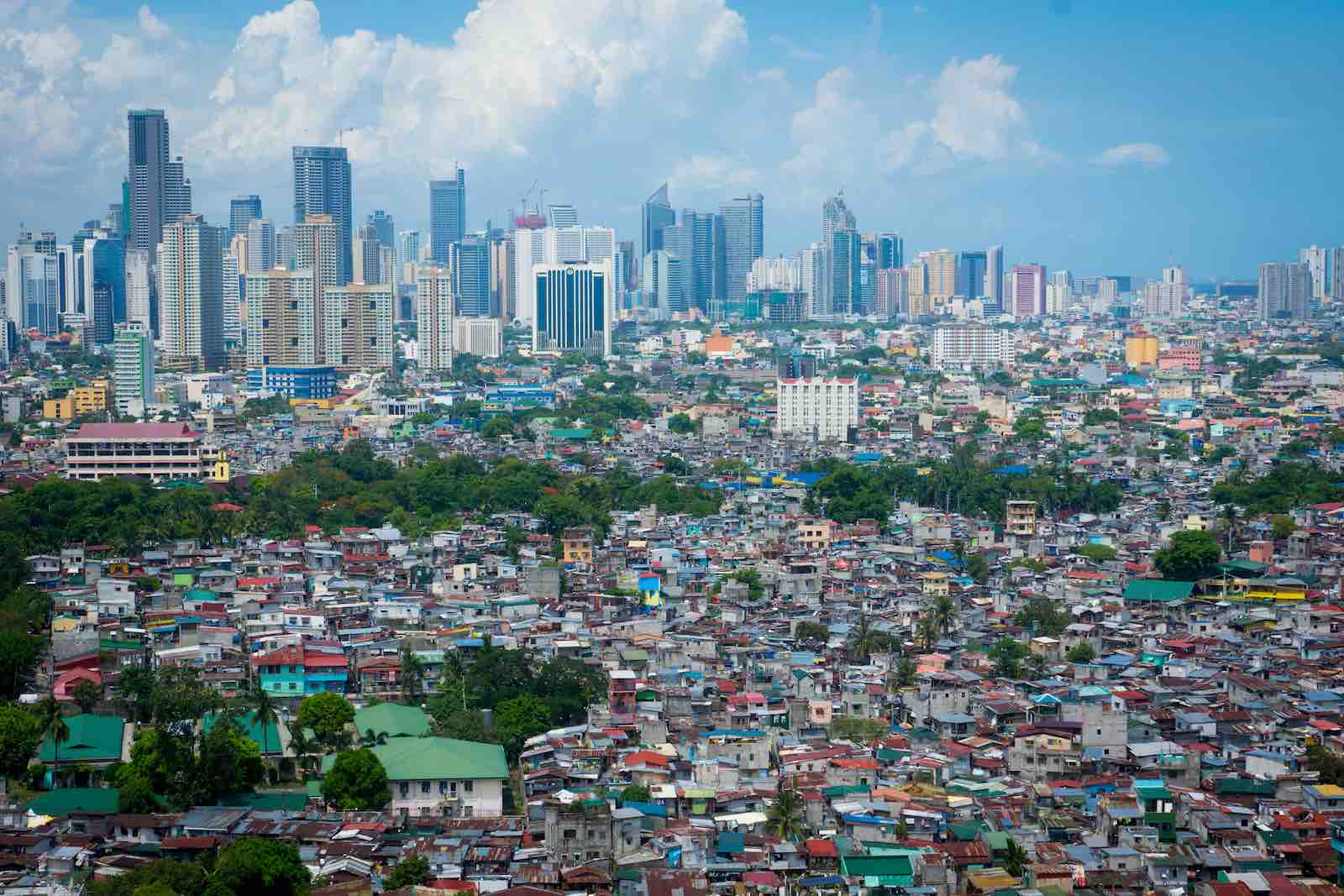 Manila, Philippines (Pavel Sinitcyn/Getty Images)Published 24 Mar 2020
Manila, Philippines (Pavel Sinitcyn/Getty Images)Published 24 Mar 2020
Flaviano Villanueva was in tears last Thursday. It was day five of the “enhanced community quarantine” in Metro Manila, where the priest runs a homeless centre. The sprawling Philippine capital of 13 million people had been sealed off, and police and army troopers were guarding municipal boundaries to prevent entry and exit. Businesses were shuttered, and public transport was scarce.
Early that morning, dozens of homeless people lined up on the street outside the Kalinga (Care) Center, waiting for the doors to open. They stood 1.5 metres apart, in line with the government’s guidance for the quarantine at that time. But the head of the barangay, or village council, who had not been happy having the centre there, ordered the it shut and drove the homeless away.
“The barangay captain said they were just following the law, no mass gatherings,” Villanueva said. “But the first law is to save lives. These are among the first people who are going to die.”
Shacks no bigger than a flatbed truck house large families whose members sleep side-by-side on wooden or cement floors. In the slums, where people are packed like bees in a hive, there is no such thing as social distancing.
In Manila, as in many other places, the Covid-19 pandemic is hitting the poor the hardest and exposing the gaping inequities in access to food, shelter, and health care. On 15 March, after a surge of new Covid-19 cases, President Rodrigo Duterte declared a month-long quarantine in the capital. He also mandated an 8pm to 5am curfew, deployed the police and the army to man checkpoints, and ordered the arrest of those who violated the law. Two days later, the quarantine was expanded to include the whole of Luzon island, home to 60 million people.
Whether fighting crime, tamping down Islamic extremism, or battling a pandemic, Duterte rules with a heavy hand, and with little care for the consequences. His repertoire is narrow – the iron fist, not the velvet glove.
To be sure, few disagree that restrictions are needed to deal with the pandemic. But they took the country by surprise. With little warning, millions who eke out a hardscrabble existence in the city’s underground economy were left without any means of support as businesses closed and people were ordered off the streets. The government focused on enforcing the quarantine; little thought was given to mitigating its impact on the most vulnerable. While cops and soldiers were out on the streets, social workers were told to stay home.
It’s classic Duterte. On day one of his presidency in 2016, he ordered the police to conduct raids that killed thousands of suspected drug users and sellers in the shantytowns in Manila and other big cities. Little heed was paid to drug rehabilitation or to alleviating the misery and joblessness that drove the poor to the drug trade.
In 2017, the Army’s siege of the southern city of Marawi, then held by Islamic militants, killed nearly 1200 and displaced more than 350,000. Today, thousands are still in unsanitary refugee camps as government efforts to rebuild the ravaged city have sputtered.
Back in Manila, the pandemic threatens to break the already frayed fabric of families and communities that had not yet recovered from the war on drugs. Danny Pilario is a priest who has been ministering to the poor near the Payatas garbage dump in the northern part of the capital. Last week, he was busy trying to organize food and supplies for the widows of drug war victims and their neighbours.
Payatas is in the “red zone”, as there was a Covid-19 outbreak nearby. Policemen and village watchmen were manning checkpoints there, and only those with a quarantine pass were allowed in, making it difficult for non-residents to bring in supplies. Pilario sent money instead, so the families could buy rice and other goods in the markets nearby.
Pilario hopes he can keep these subsidies going. Even in the best of times, he said, the poor of Payatas earned barely enough for three meals. Now unable to work, they had no savings to tide them over. Many had already lost breadwinners to the anti-drug campaign.
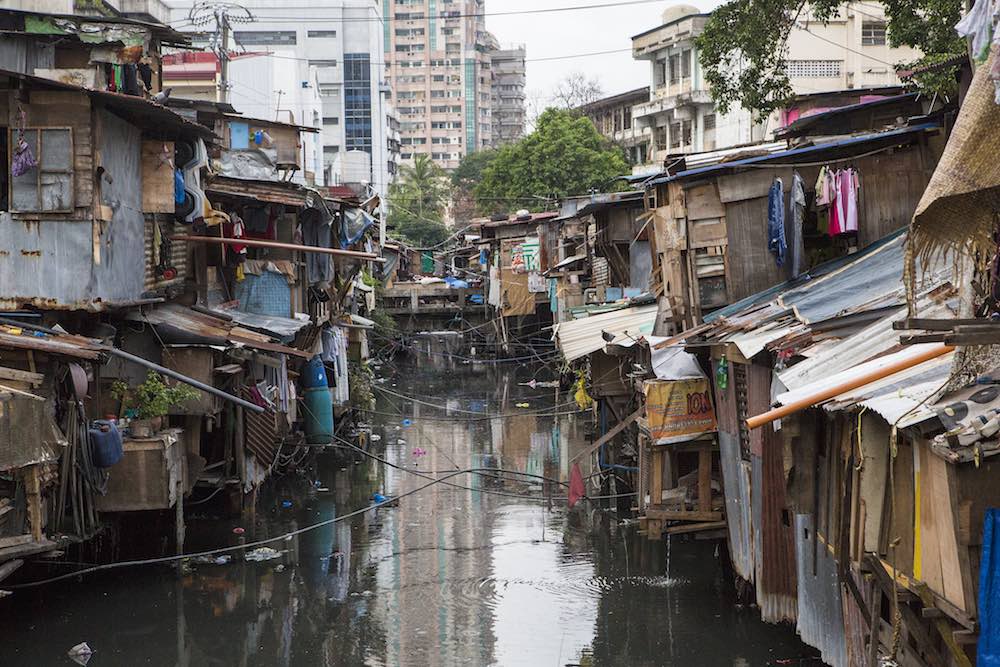
Manila’s poor live in crowded settlements near government offices, shopping malls, or wealthy gated enclaves, yet they receive scant attention and support. When the drug war started, many Filipinos were oblivious to the carnage. Pilario said he found out about the killings only because of the stench of a rotting corpse in a shanty near the chapel where he said mass. The family did not have enough money to bury the dead man who had been lying in a wooden casket for weeks.
Those who work among the poor fear the havoc the coronavirus will likely wreak in Manila’s shantytowns. Many there don’t have running water, said Pilario. How can they even wash their hands? They can barely afford to eat, much less buy hand sanitisers. Shacks no bigger than a flatbed truck house large families whose members sleep side-by-side on wooden or cement floors. In the slums, where people are packed like bees in a hive, there is no such thing as social distancing.
For now, there’s a patchwork of efforts by local governments, churches, civic groups, and ordinary citizens trying to do what they can. Companies are donating food and supplies. An actress has called for donations for street vendors who can no longer peddle their wares. A restaurant has opened its doors to the homeless, as have some churches and Catholic schools. Many groups are organizing donations, braving checkpoints, and overcoming government limits on food purchases to help the neediest as the government scrambles for a response. Filipinos are used to natural disasters and have pre-existing networks that are able to respond quickly to emergencies.
But time may be running out. In February, the first confirmed coronavirus cases surfaced, all of them traced to travellers from Wuhan. Duterte played down the threat of contagion, saying Filipinos had natural antibodies that would shield them from infection. Now he is buckling down and on Monday asked Congress for emergency powers to deal with the pandemic.
Five years ago, Villanueva opened the homeless centre in an unused office next to where his religious order, the Society of the Divine Word, had a shop selling crucifixes and statues of the Virgin Mary. He envisioned a place where the poor would be treated with dignity and respect. The centre served 200 to 300 each time it opened its doors, as the homeless from around the city streamed in from early morning to mid-afternoon to get a hot meal, a shower, and fresh change of clothes. The centre also arranged for some of them to get access to alternative schooling while drug users were provided counselling and offered rehabilitation.
“I went all around Manila to buy oranges for them, and we were ready to give them vitamin C, a litre of water and N95 masks after they showered,” Villanueva recounted with regret in a phone call on Thursday evening. “We cooked adobo (chicken and pork stew), ukoy (fried shrimp and grated papaya), and sinandomeng (good quality rice) for them.”
On Saturday, he tried to reopen the centre but was again barred from doing so. Instead, two Catholic universities agreed to house the homeless. Some of the reformed drug users are now helping run these sanctuaries. They are good for now, but for how much longer?
“If the poor go hungry”, Villanueva warned, “chaos would follow”.
